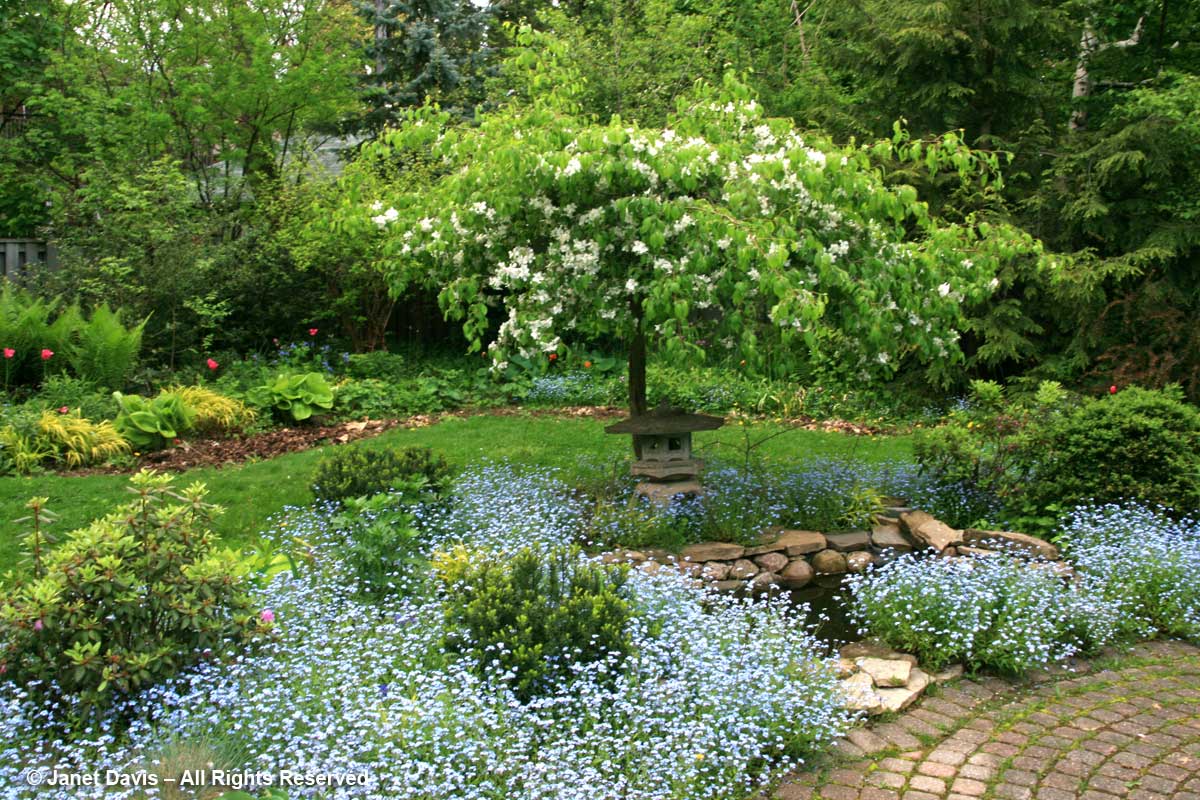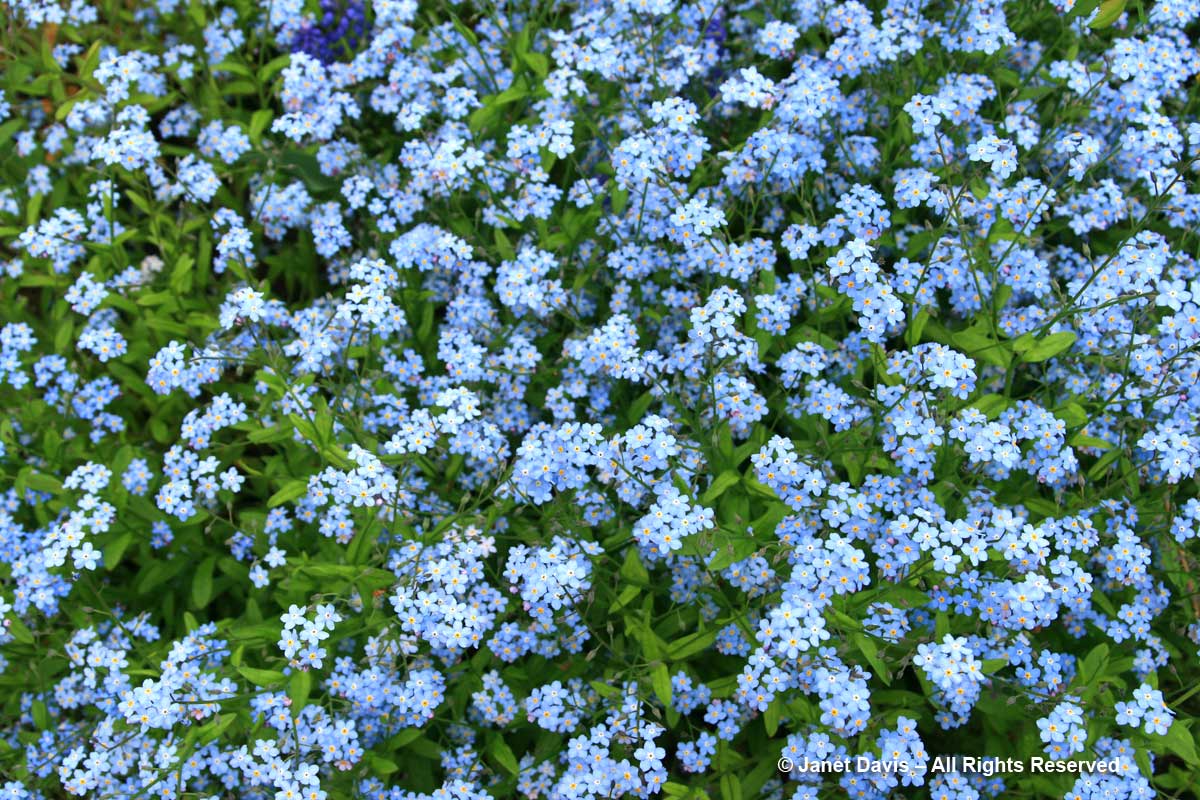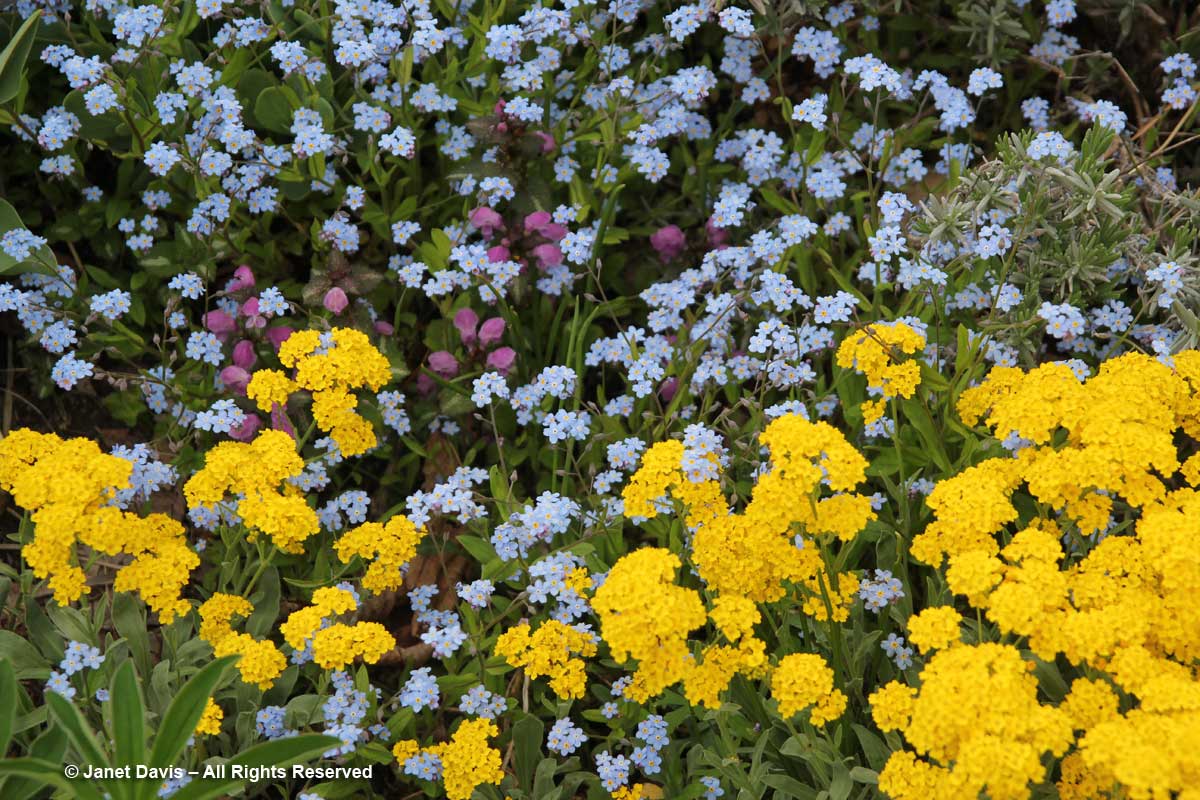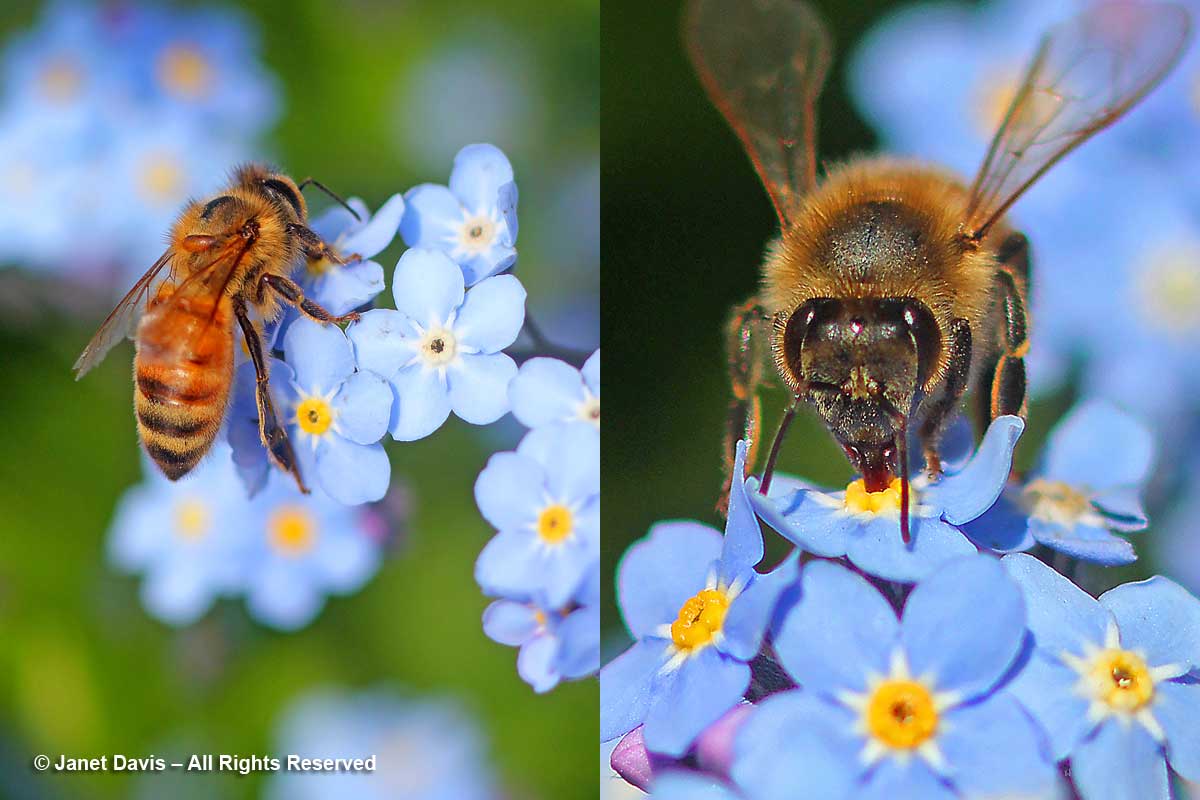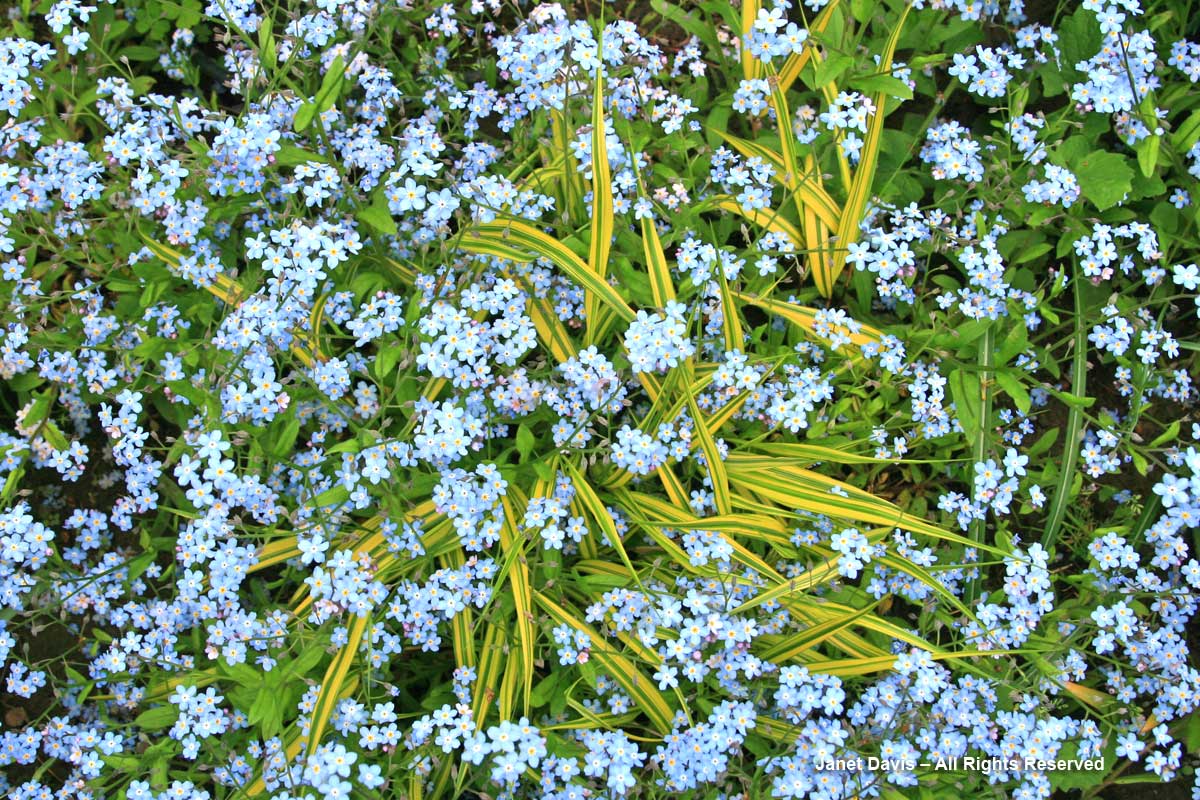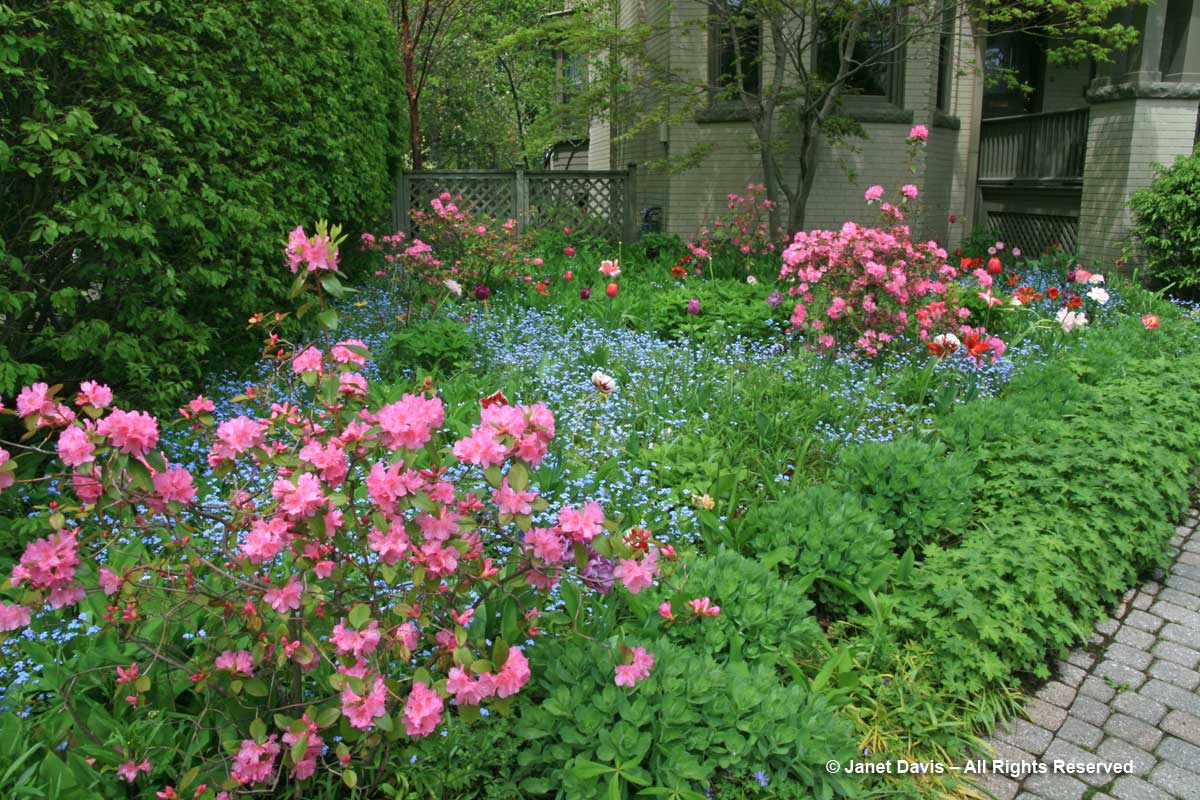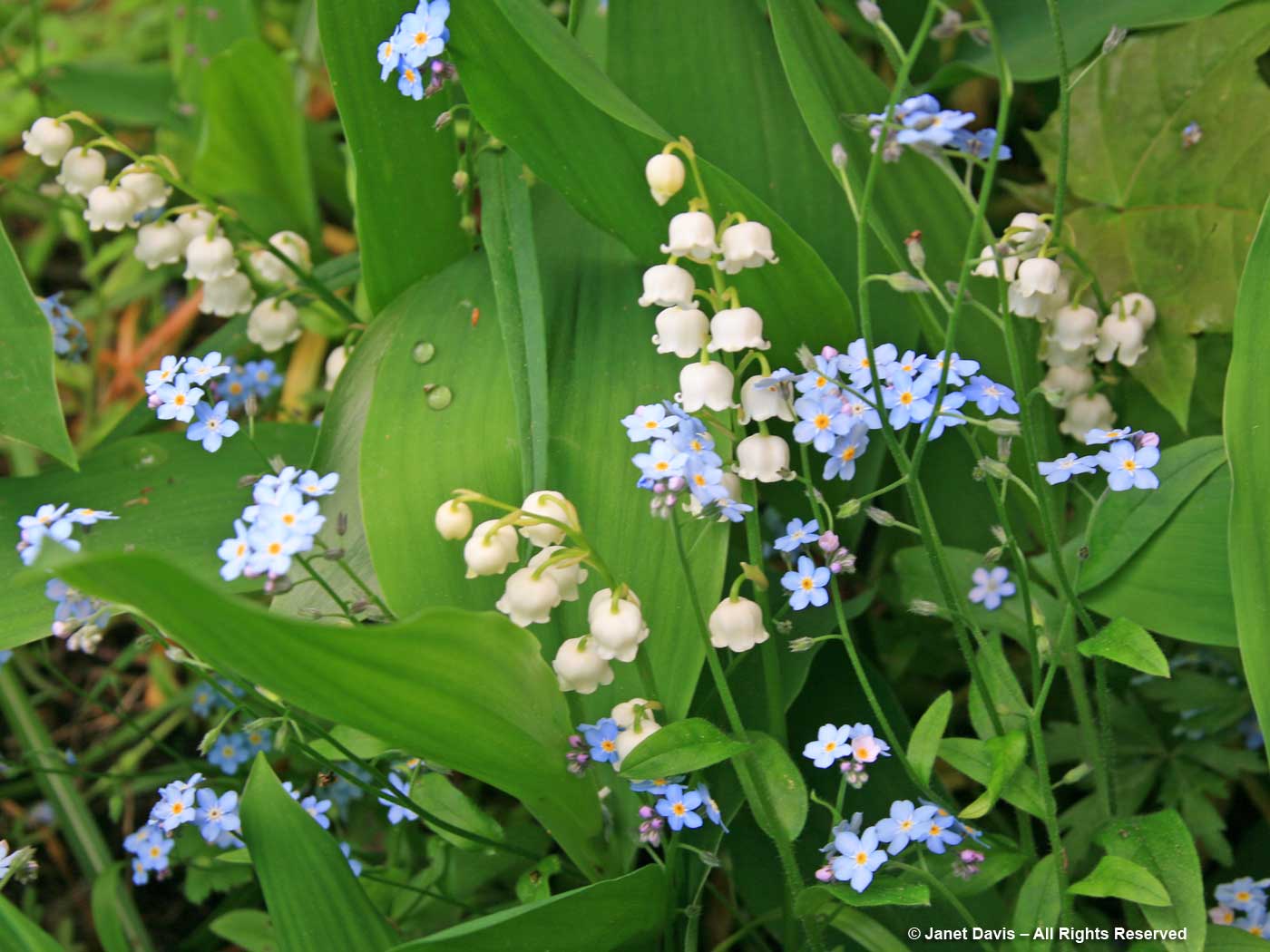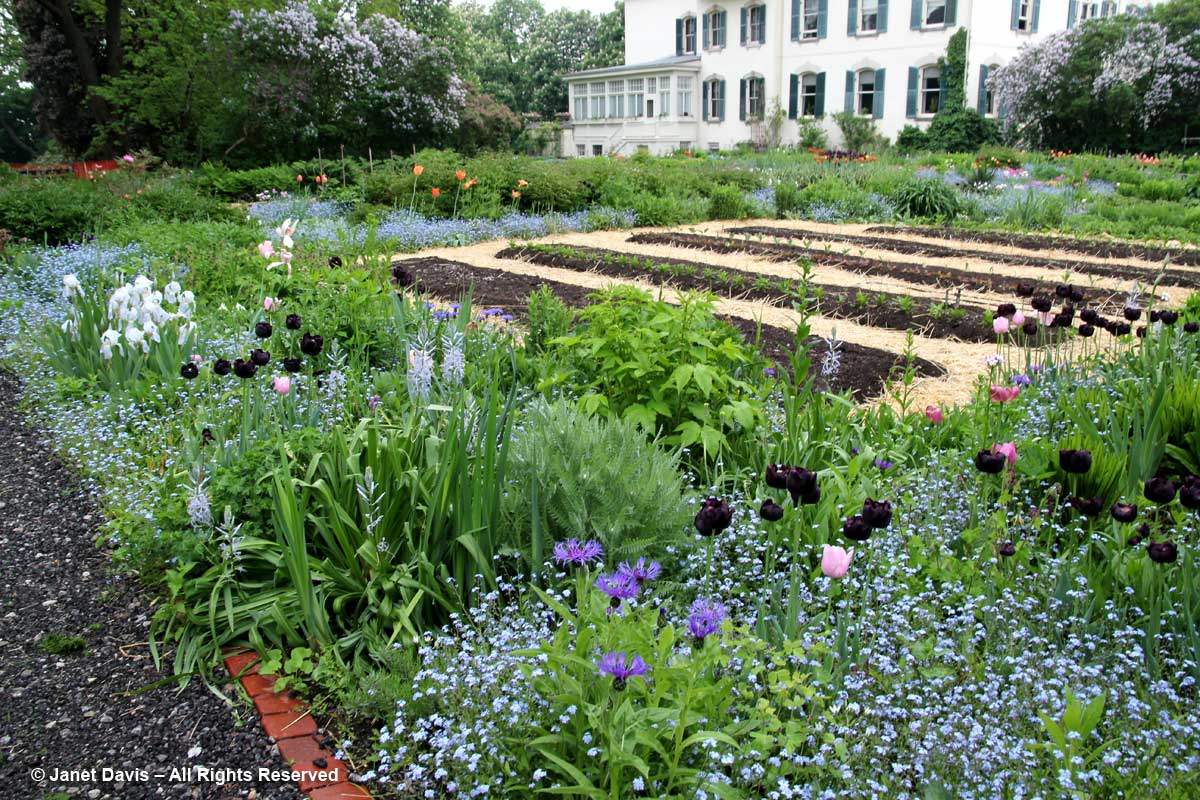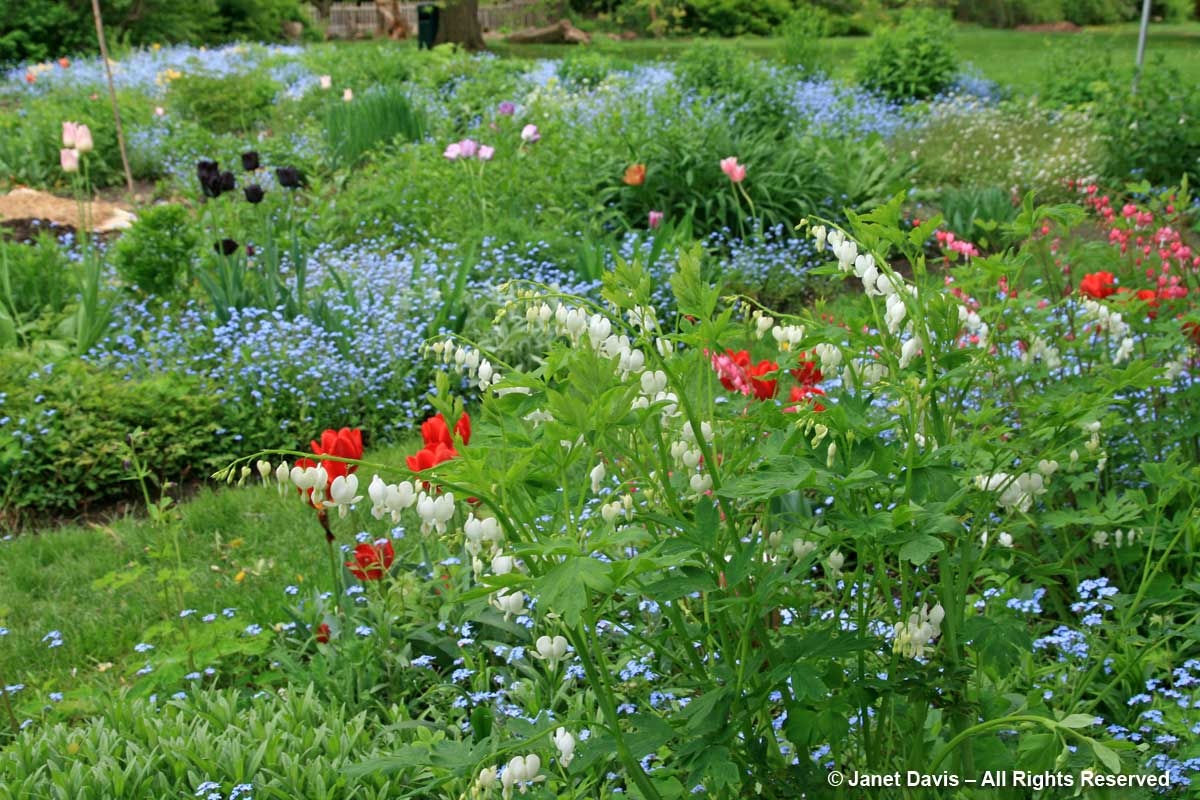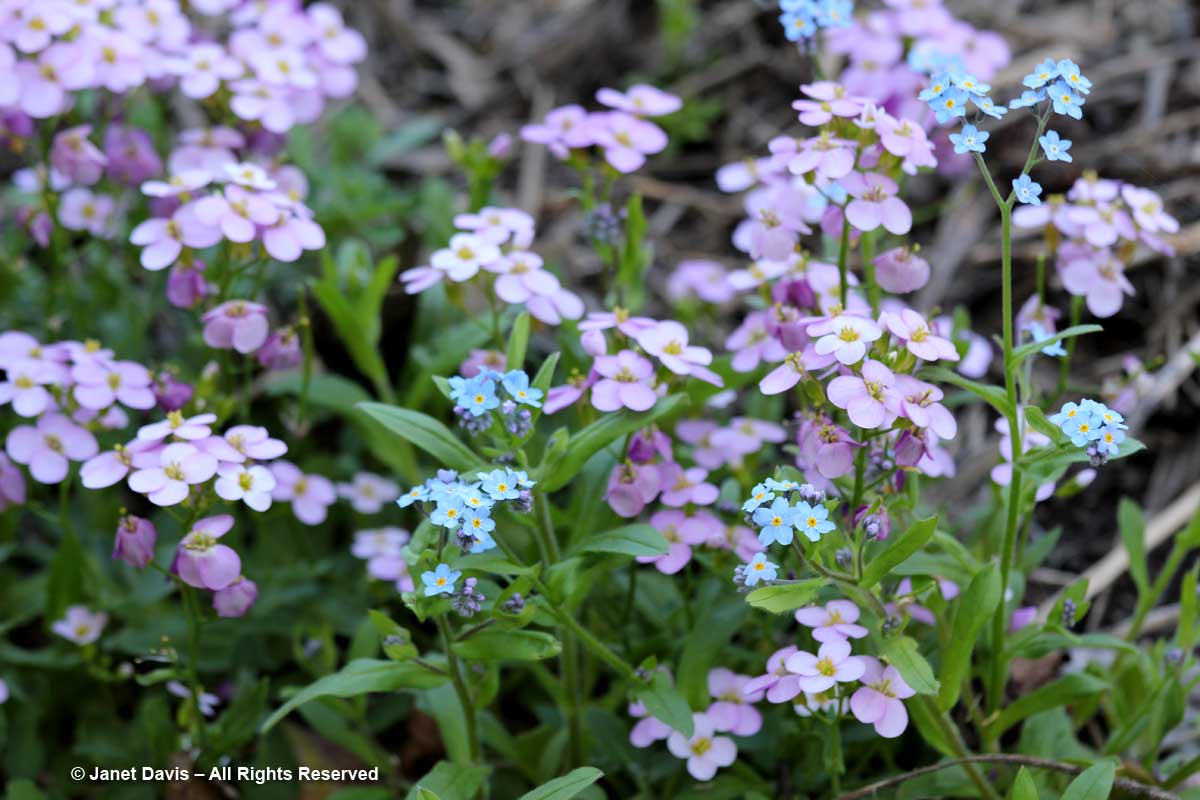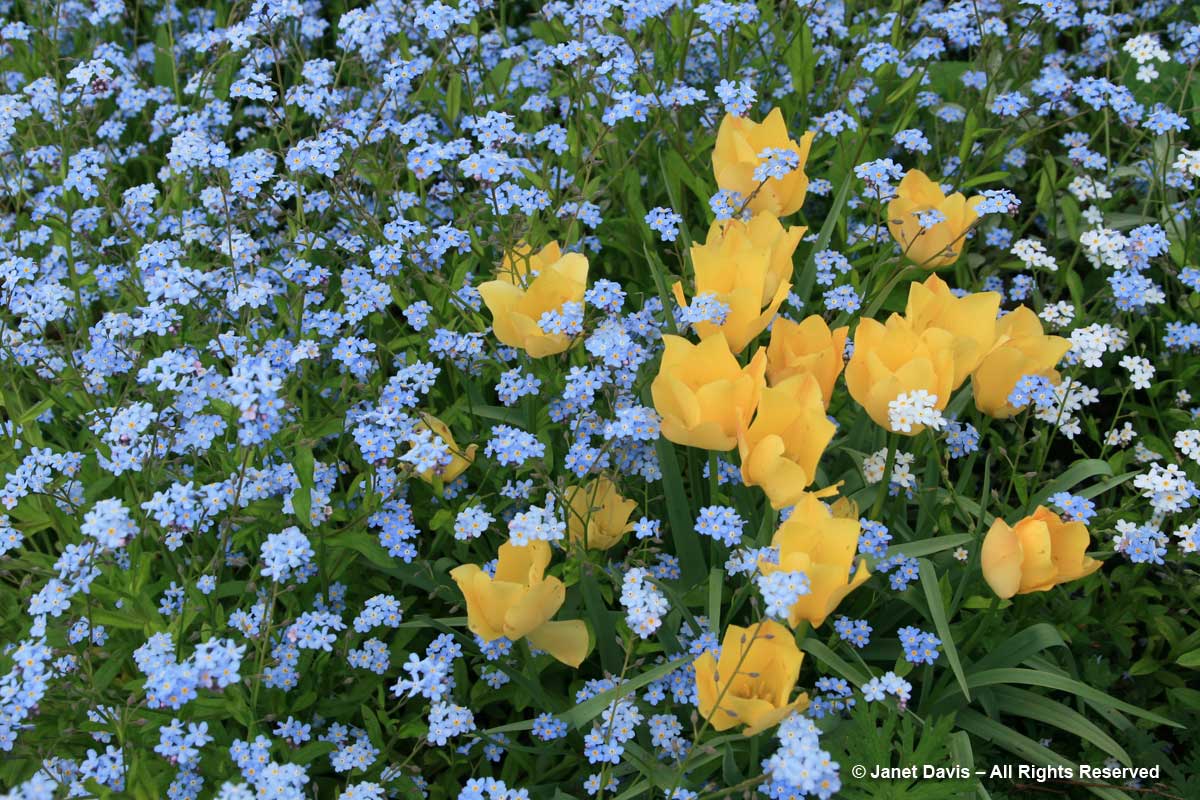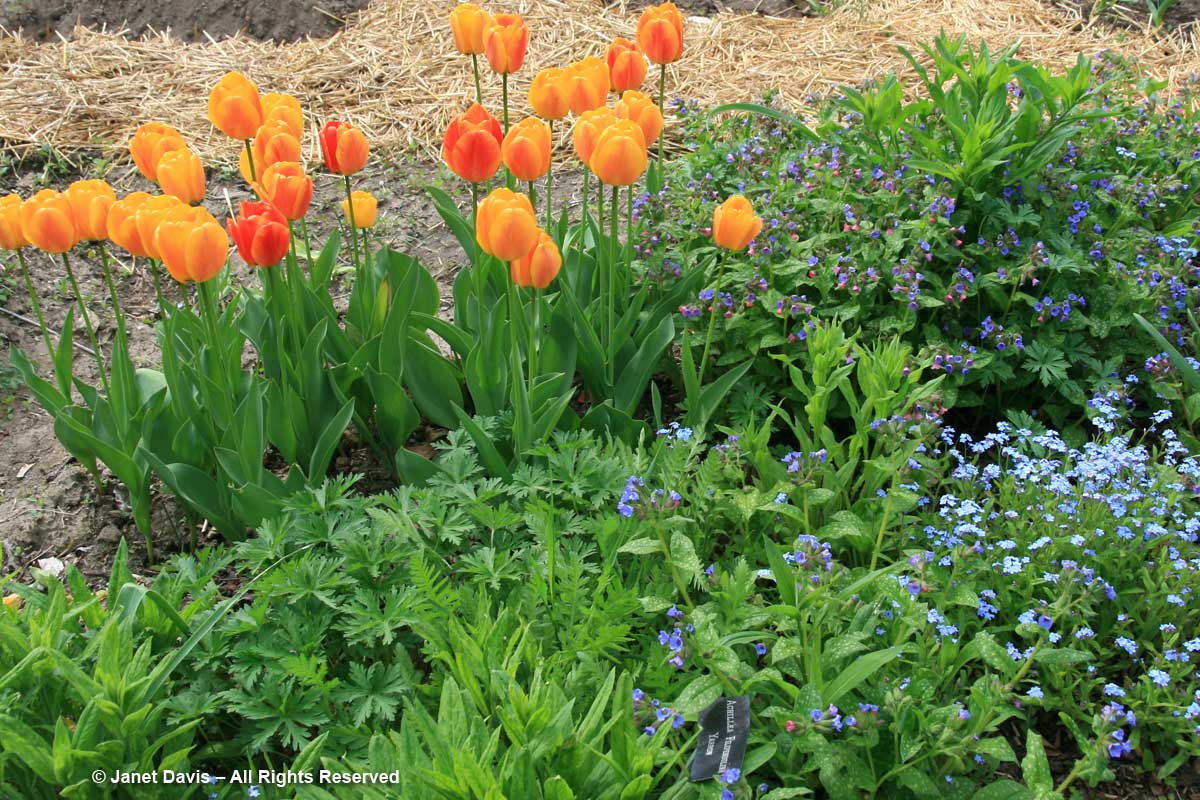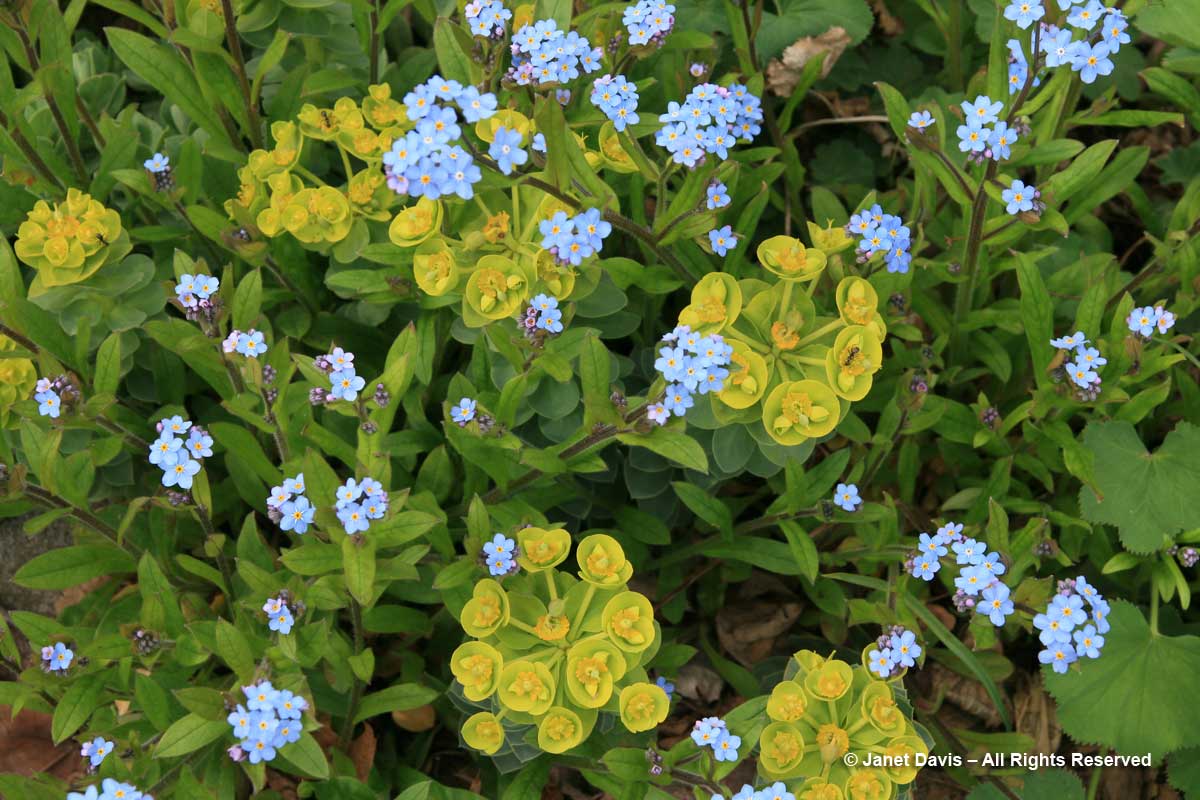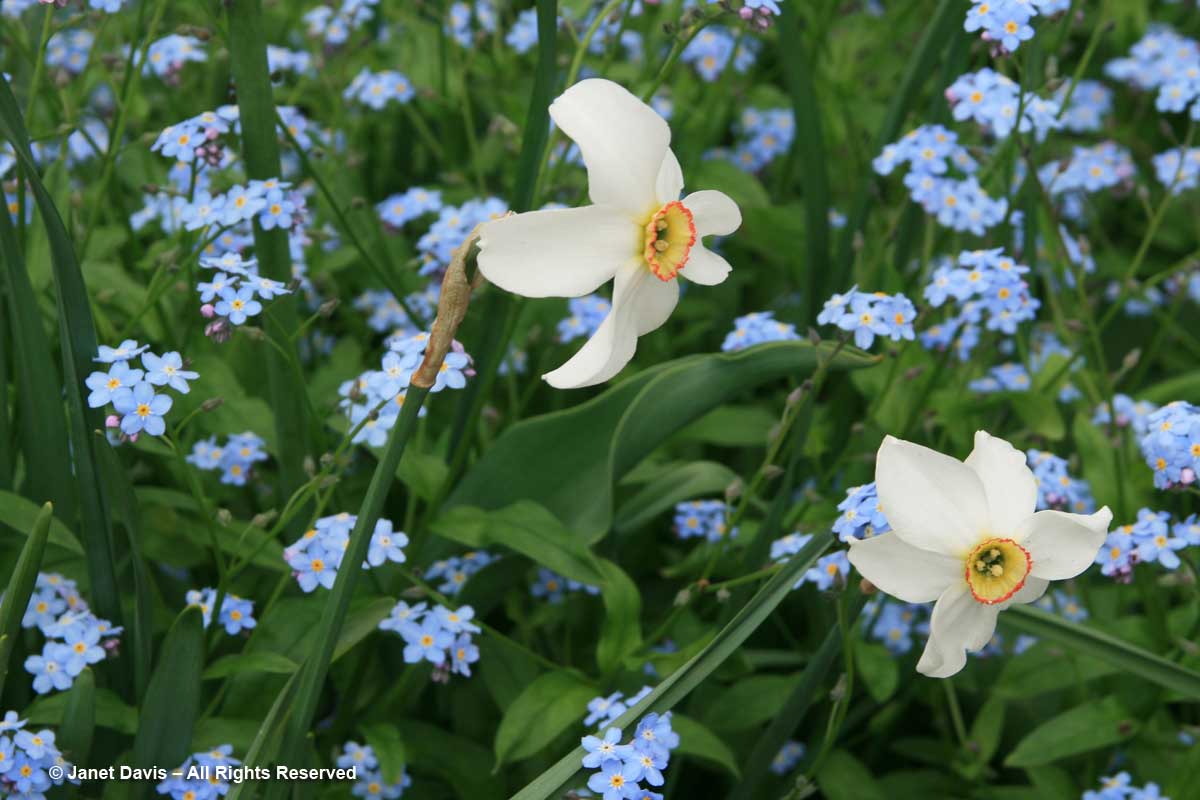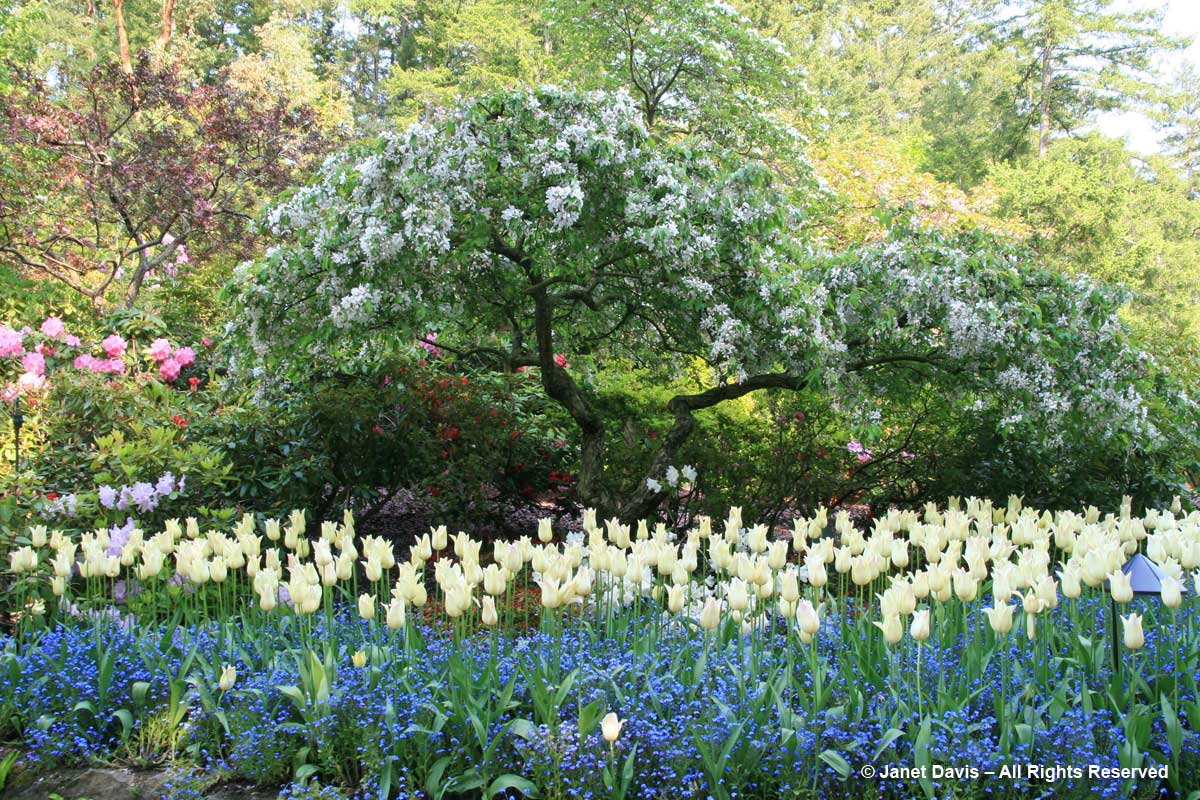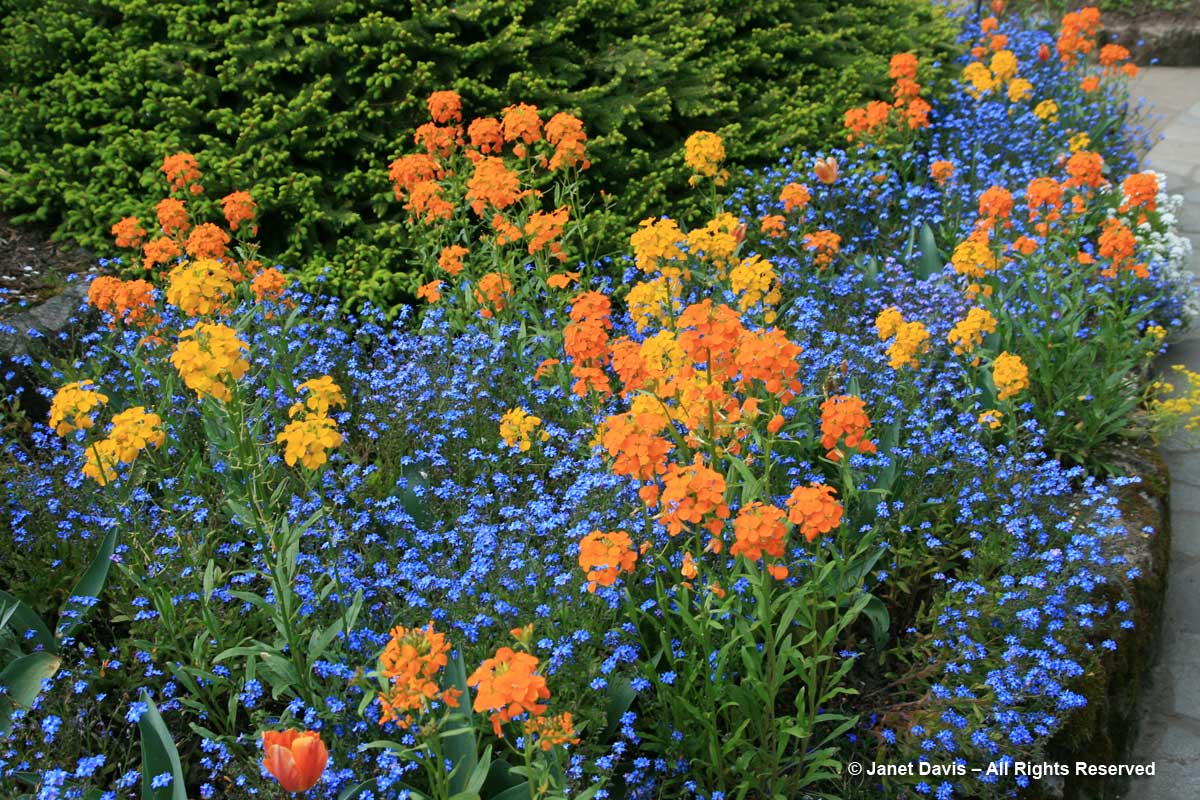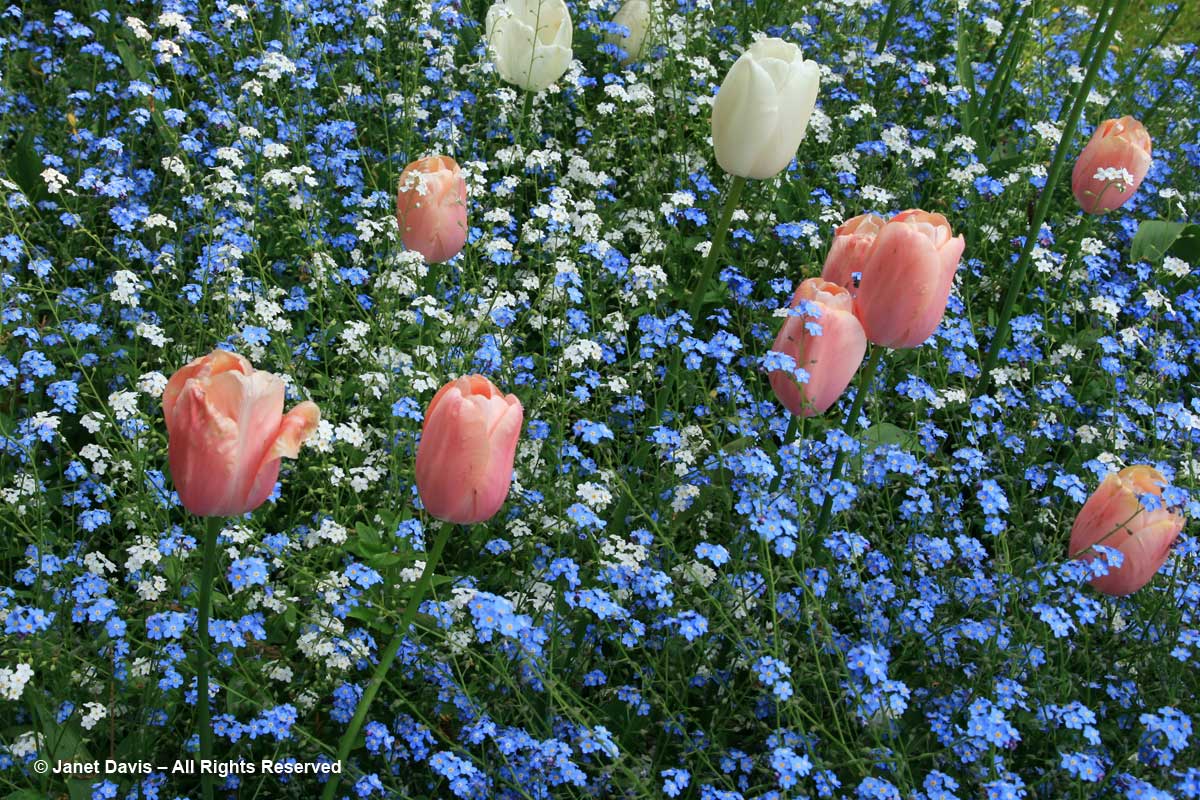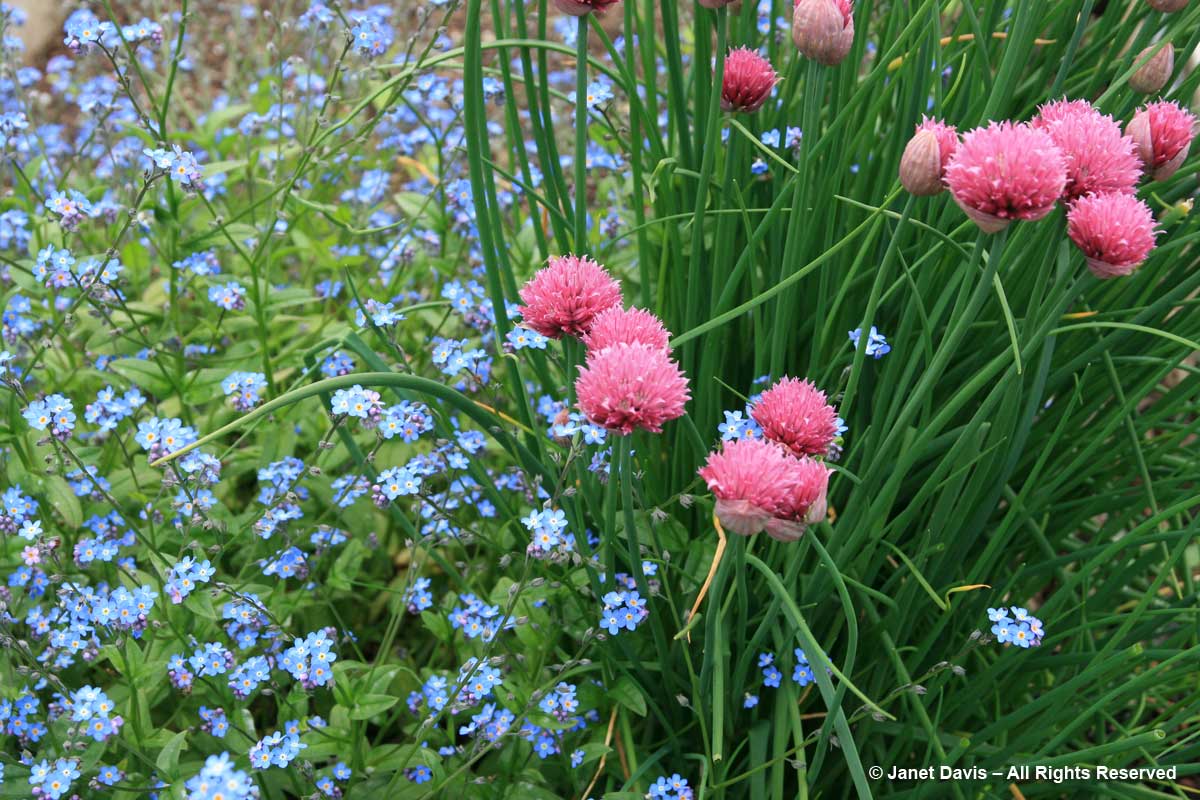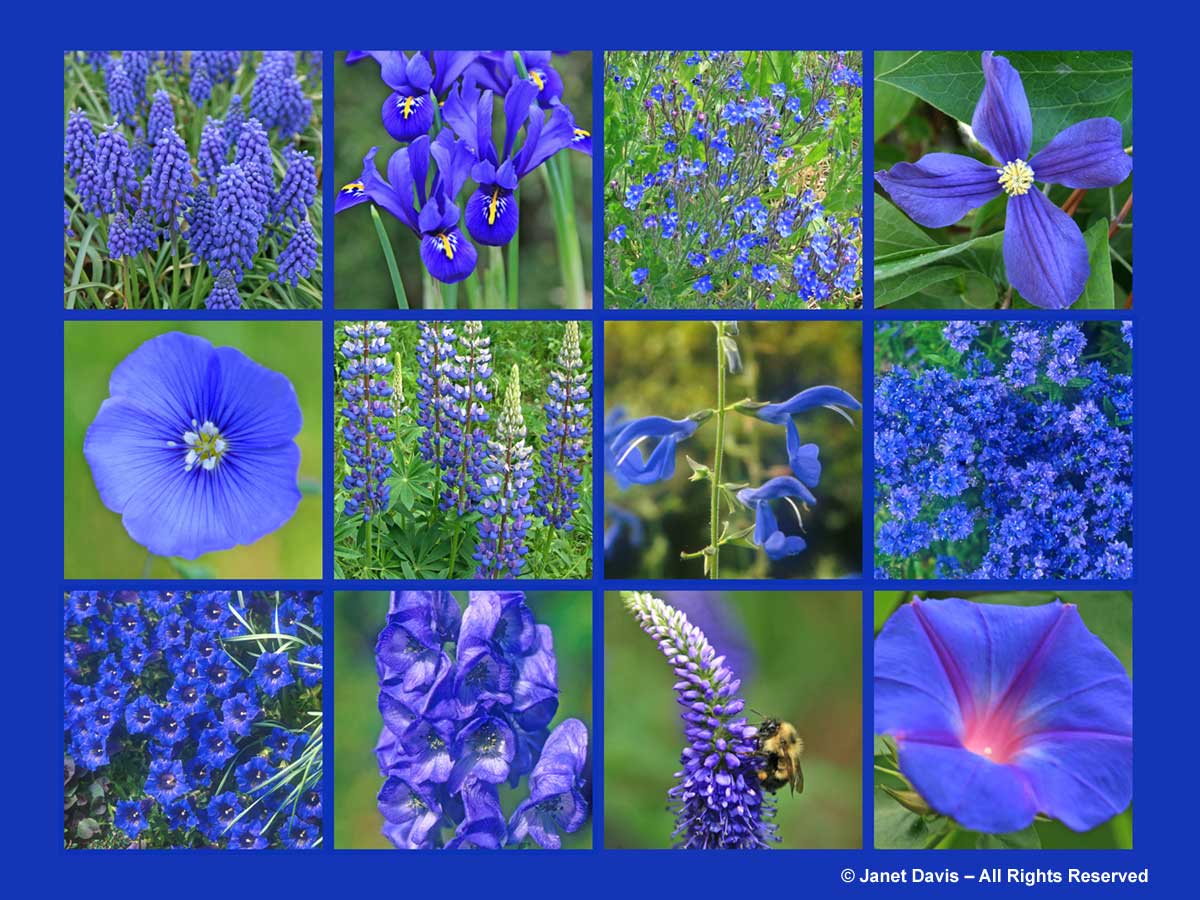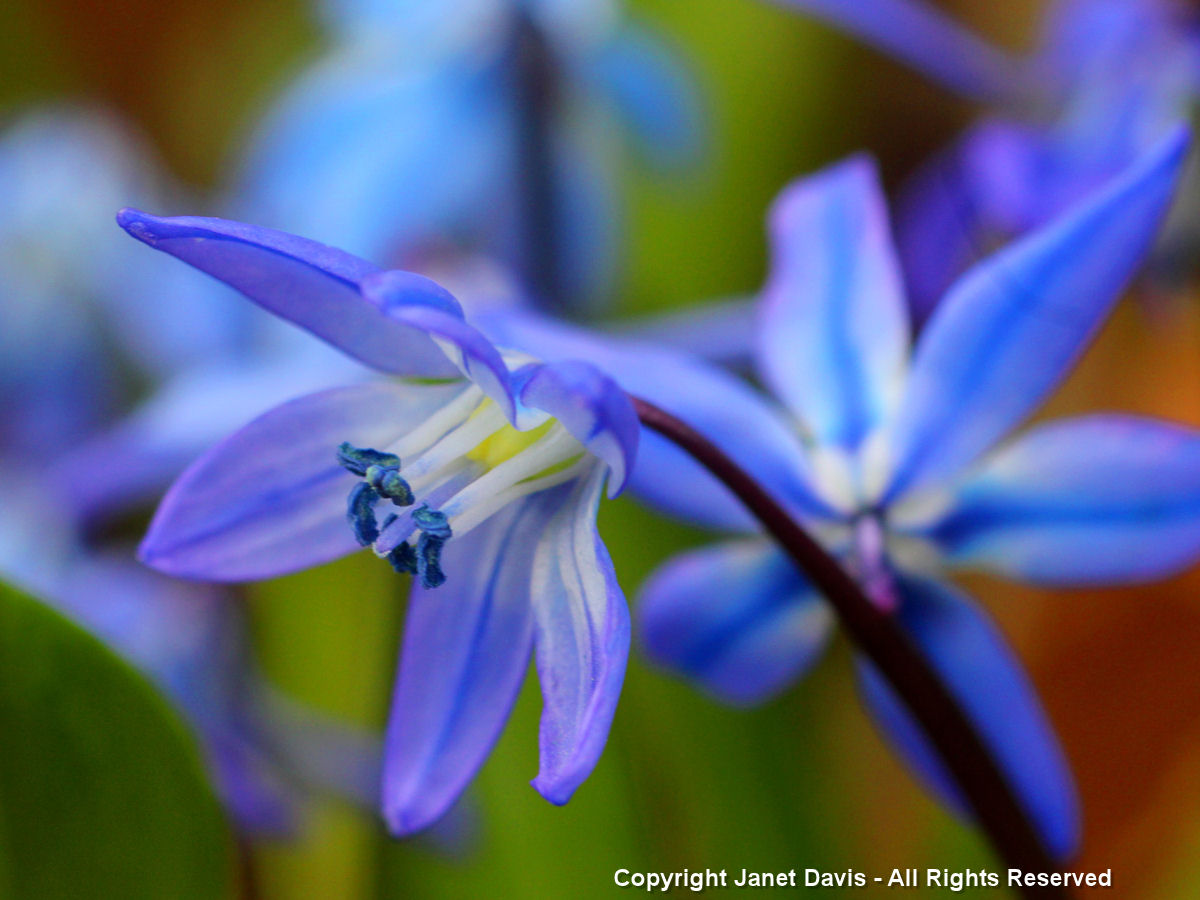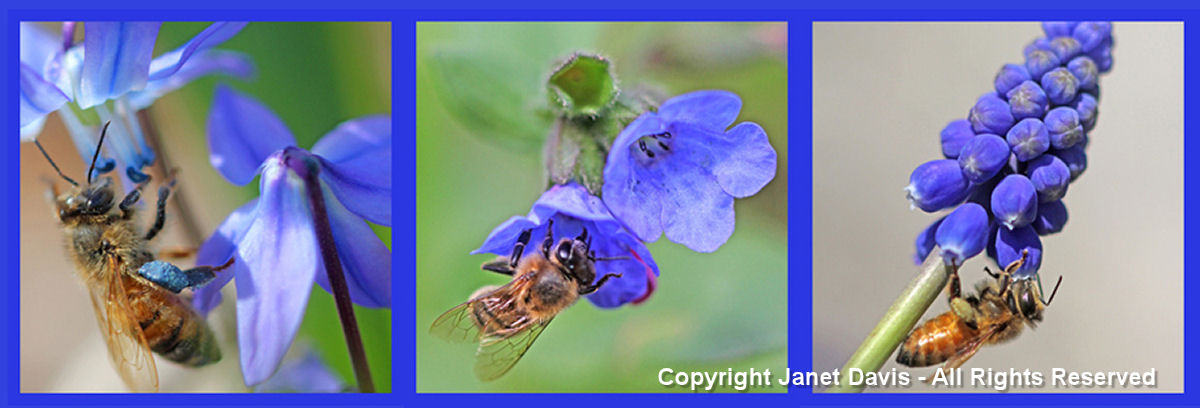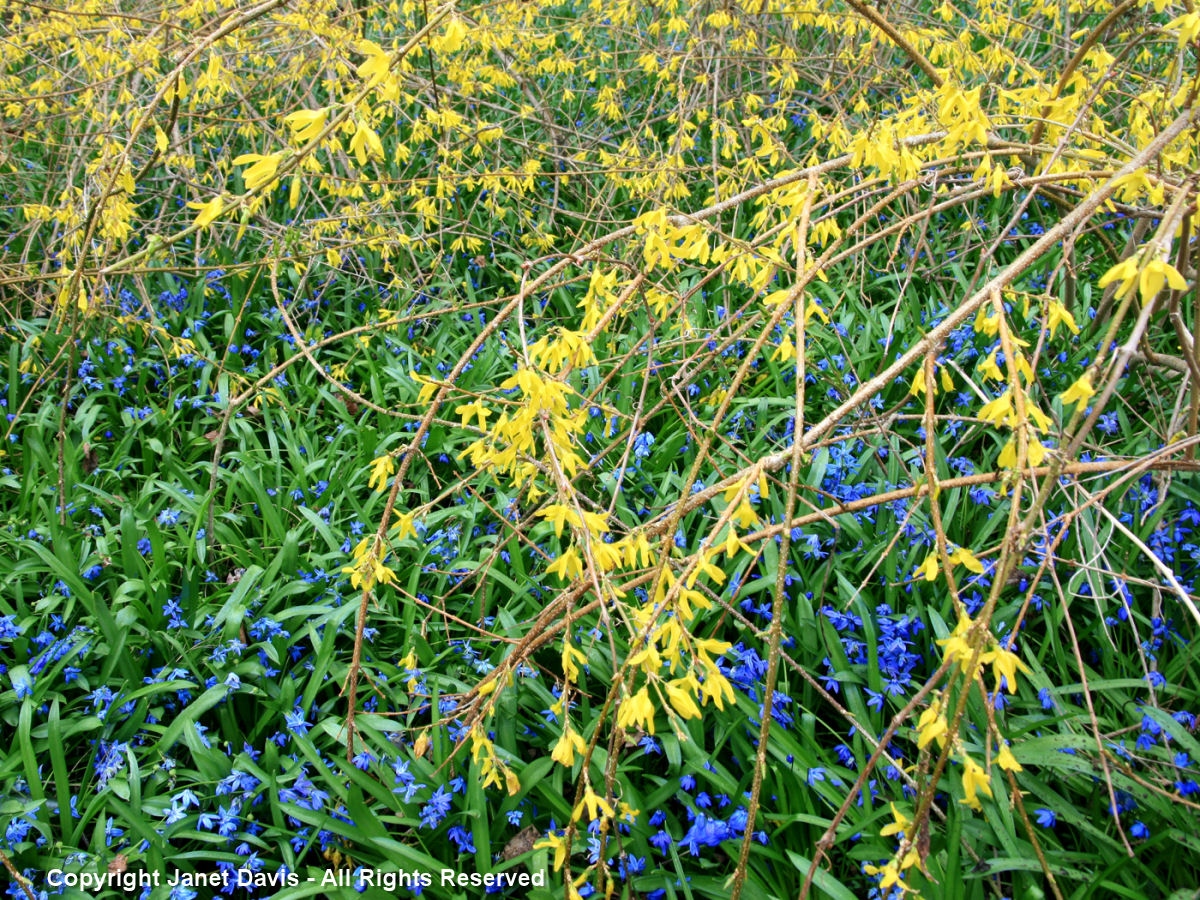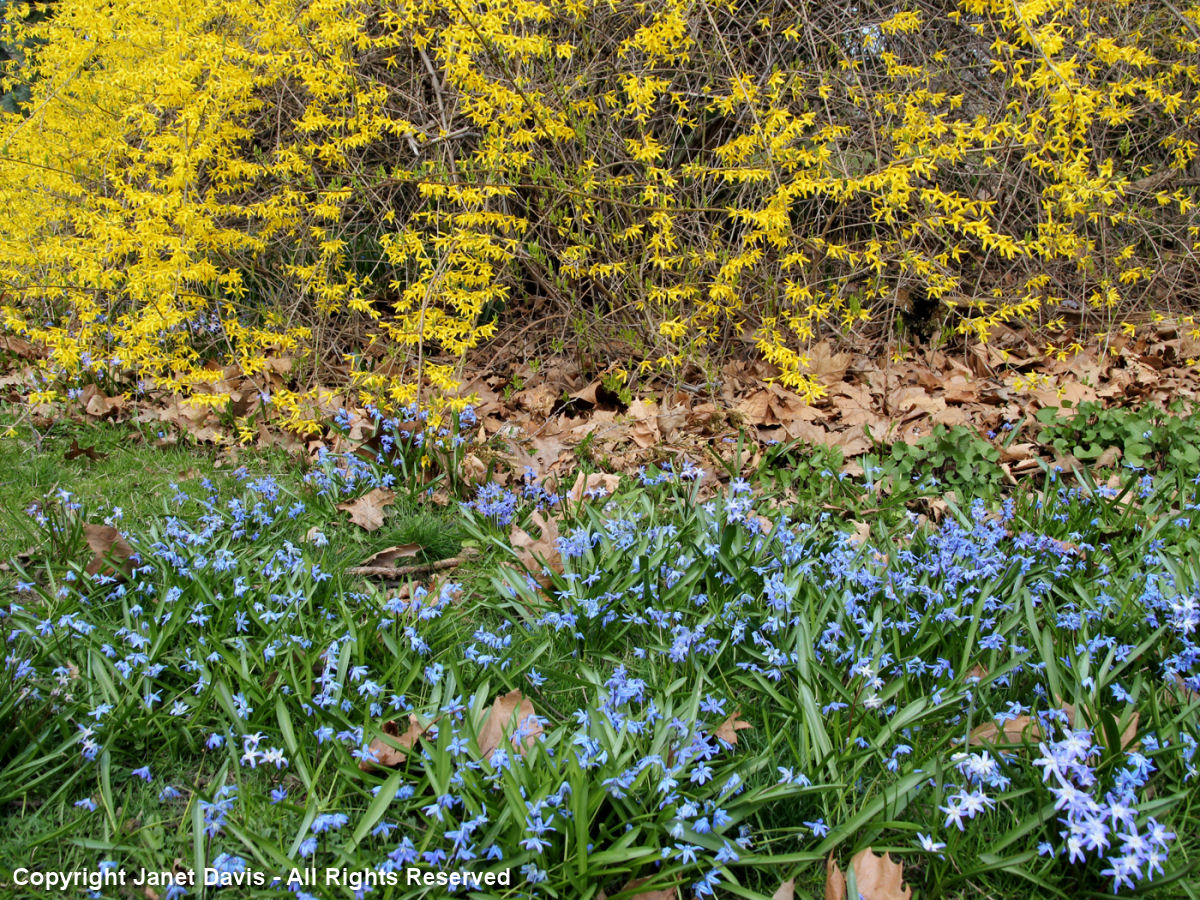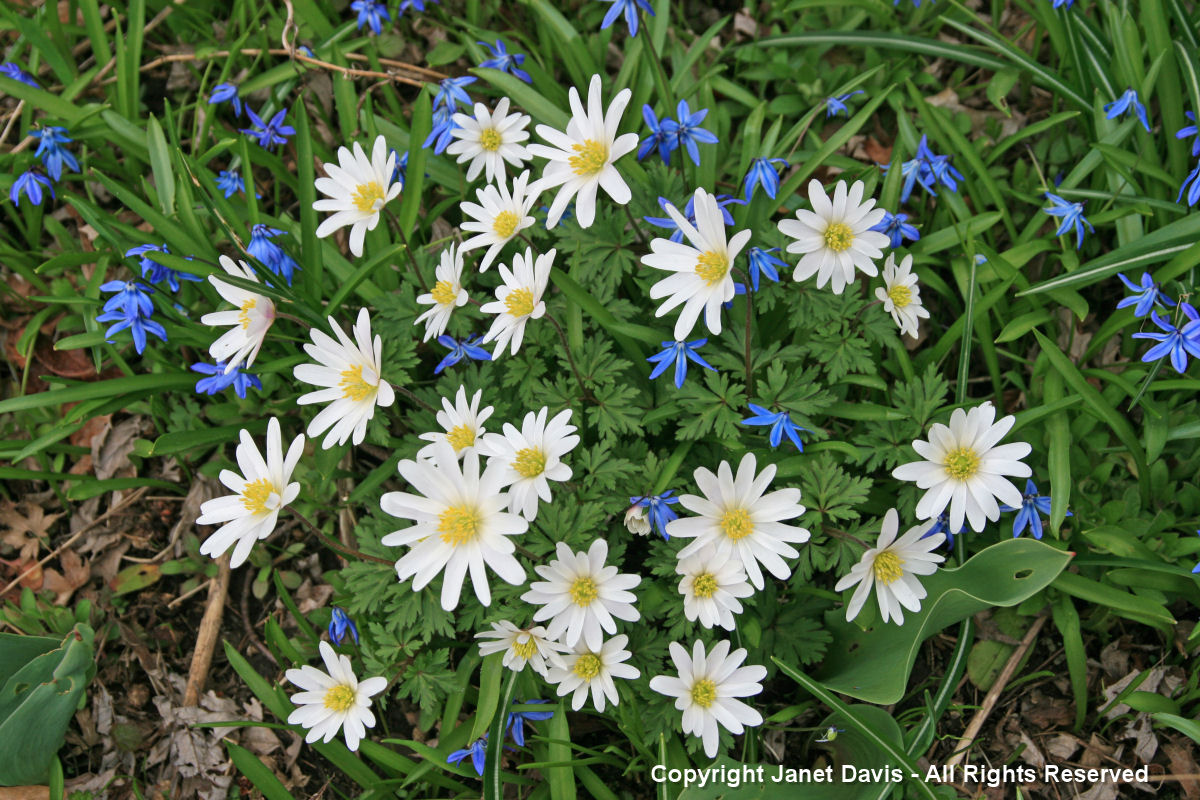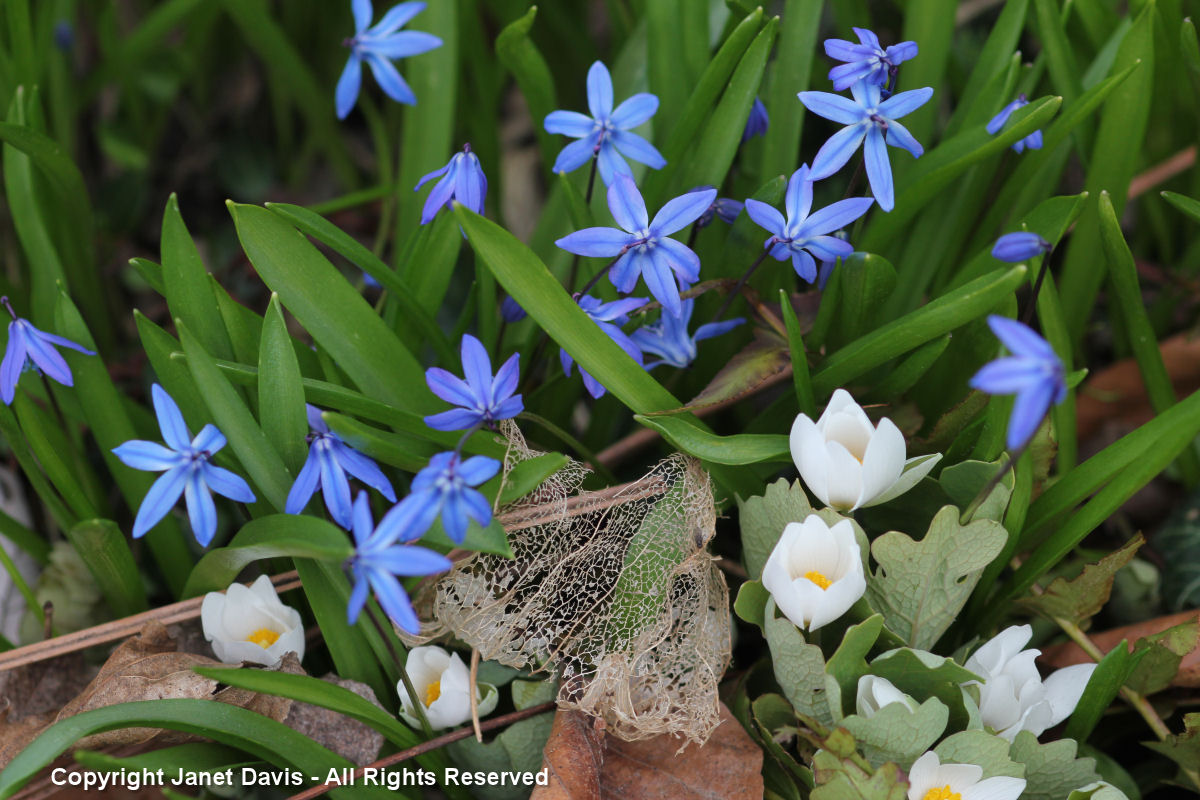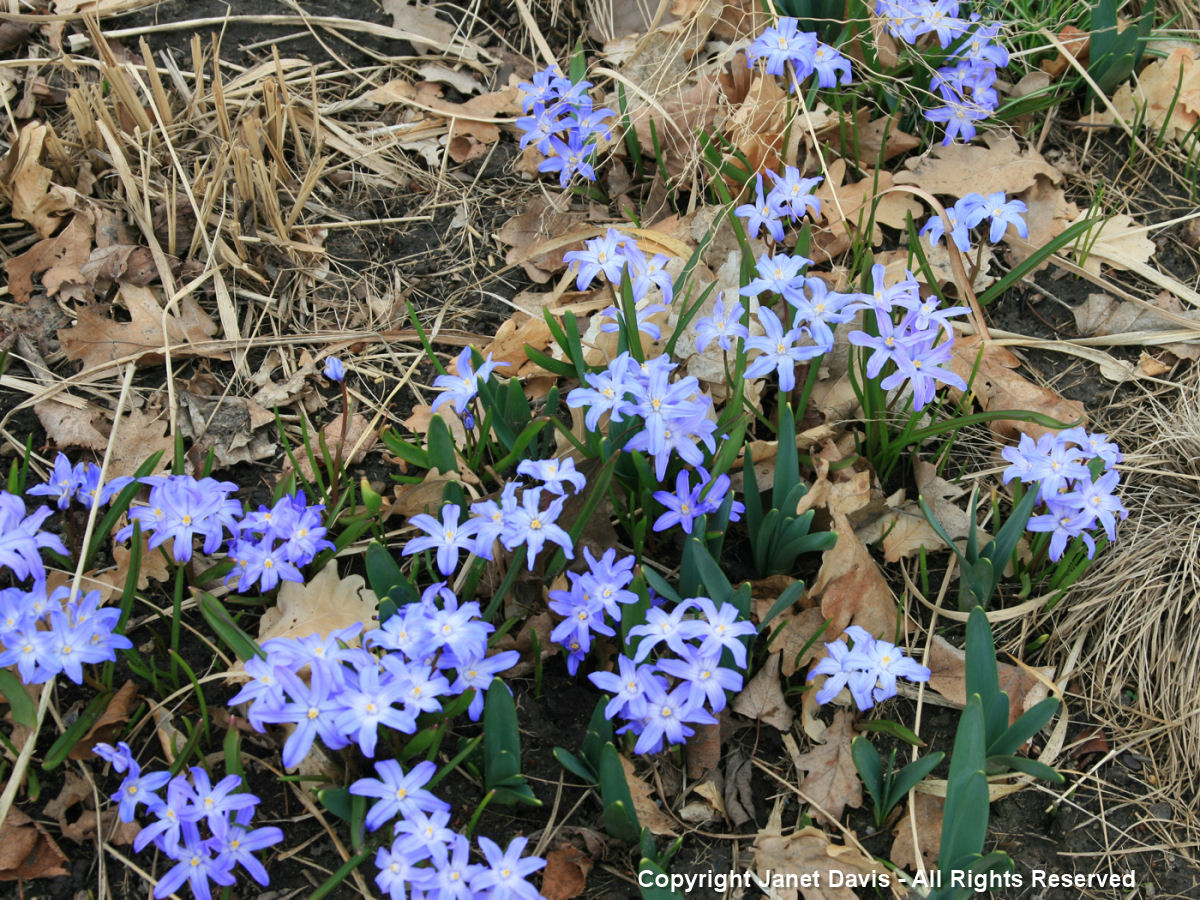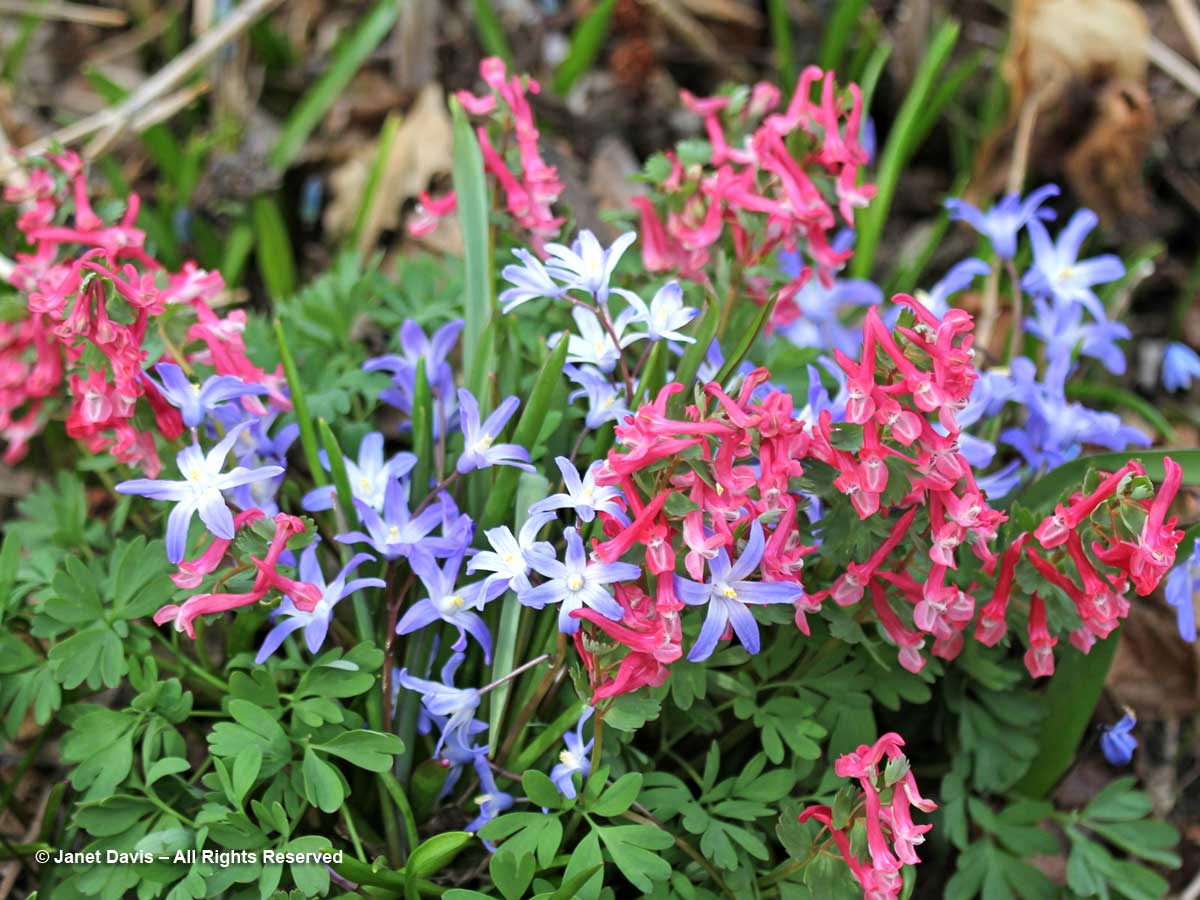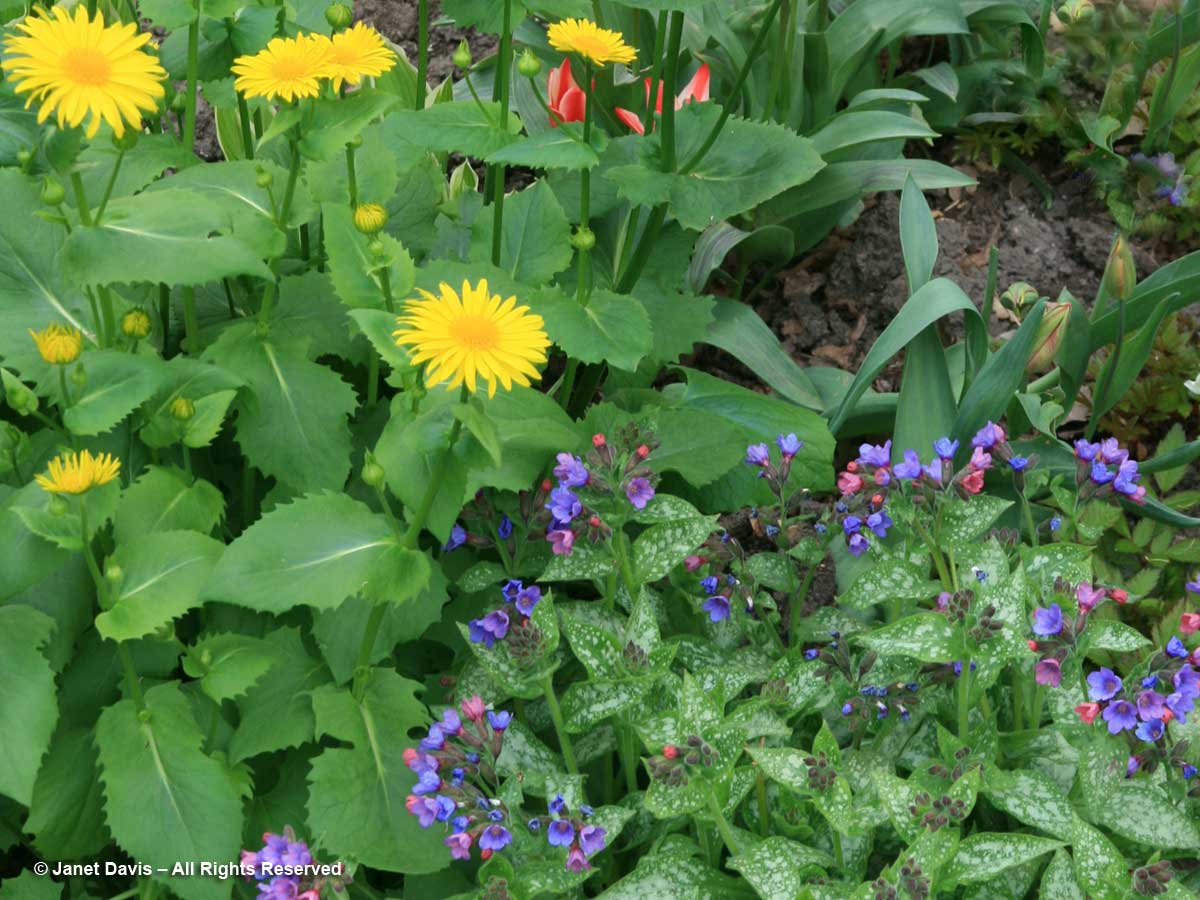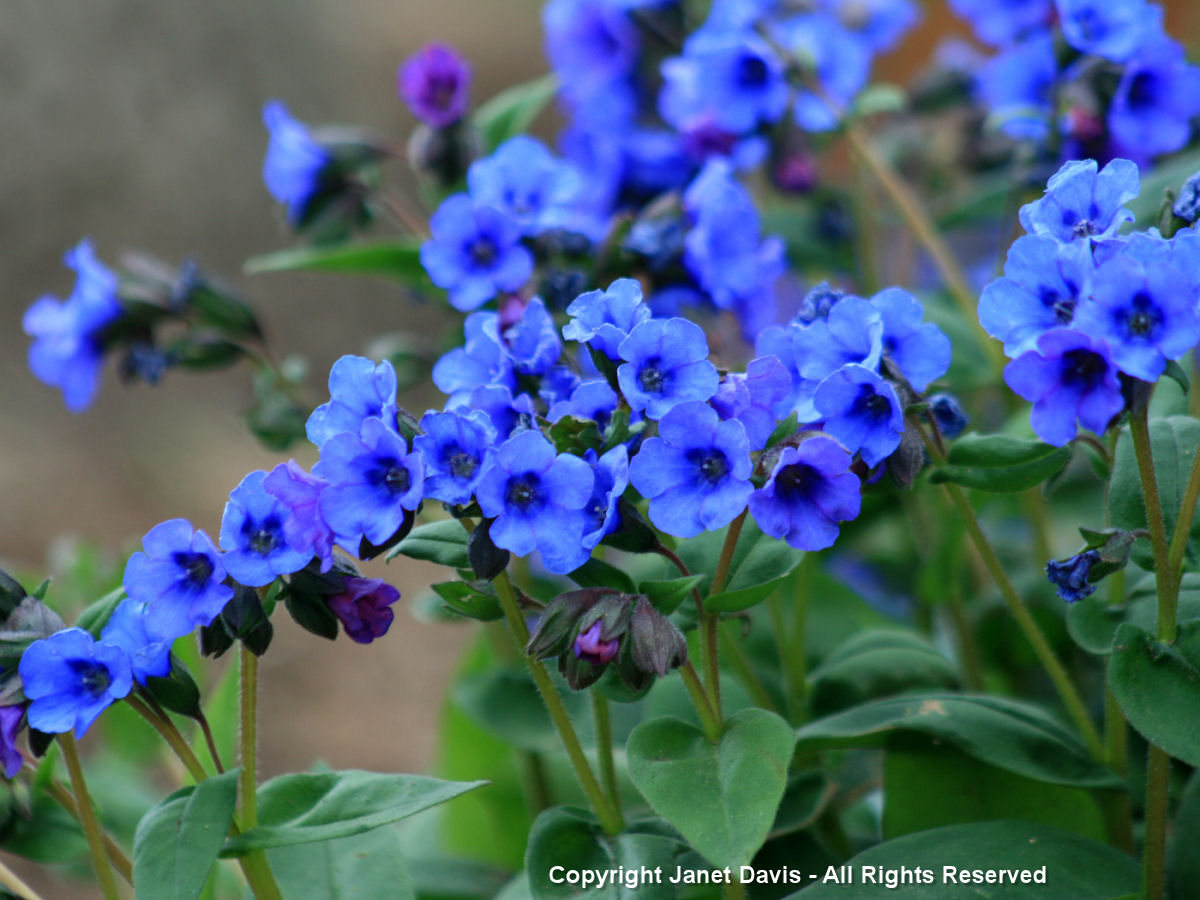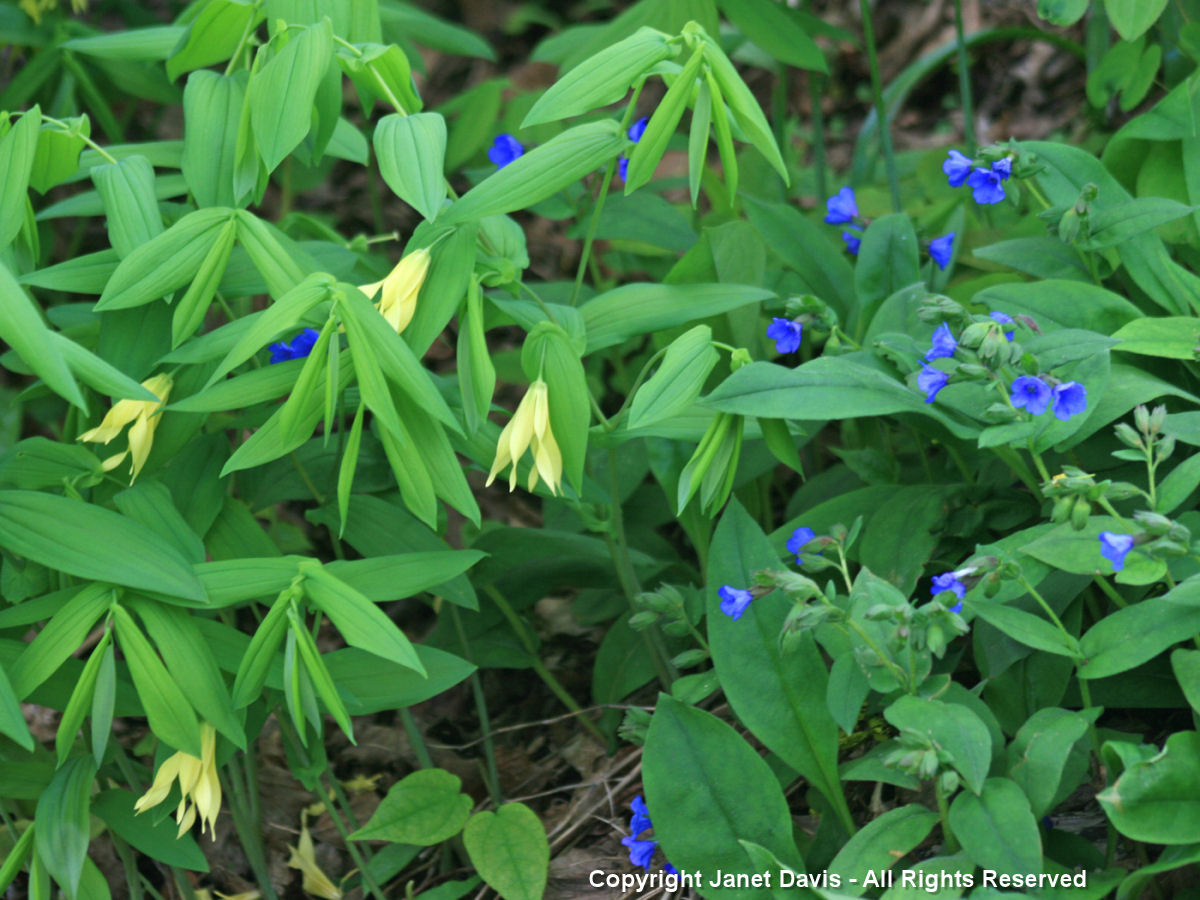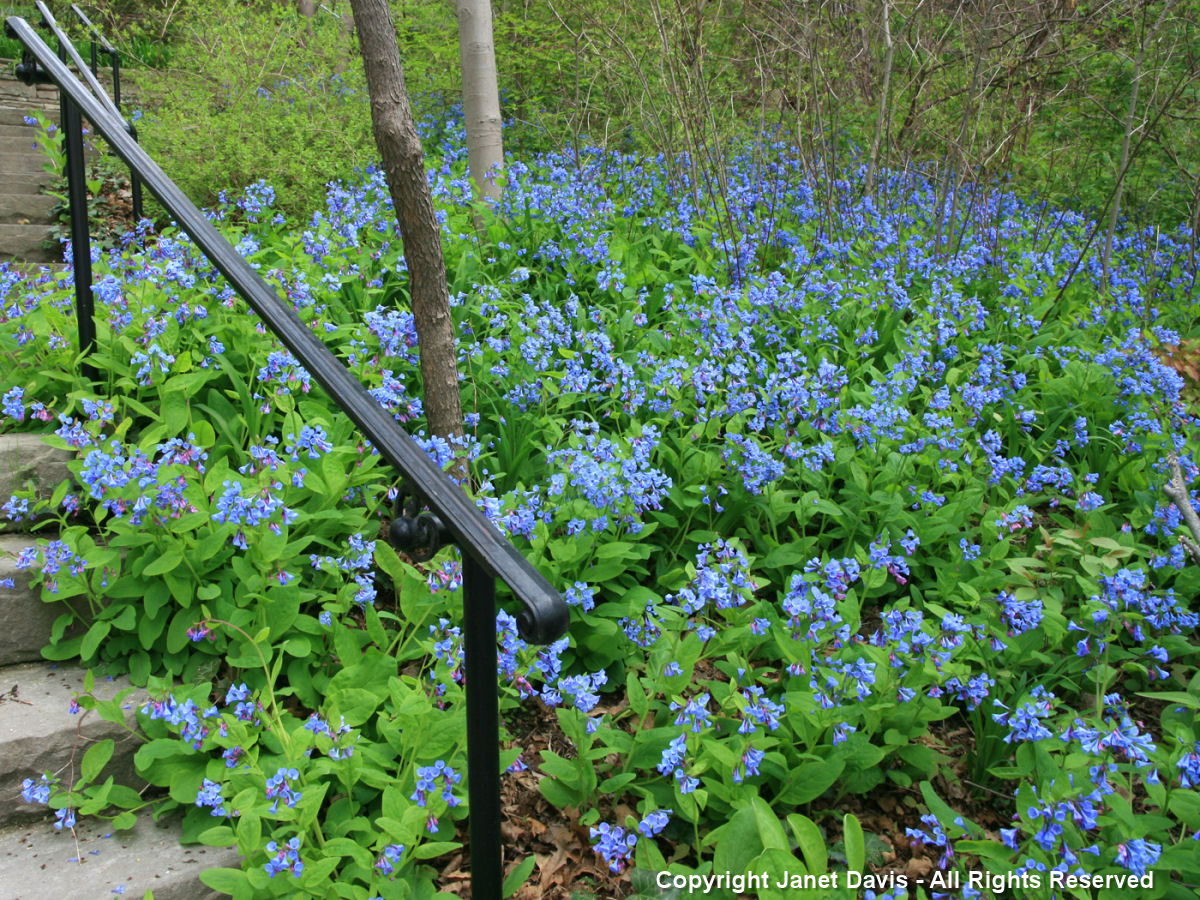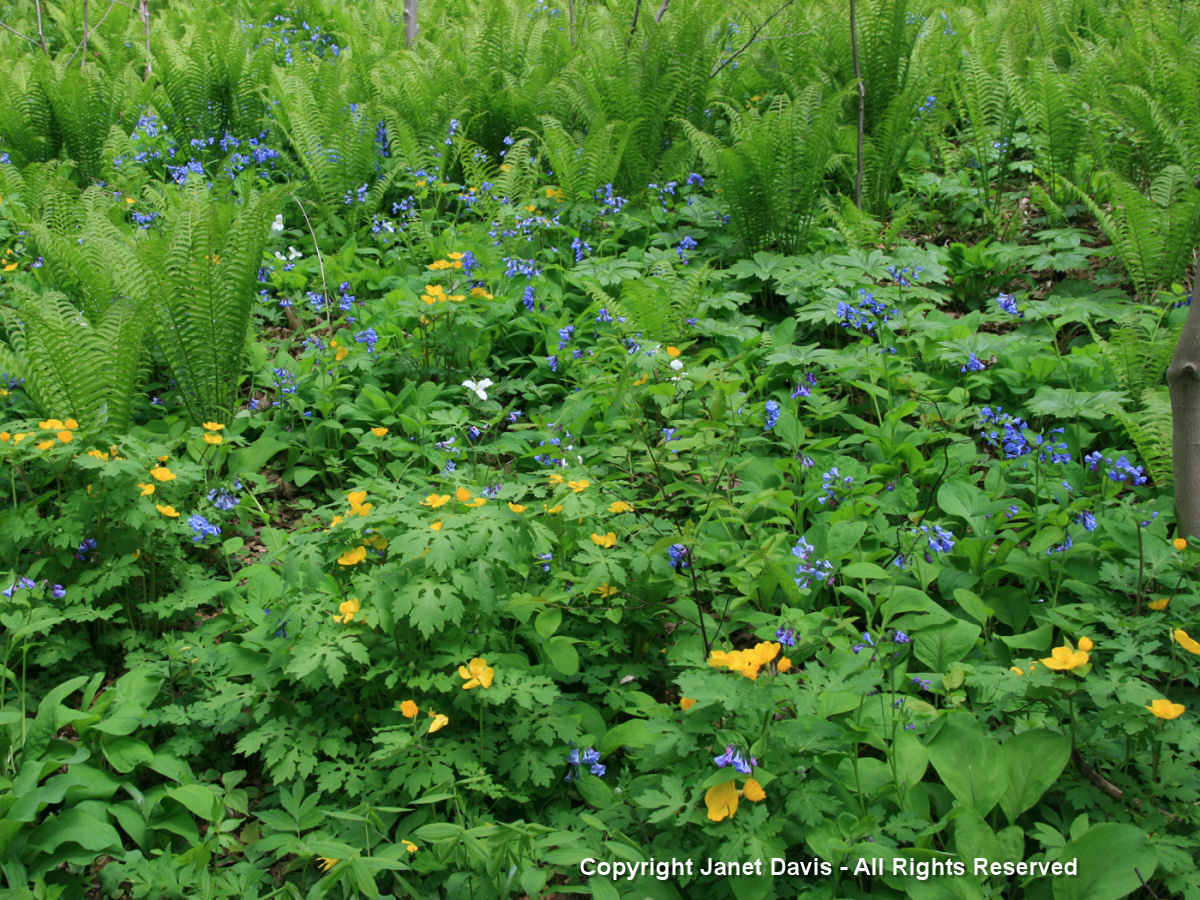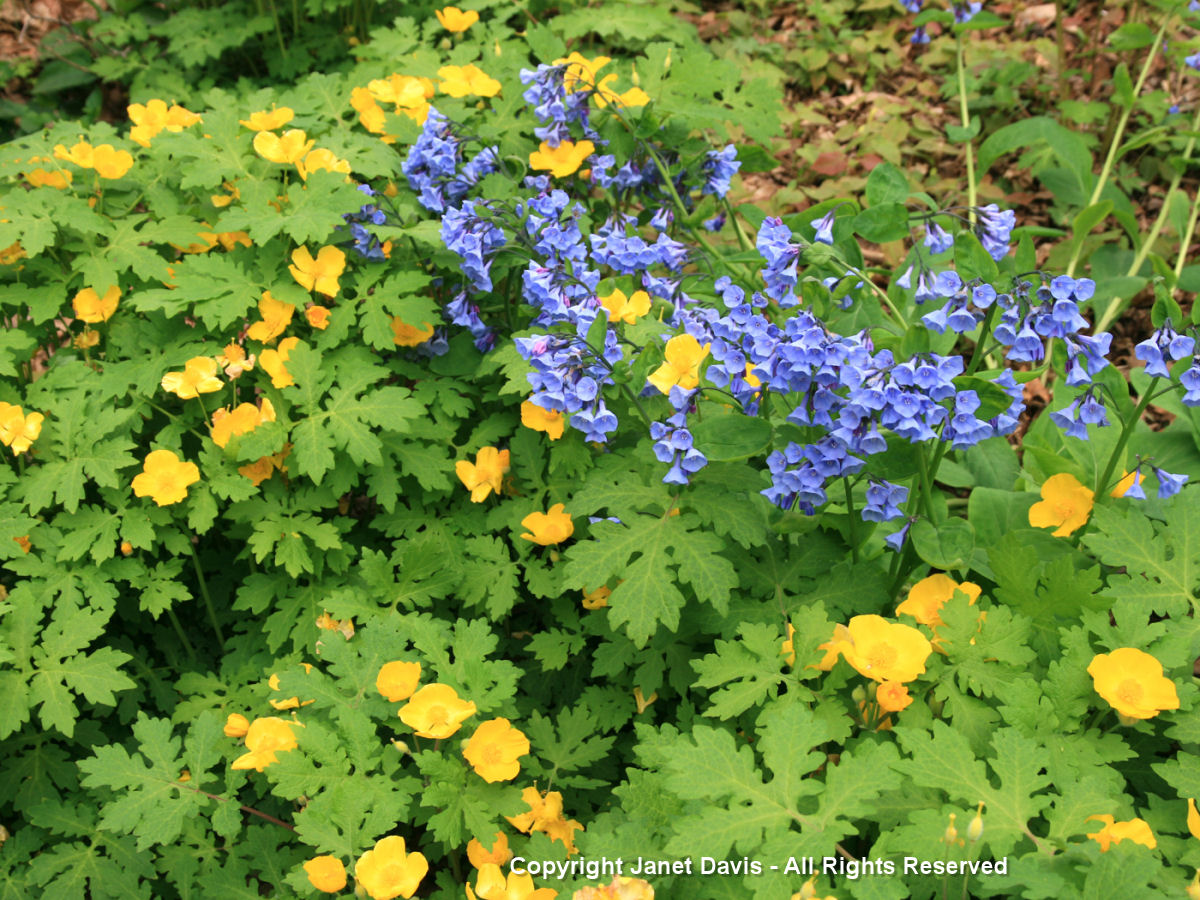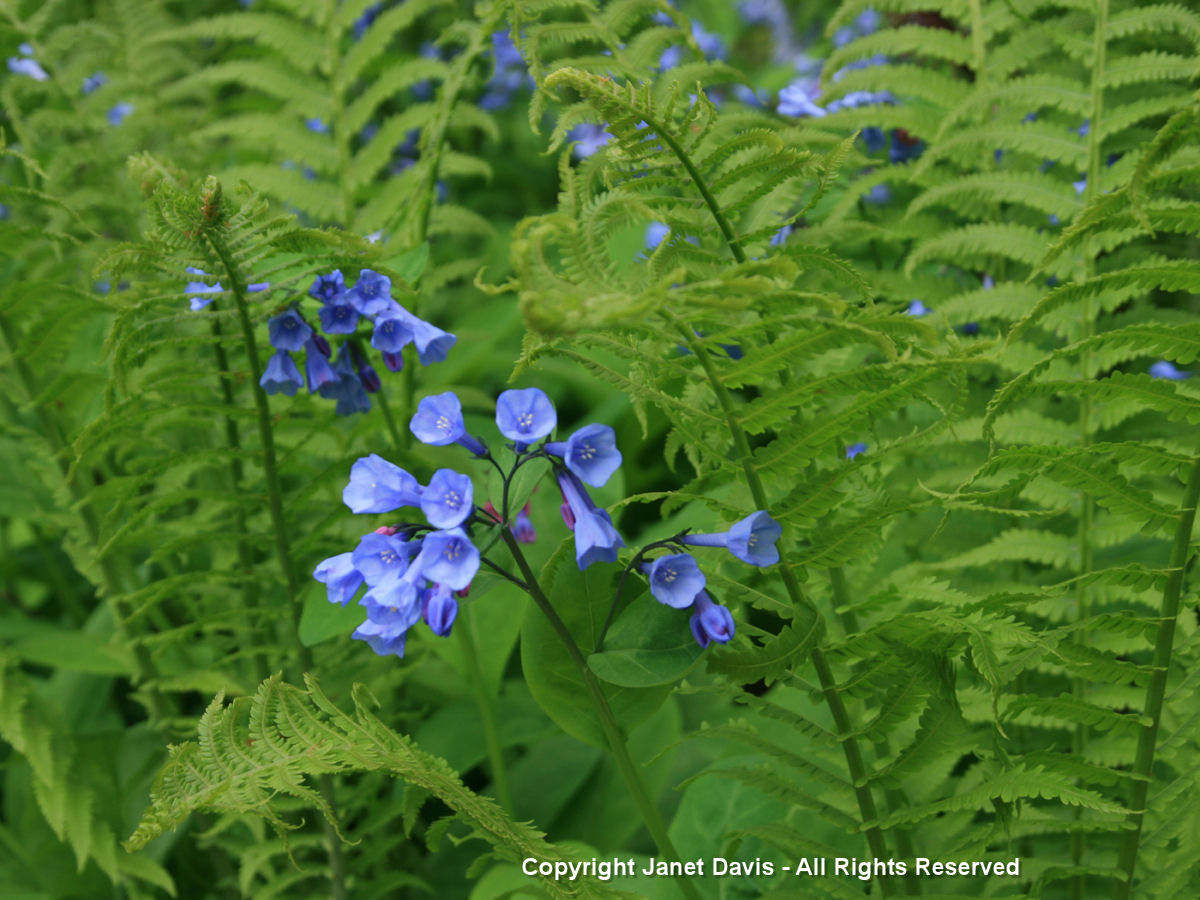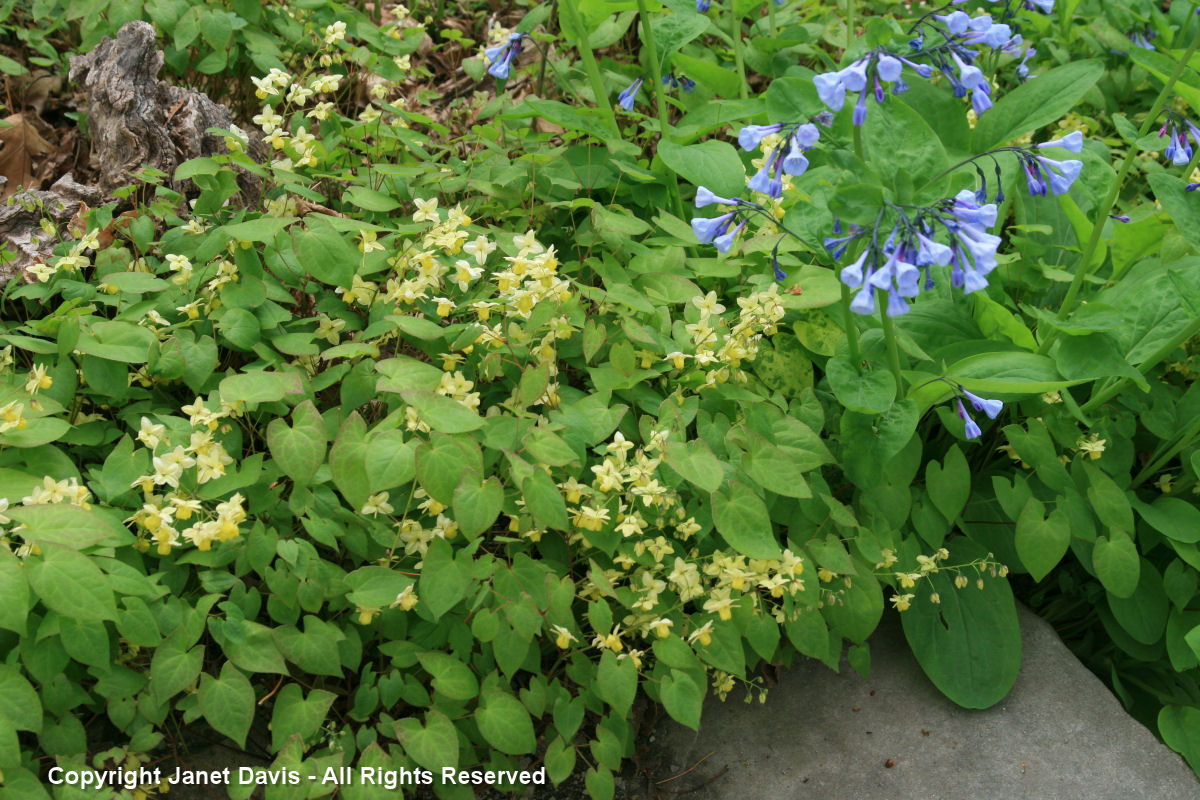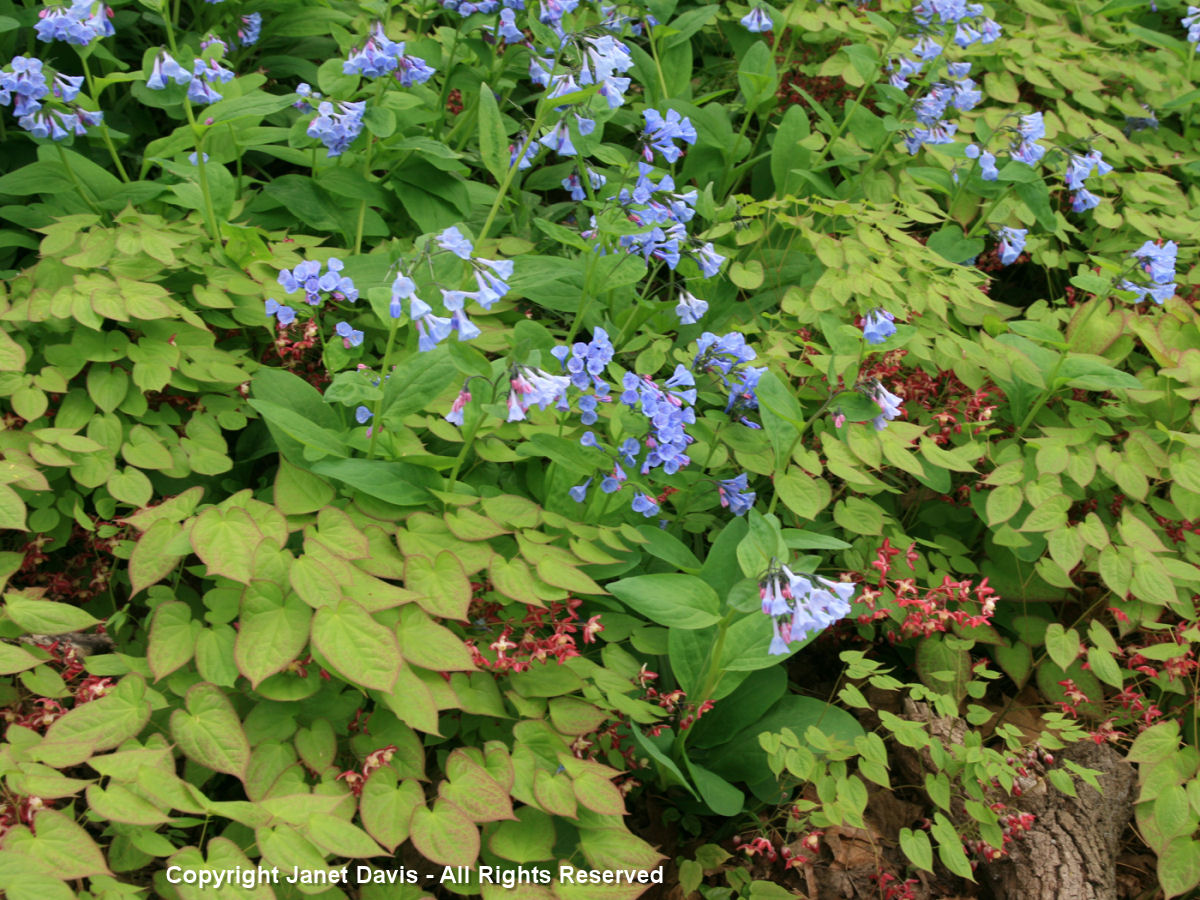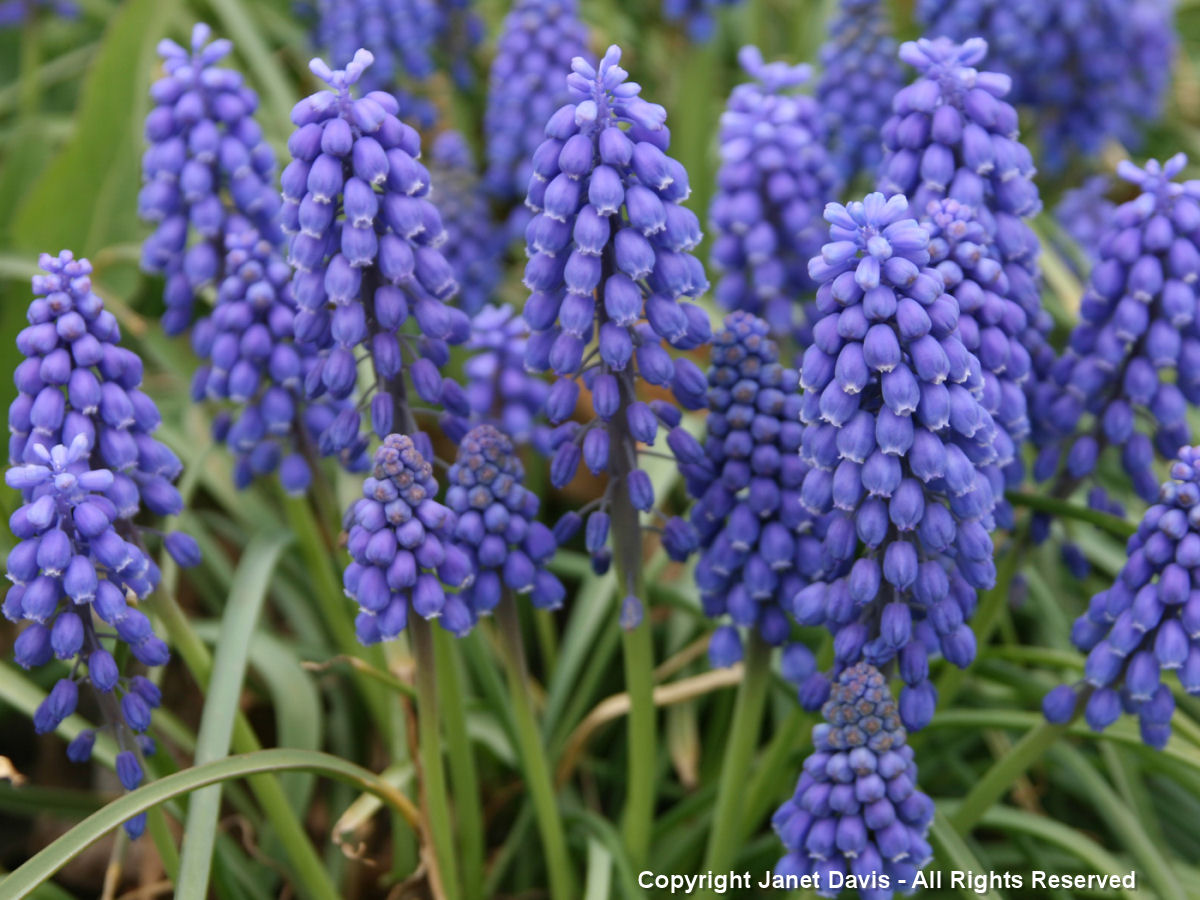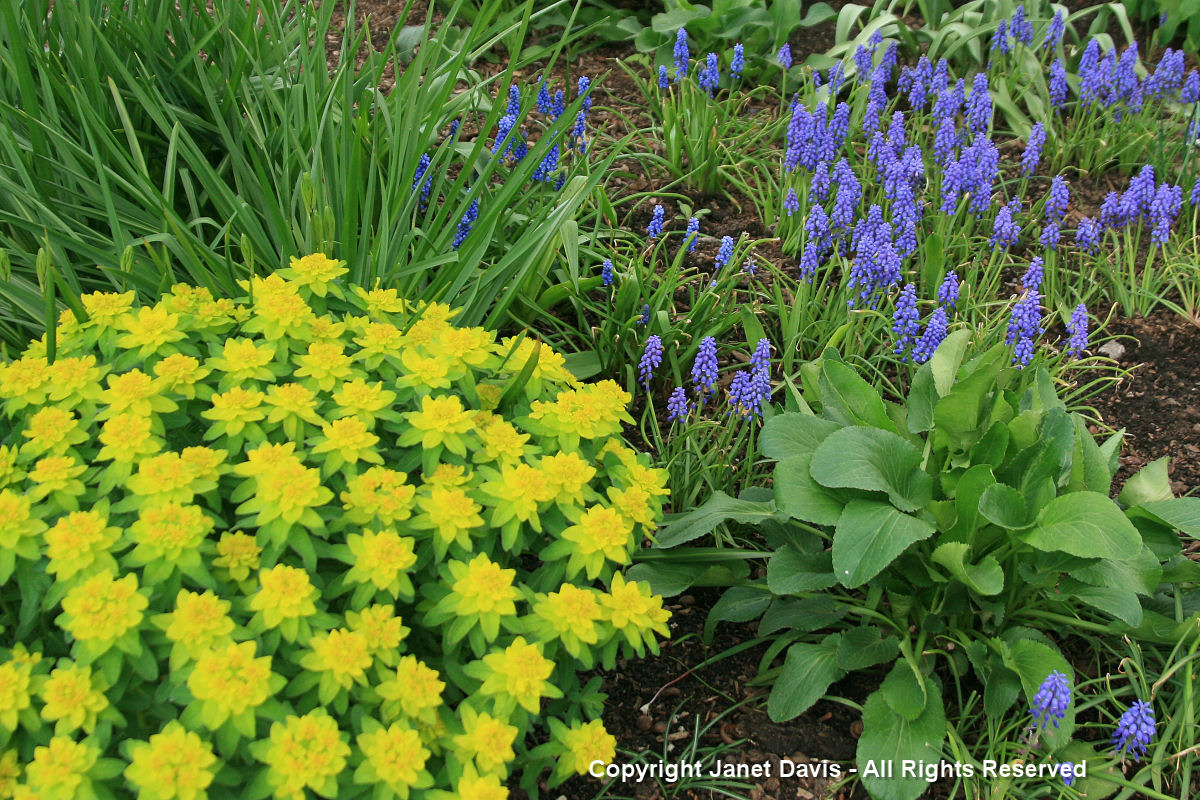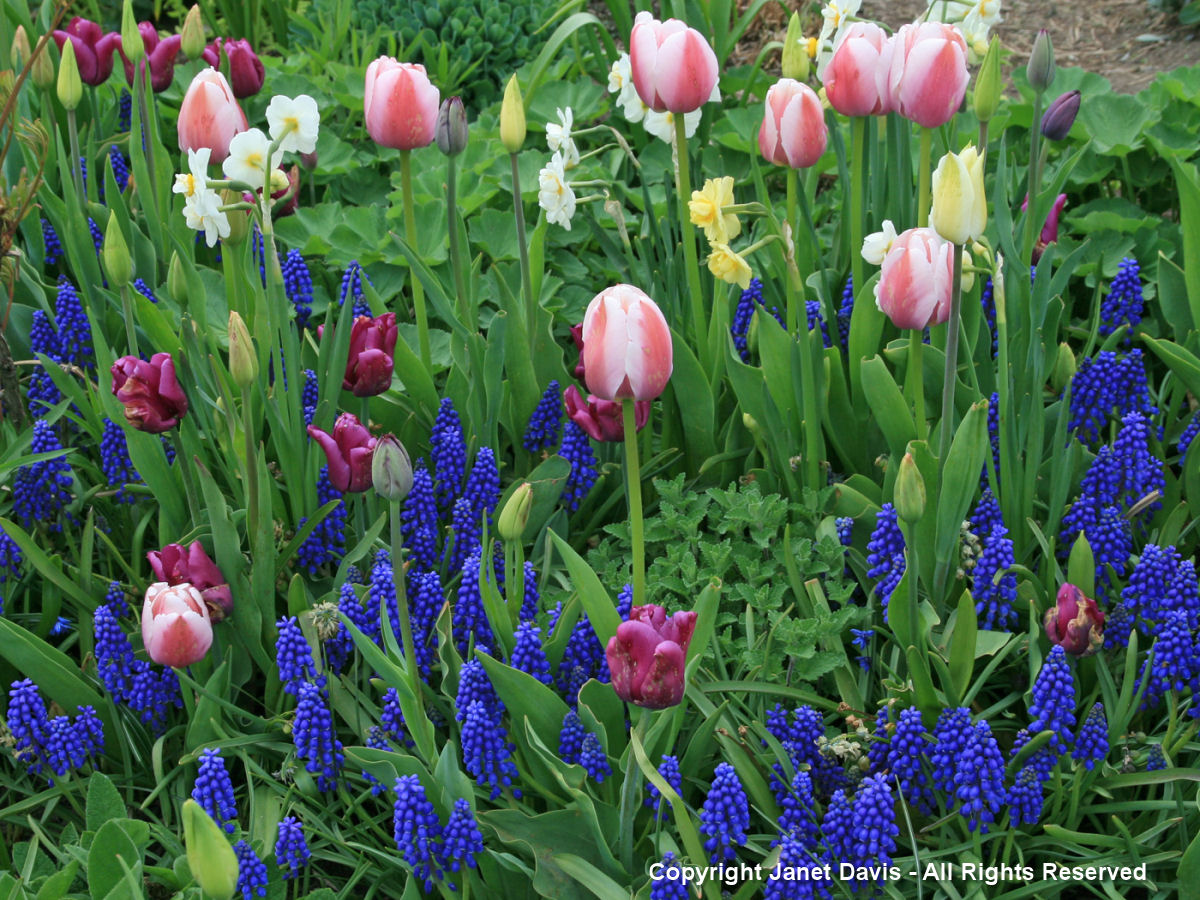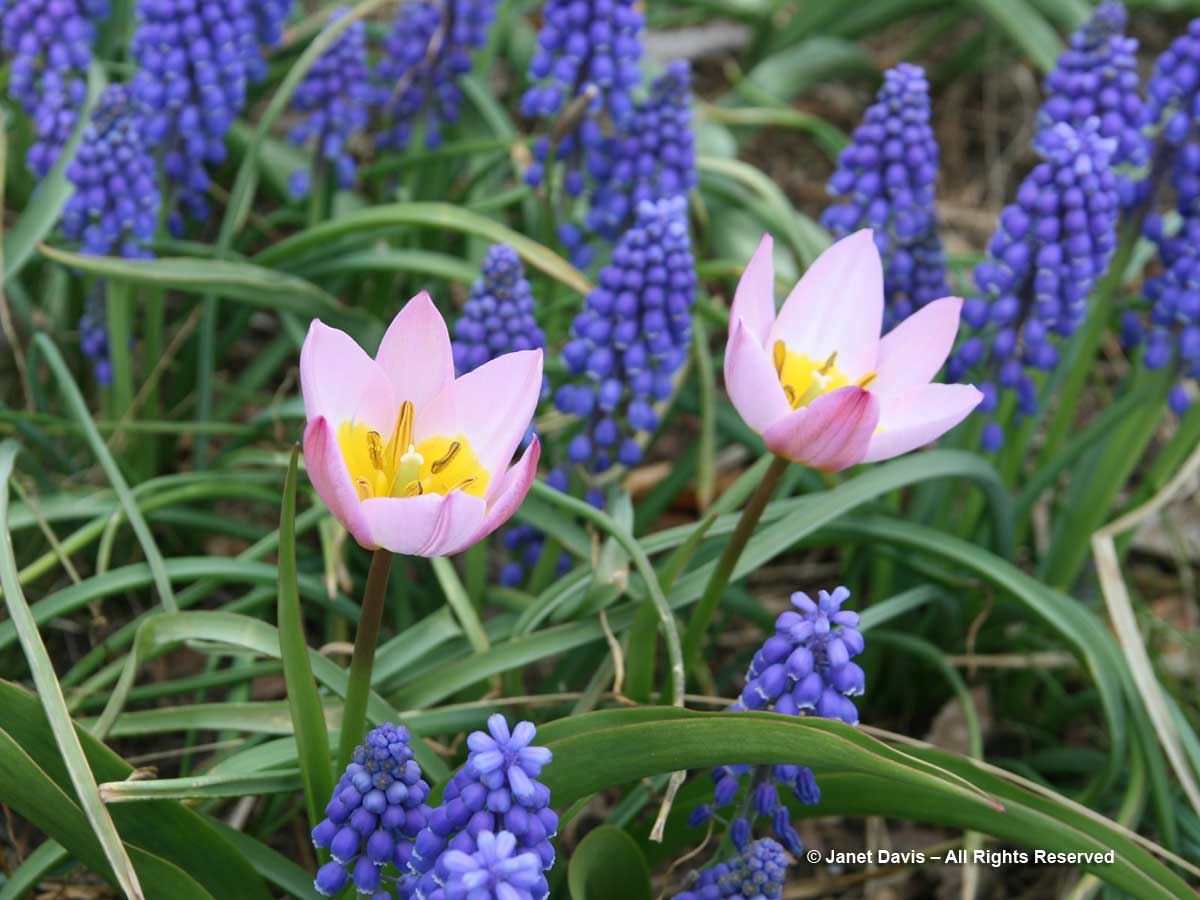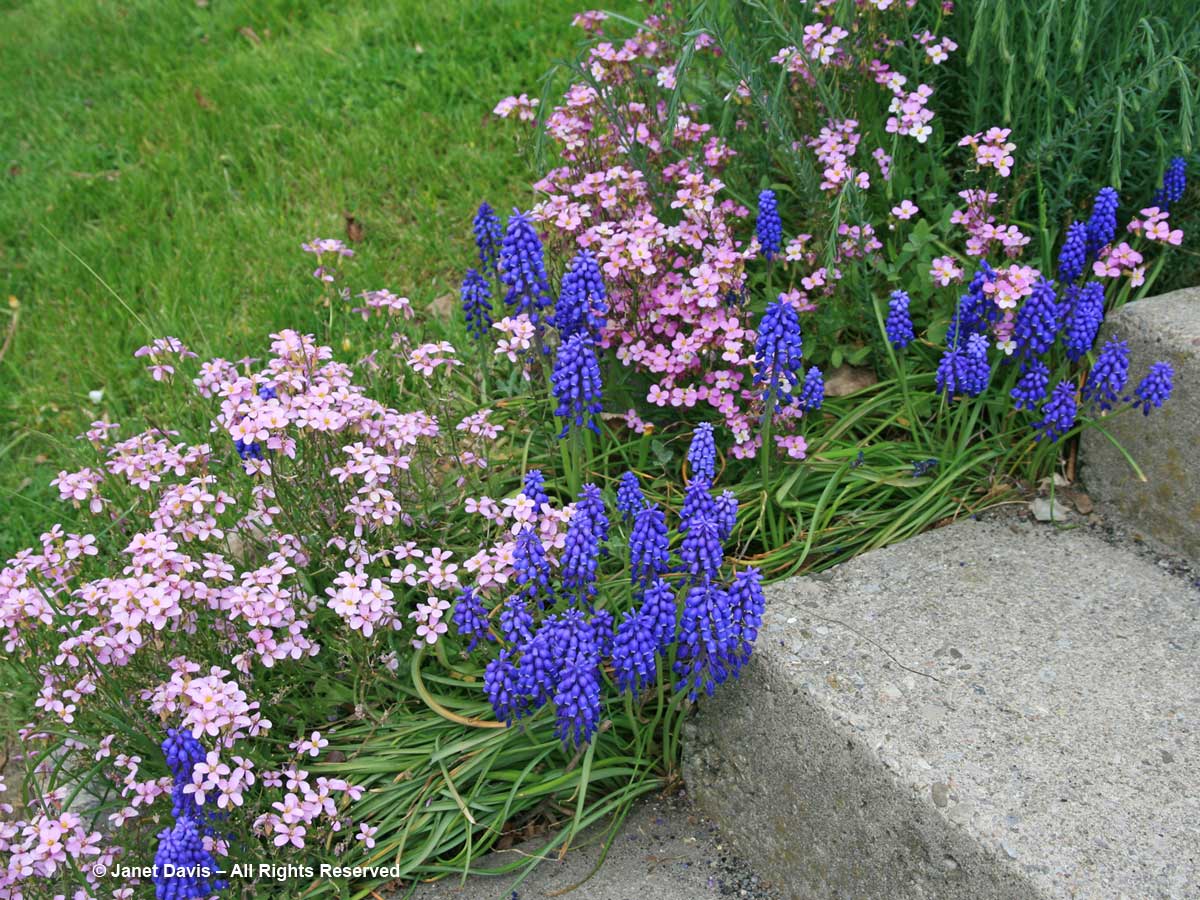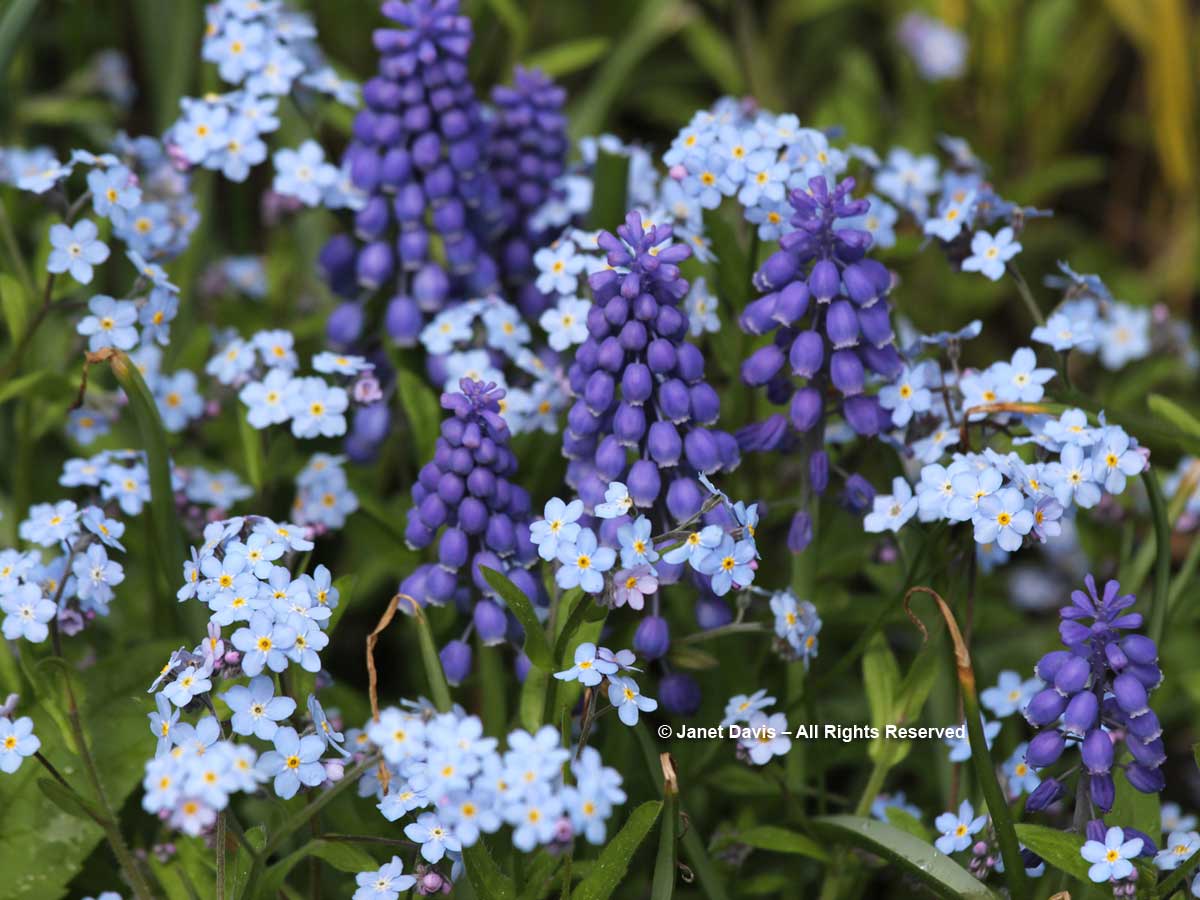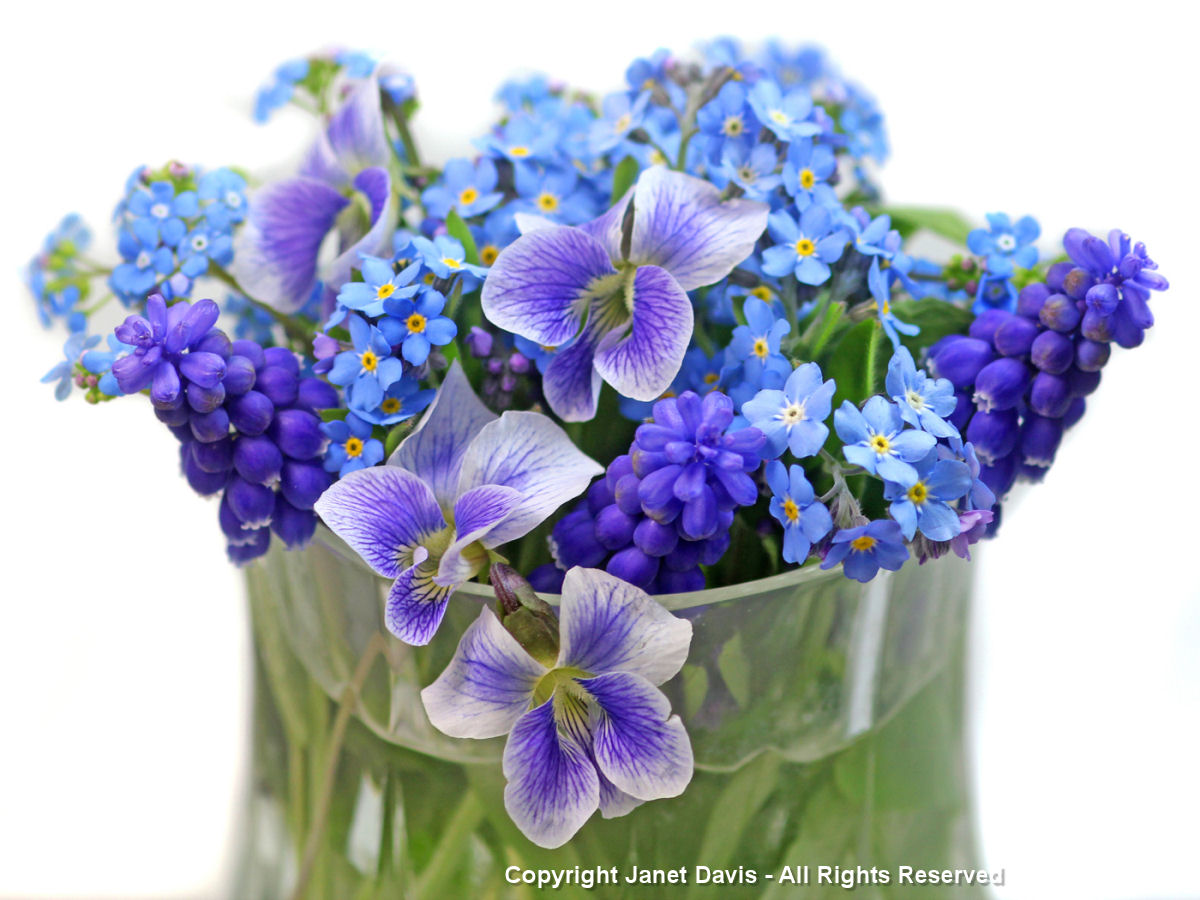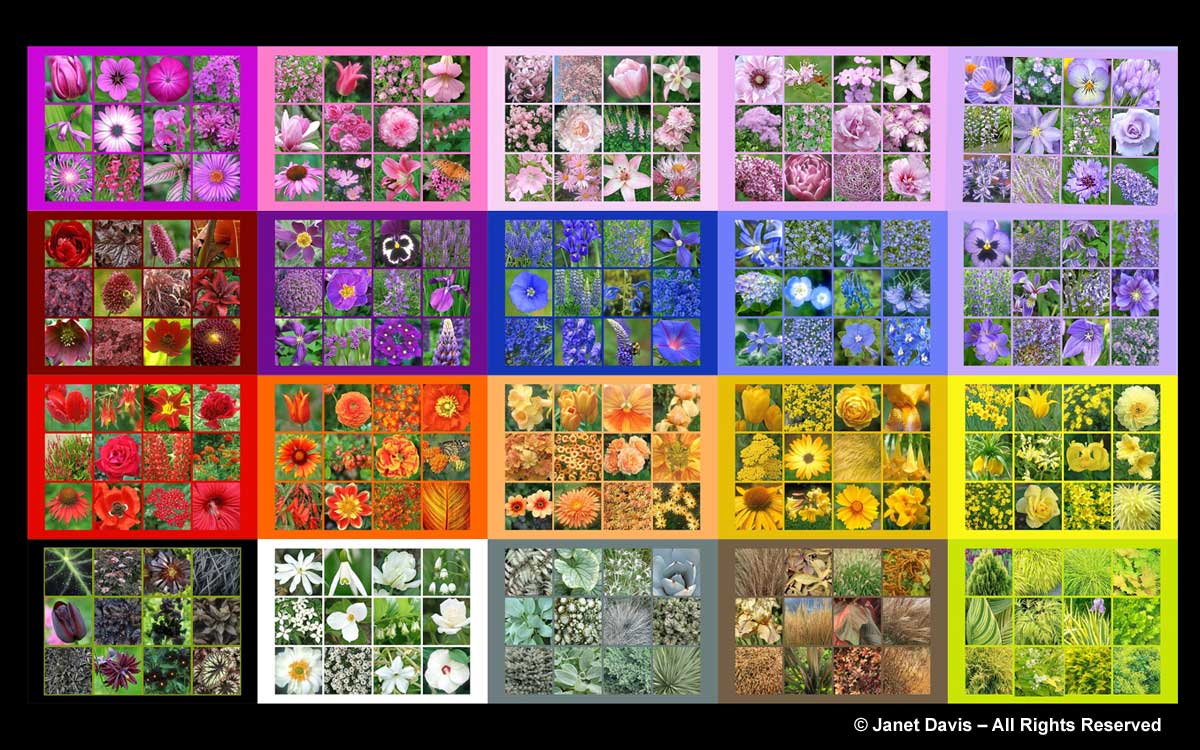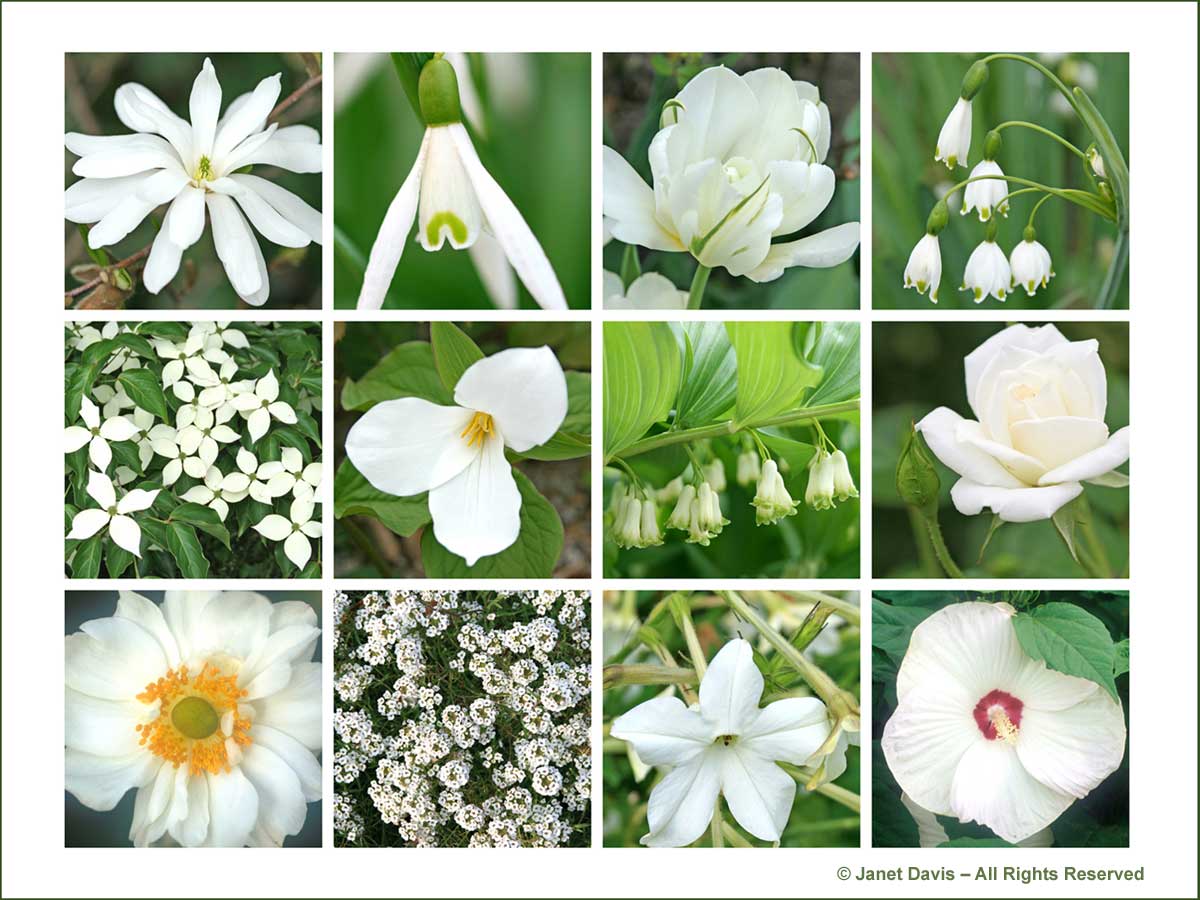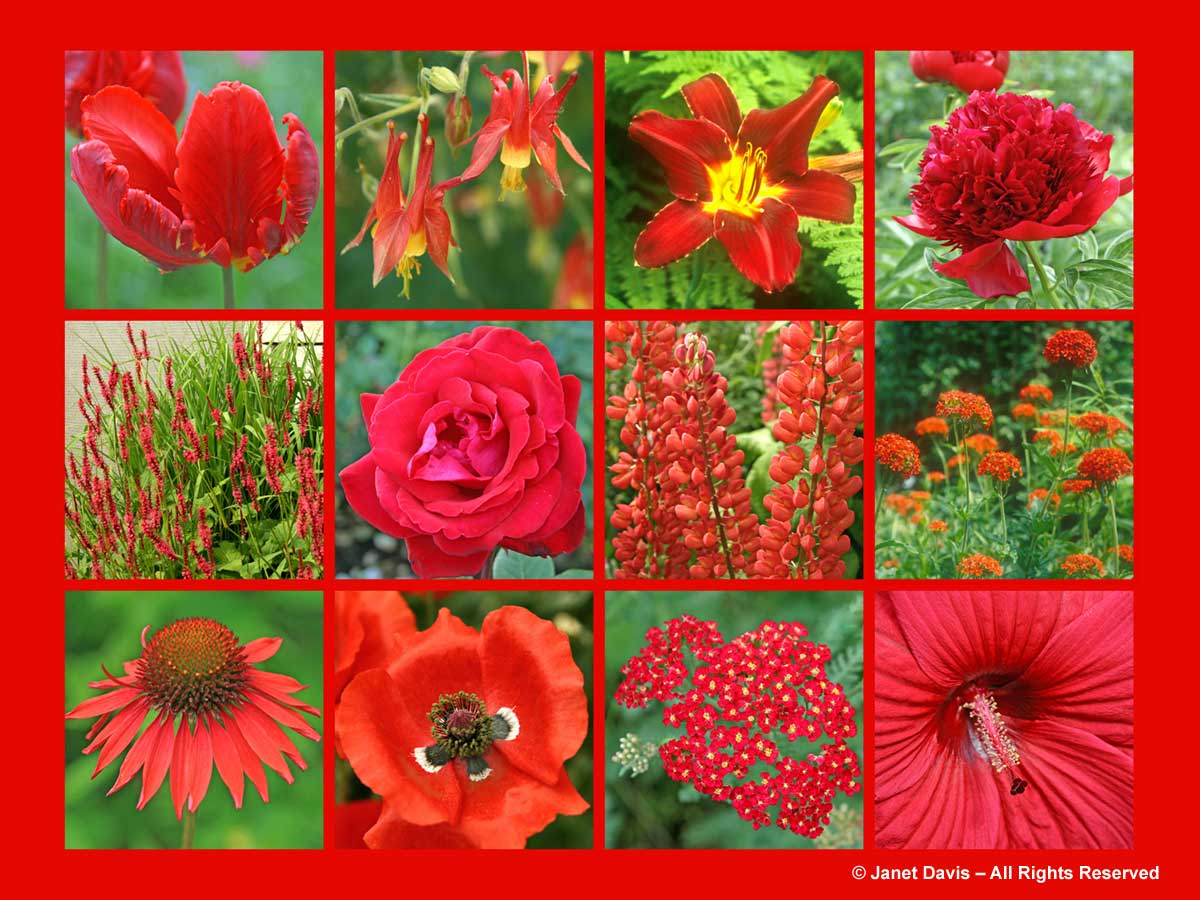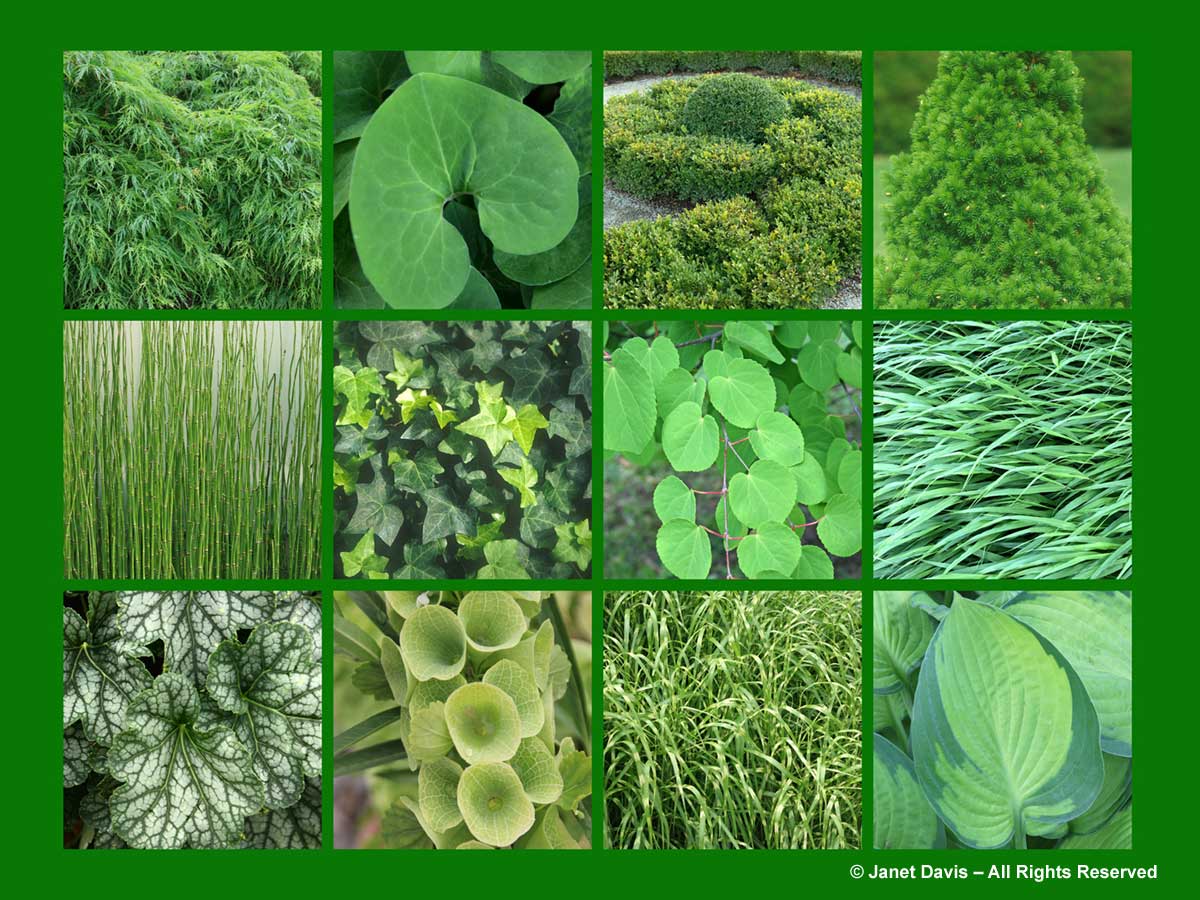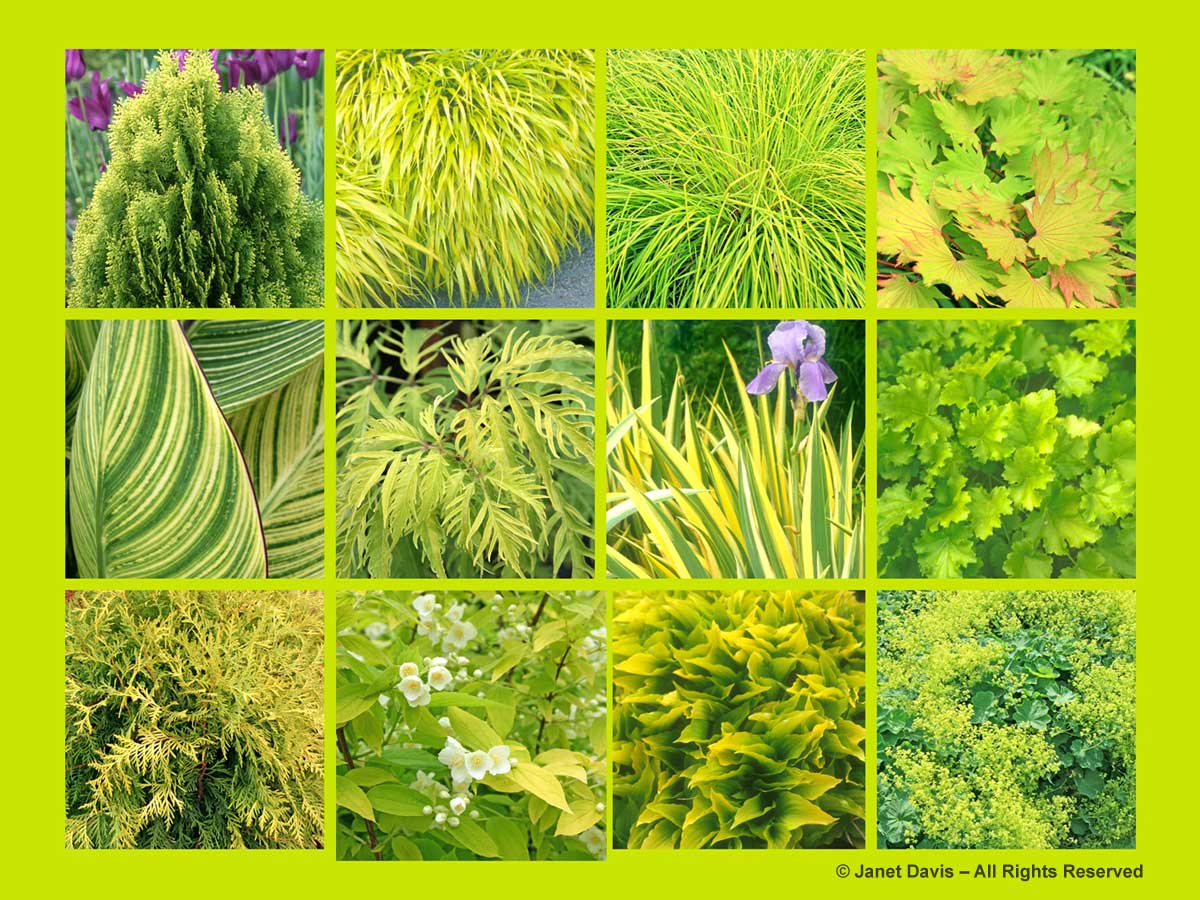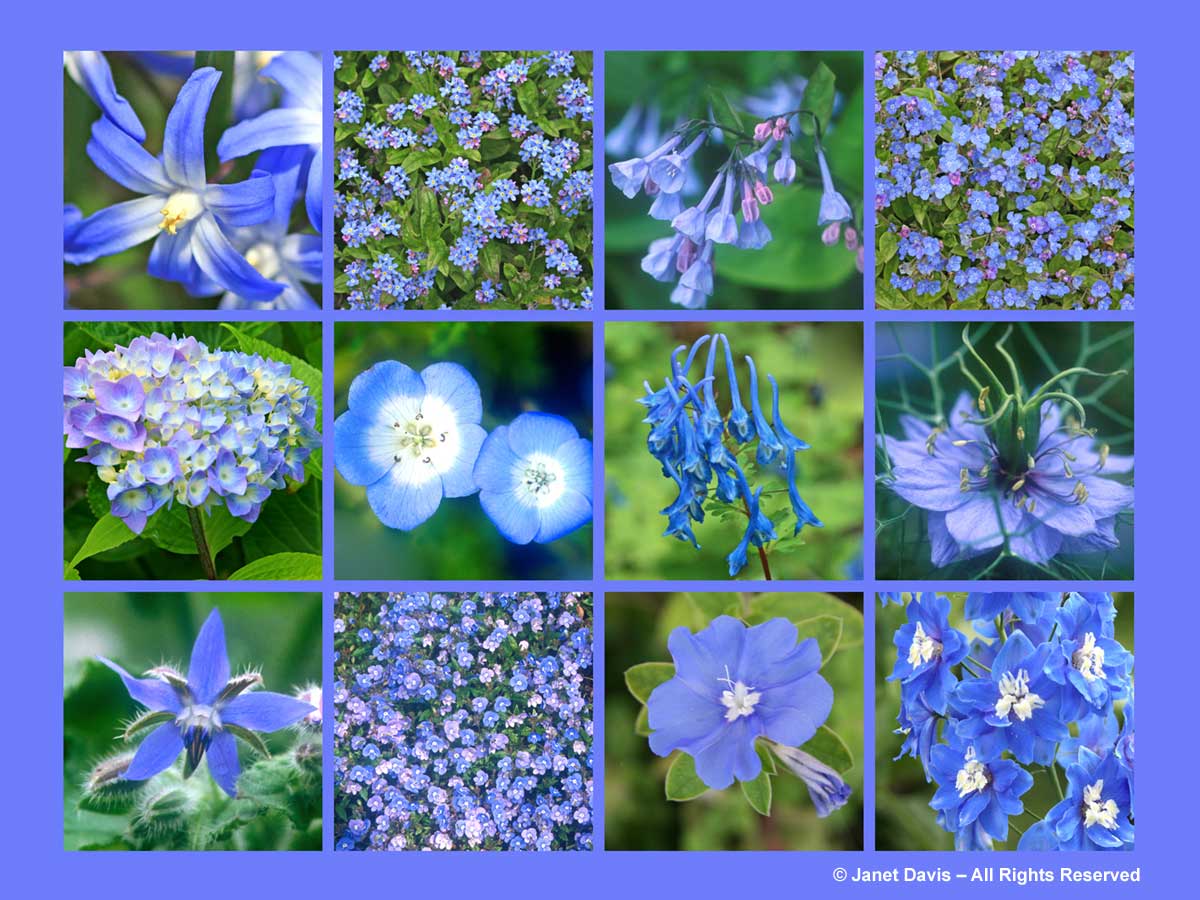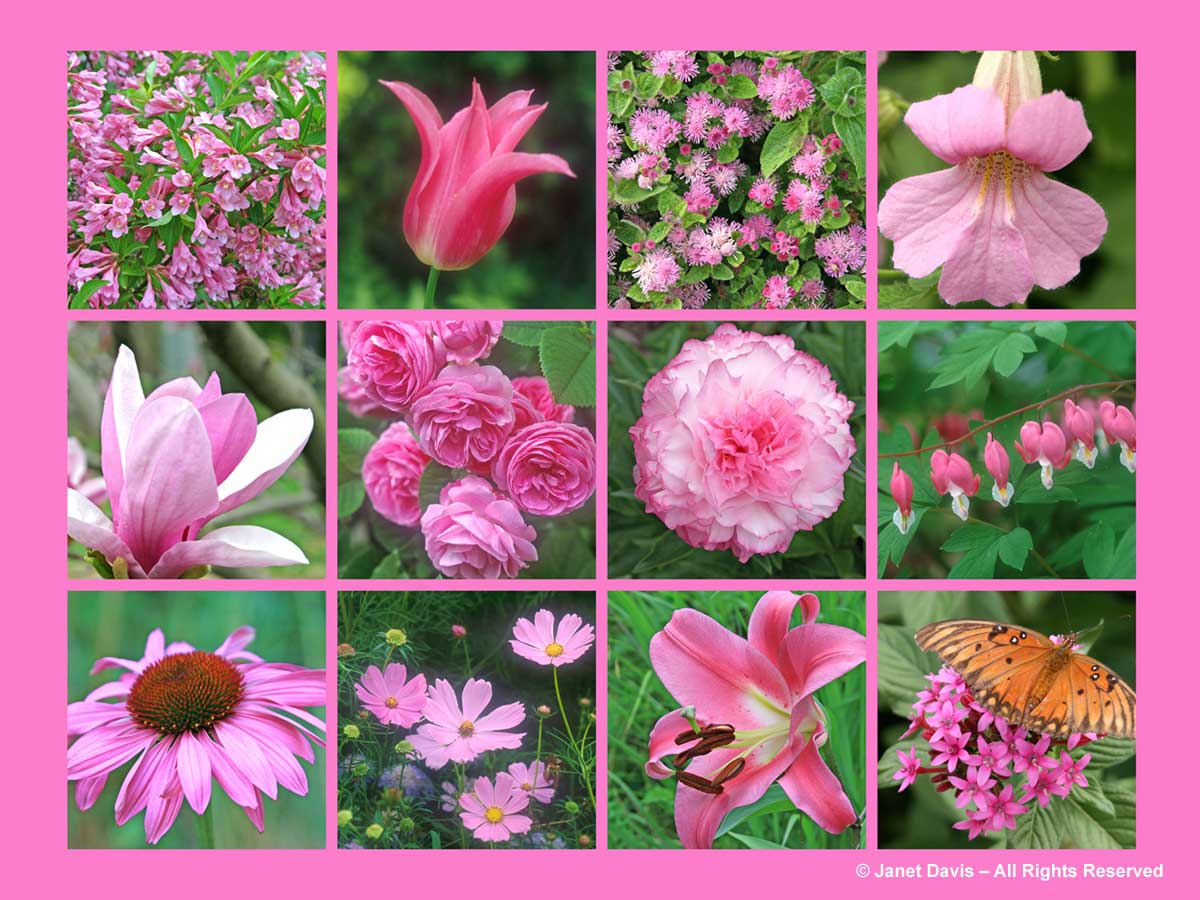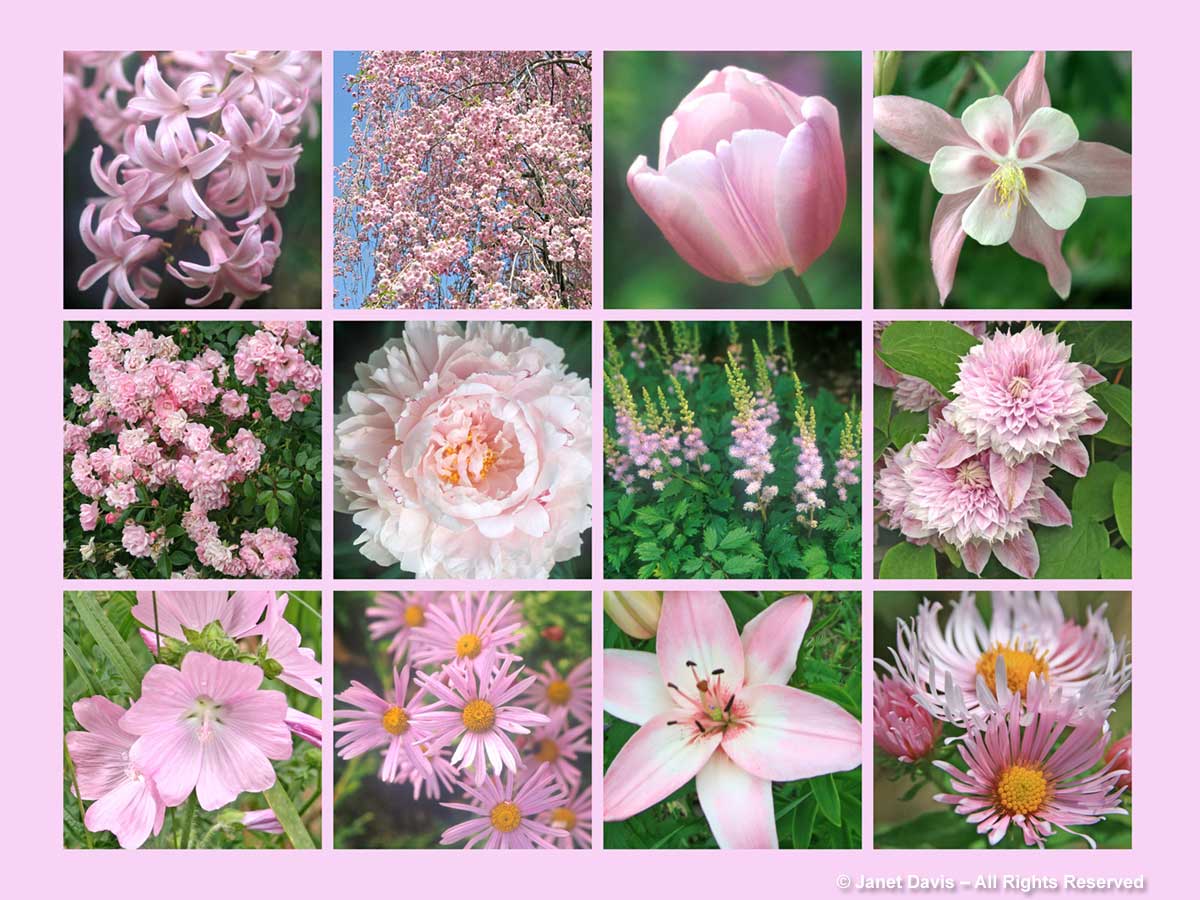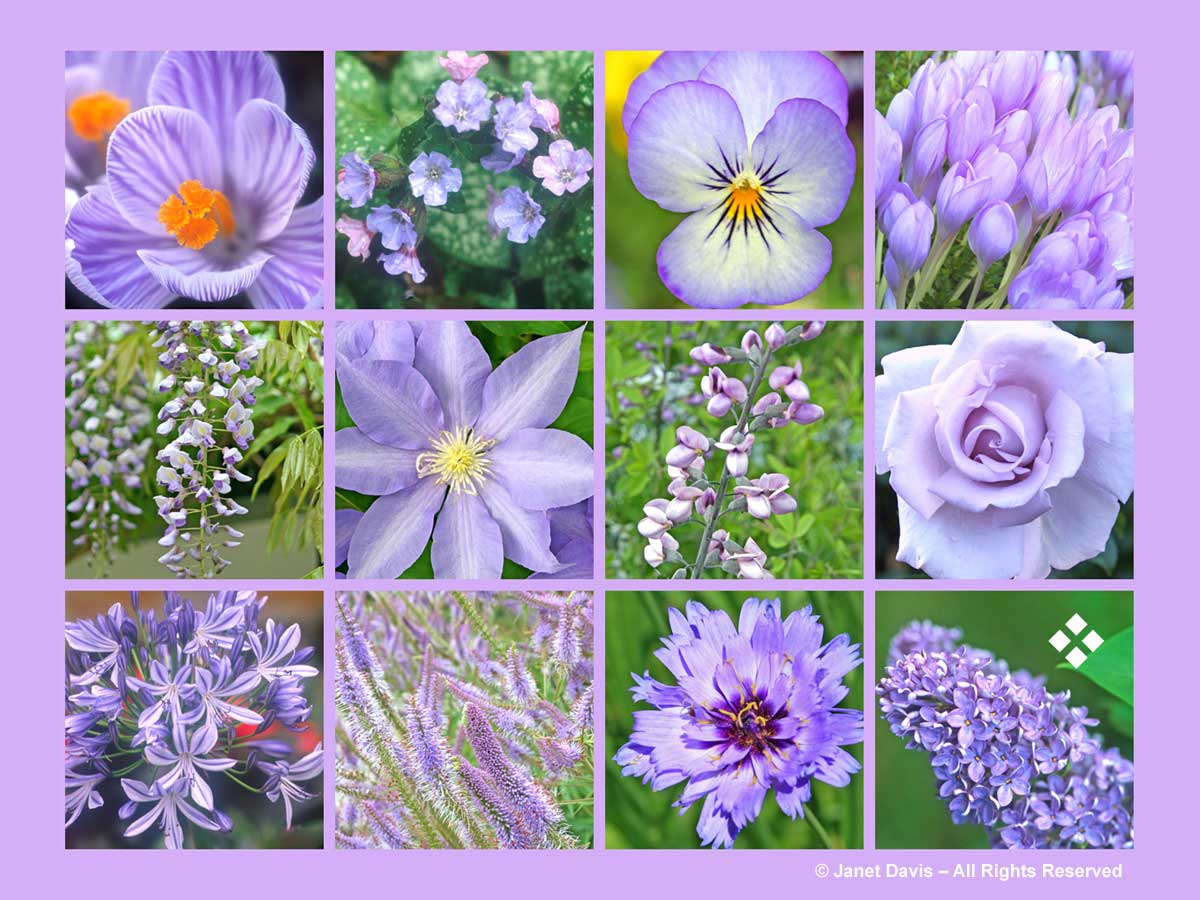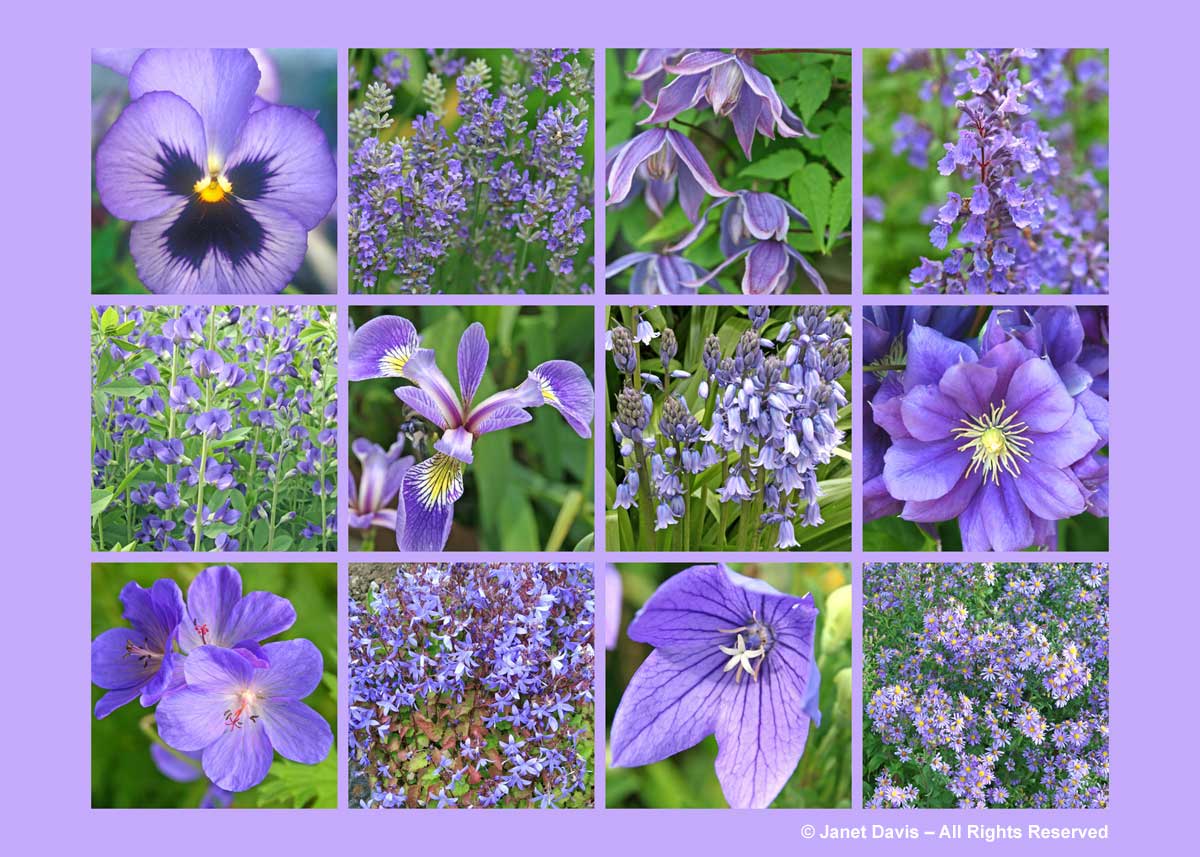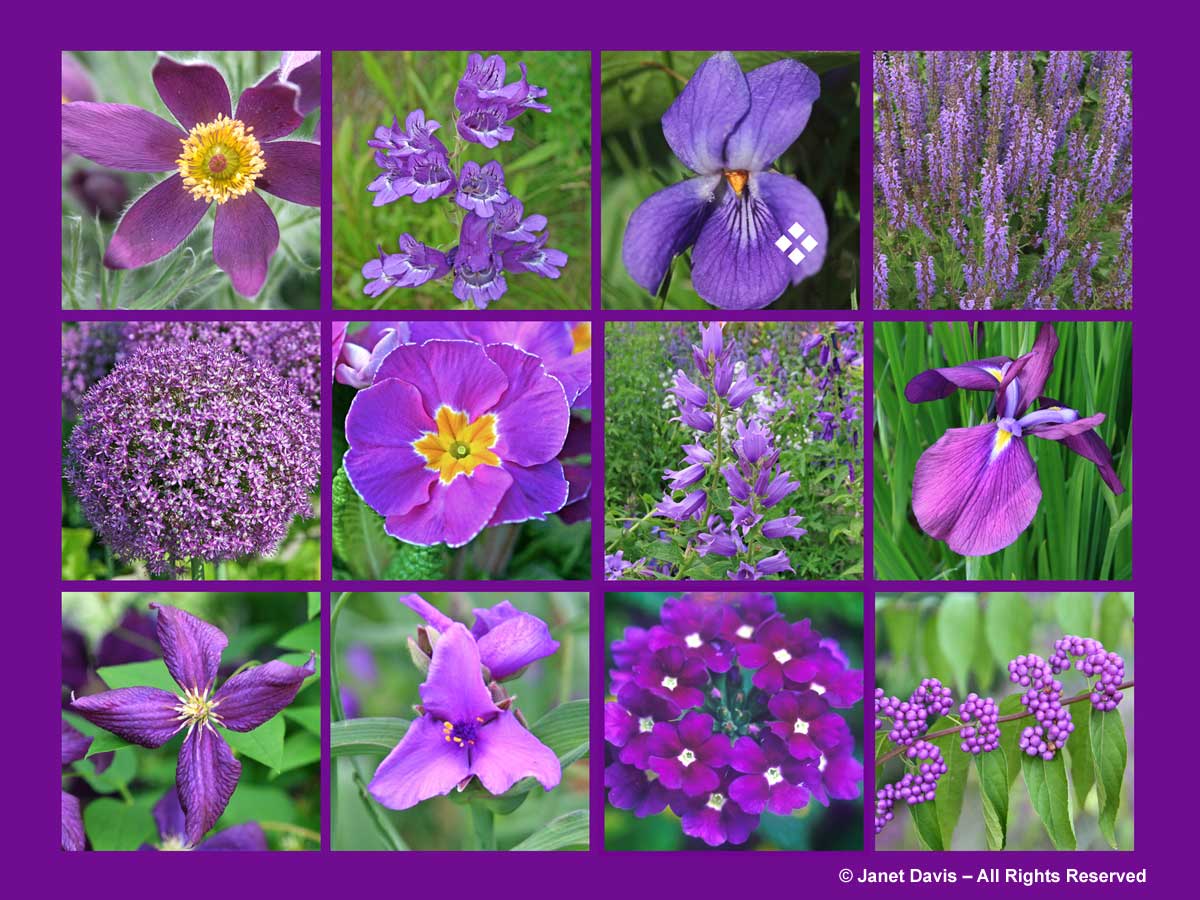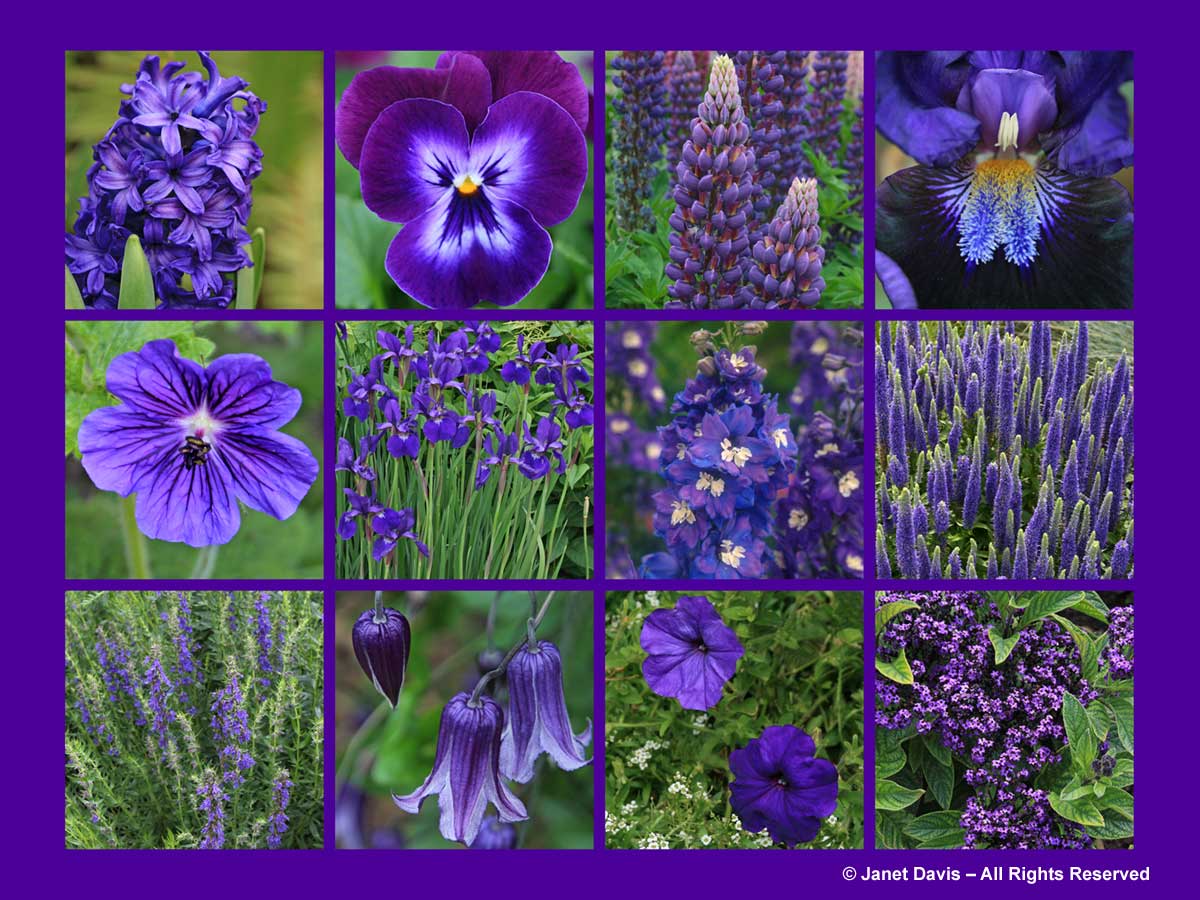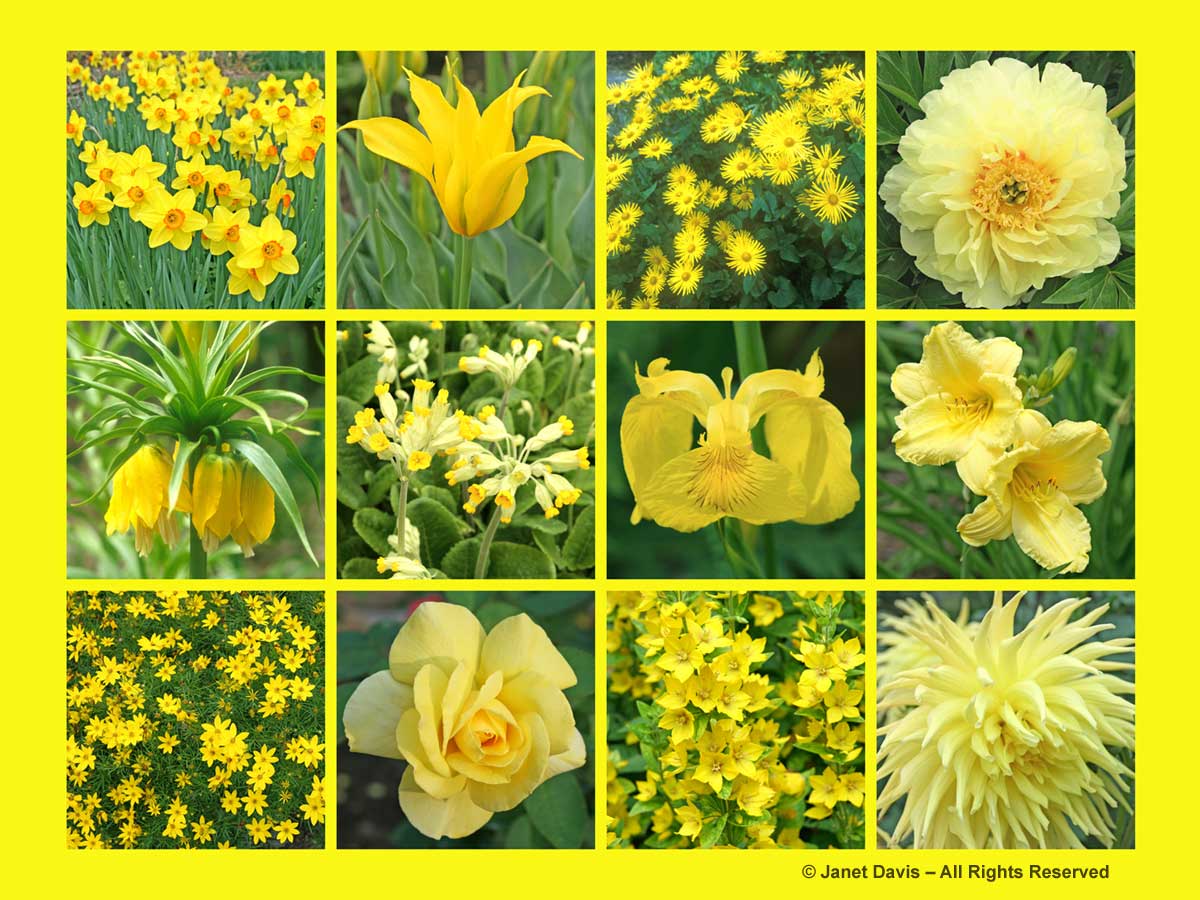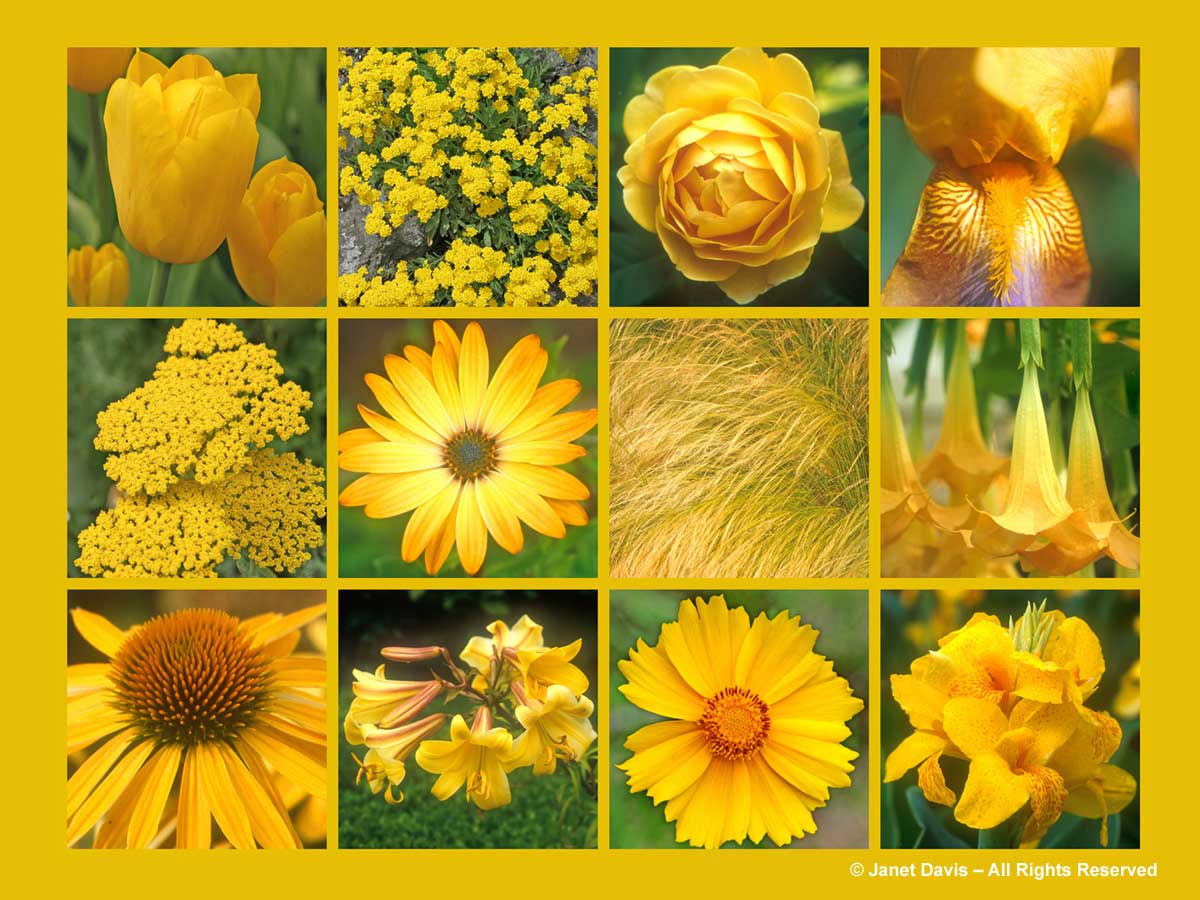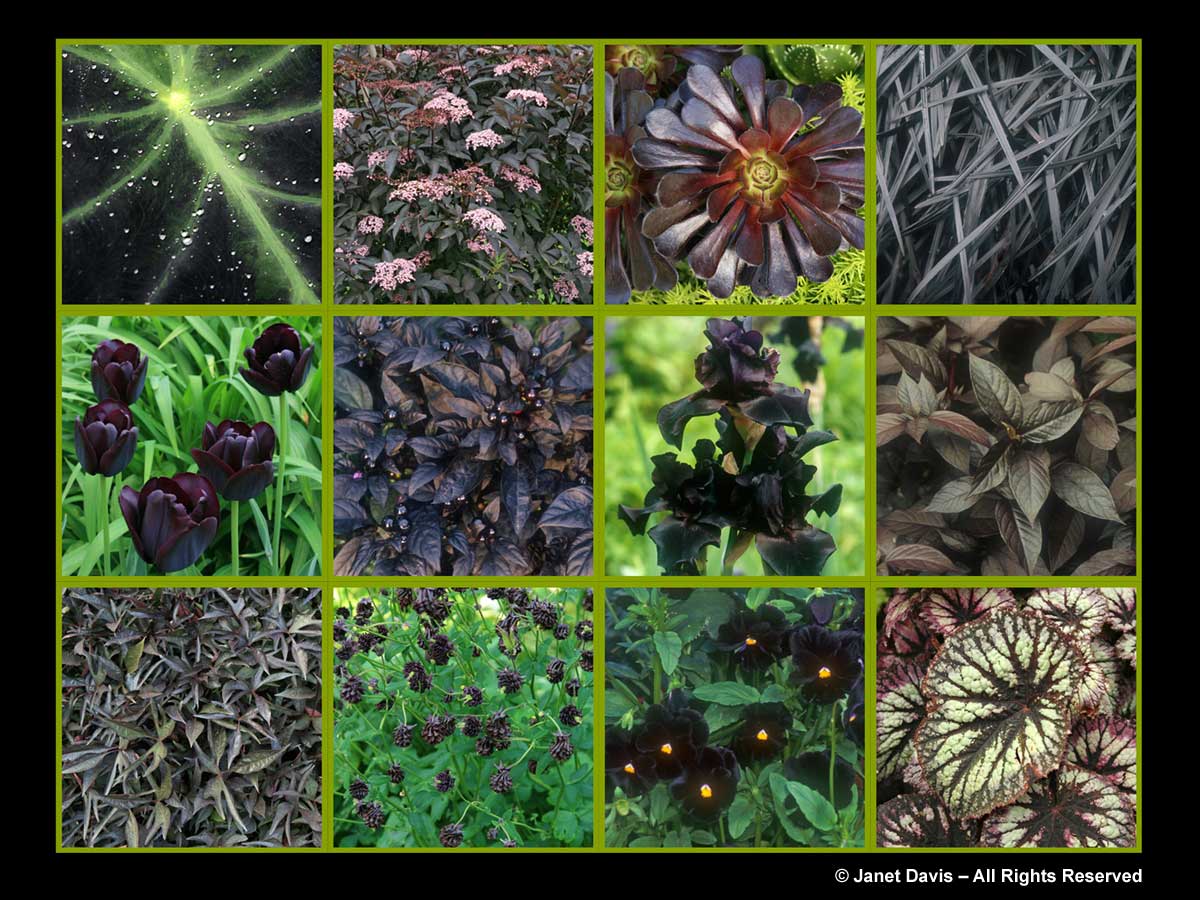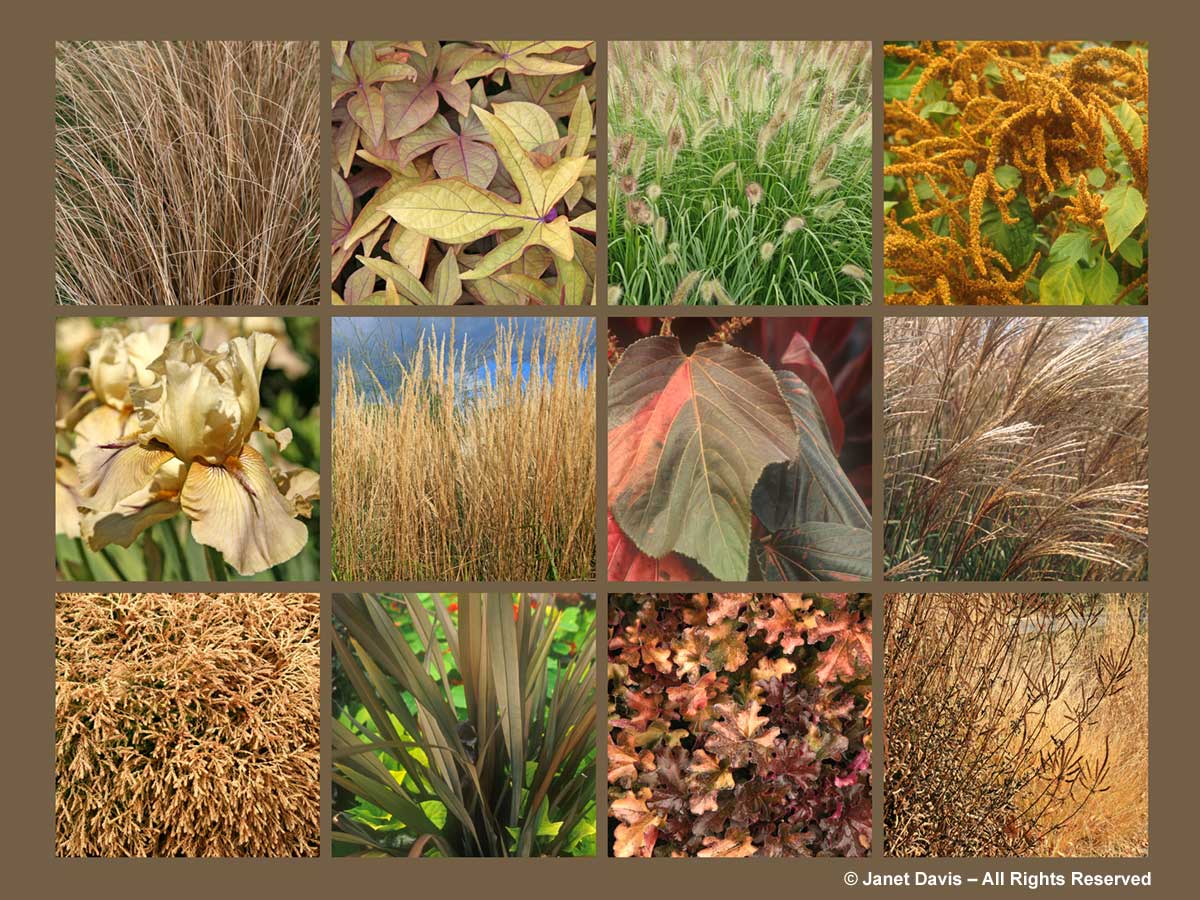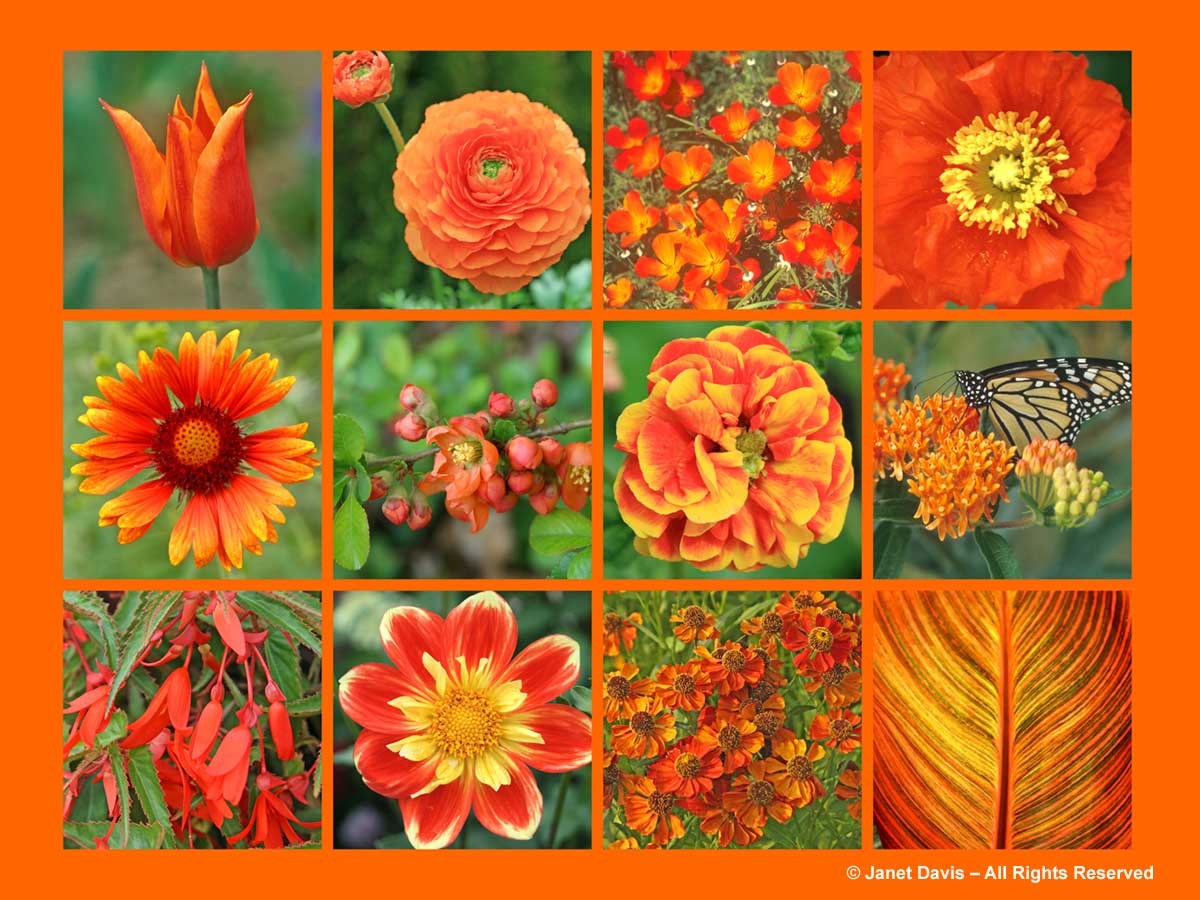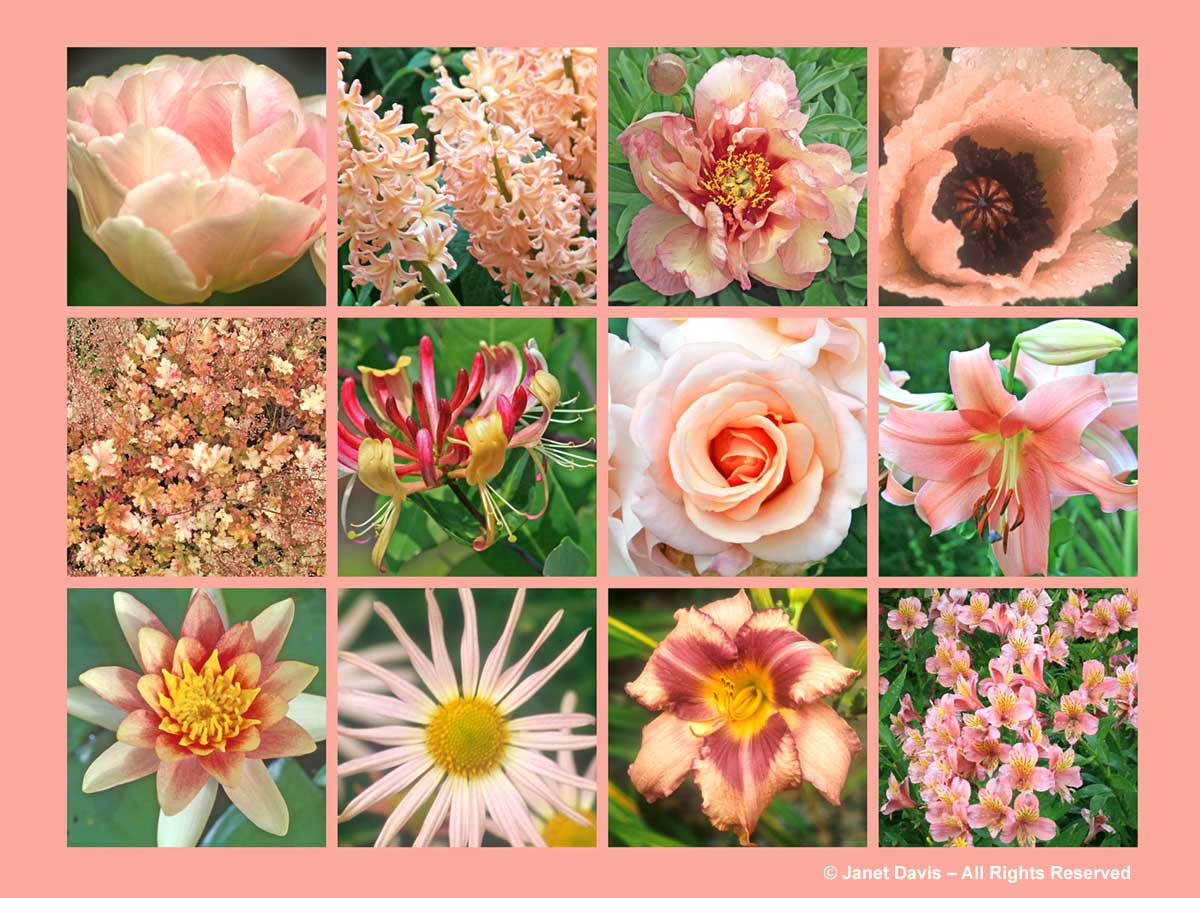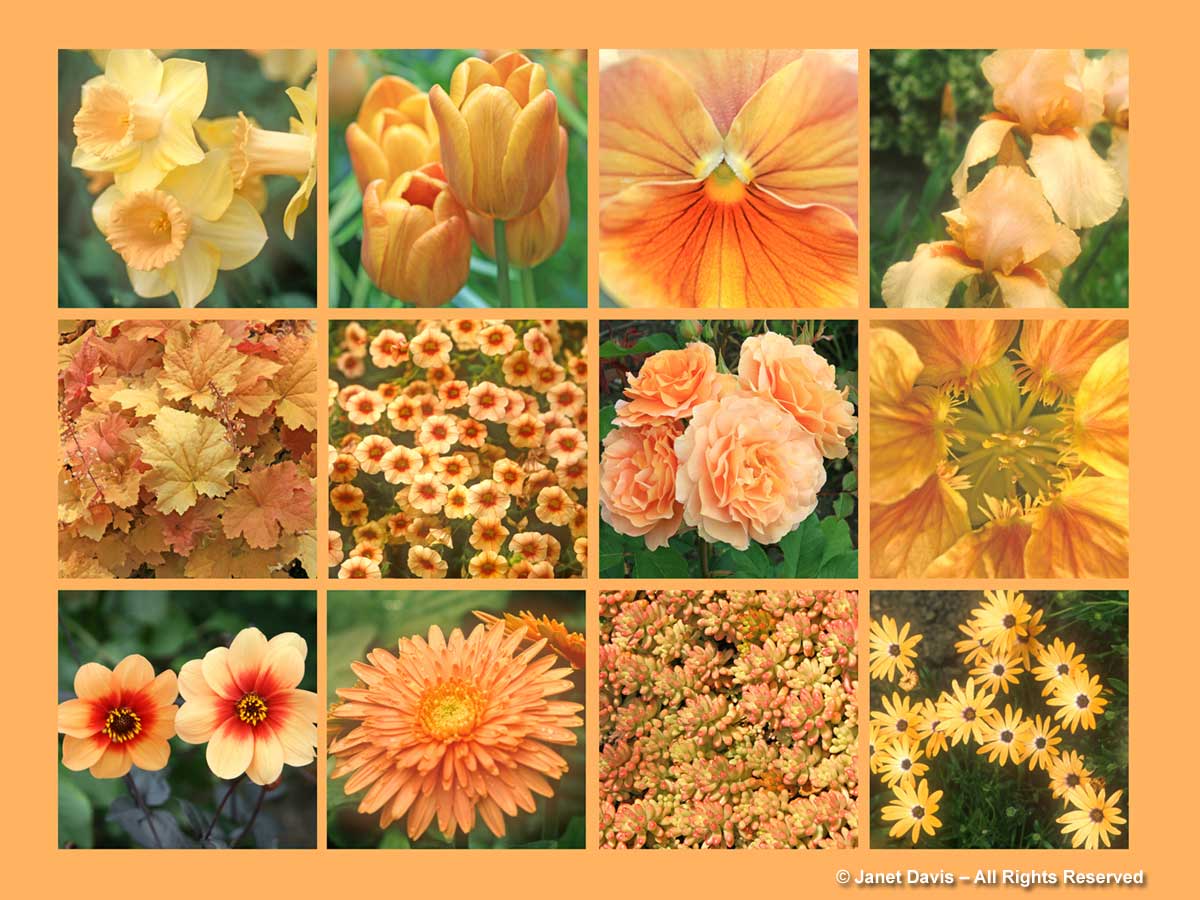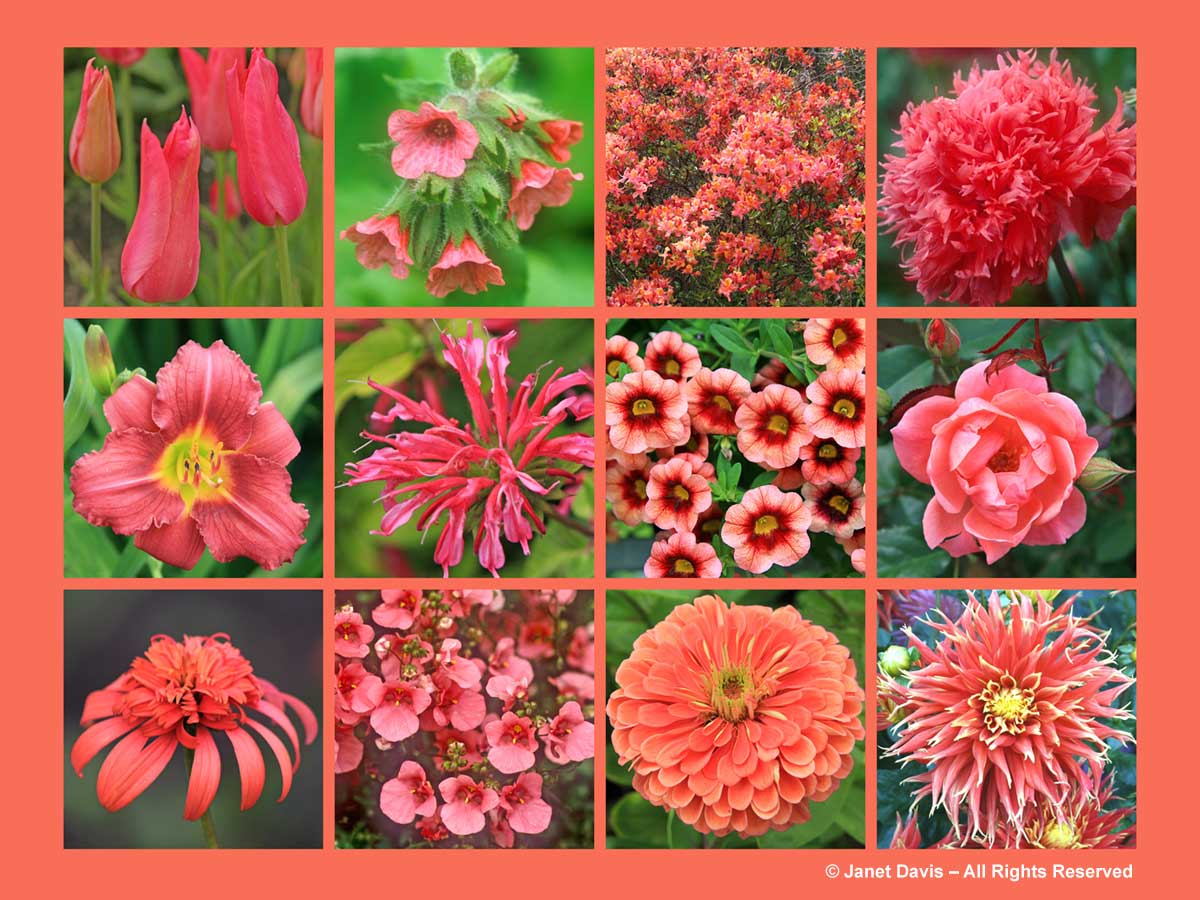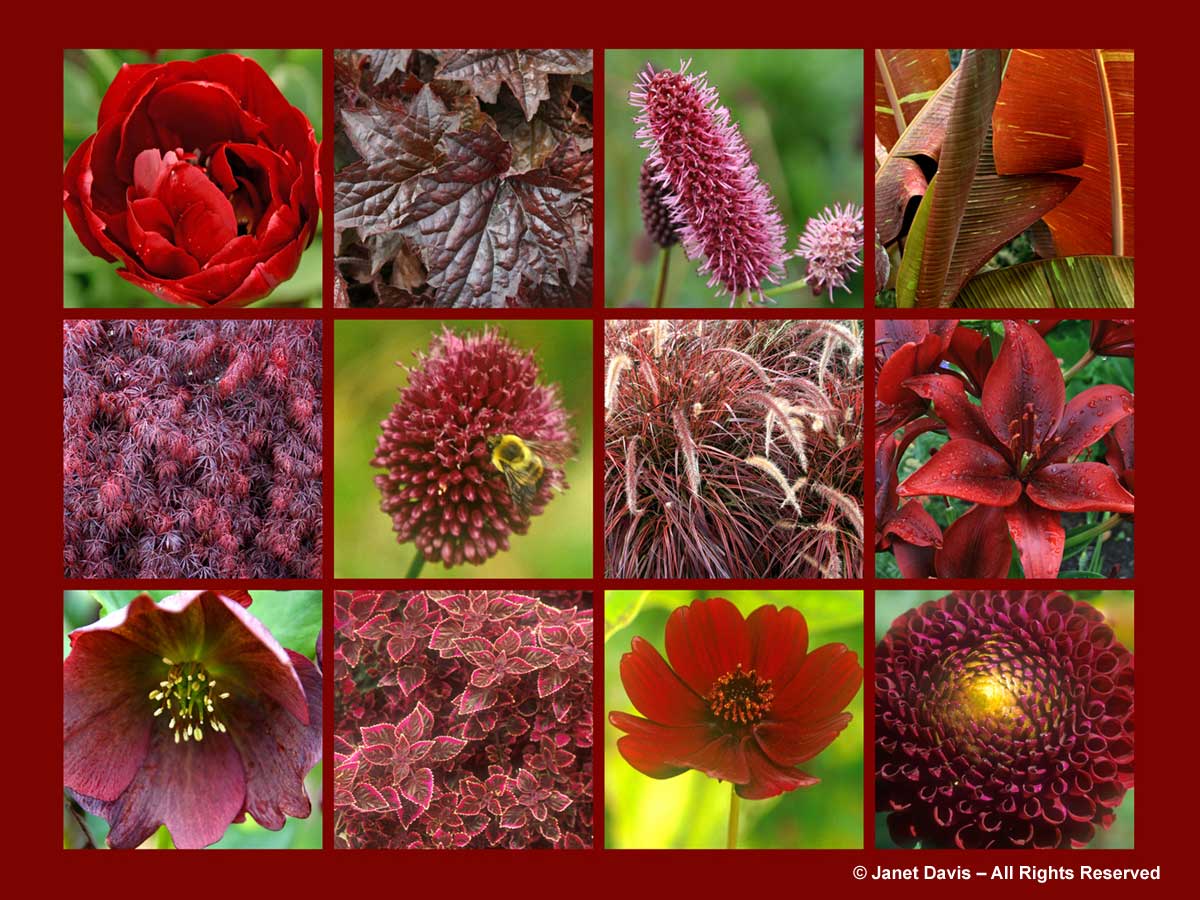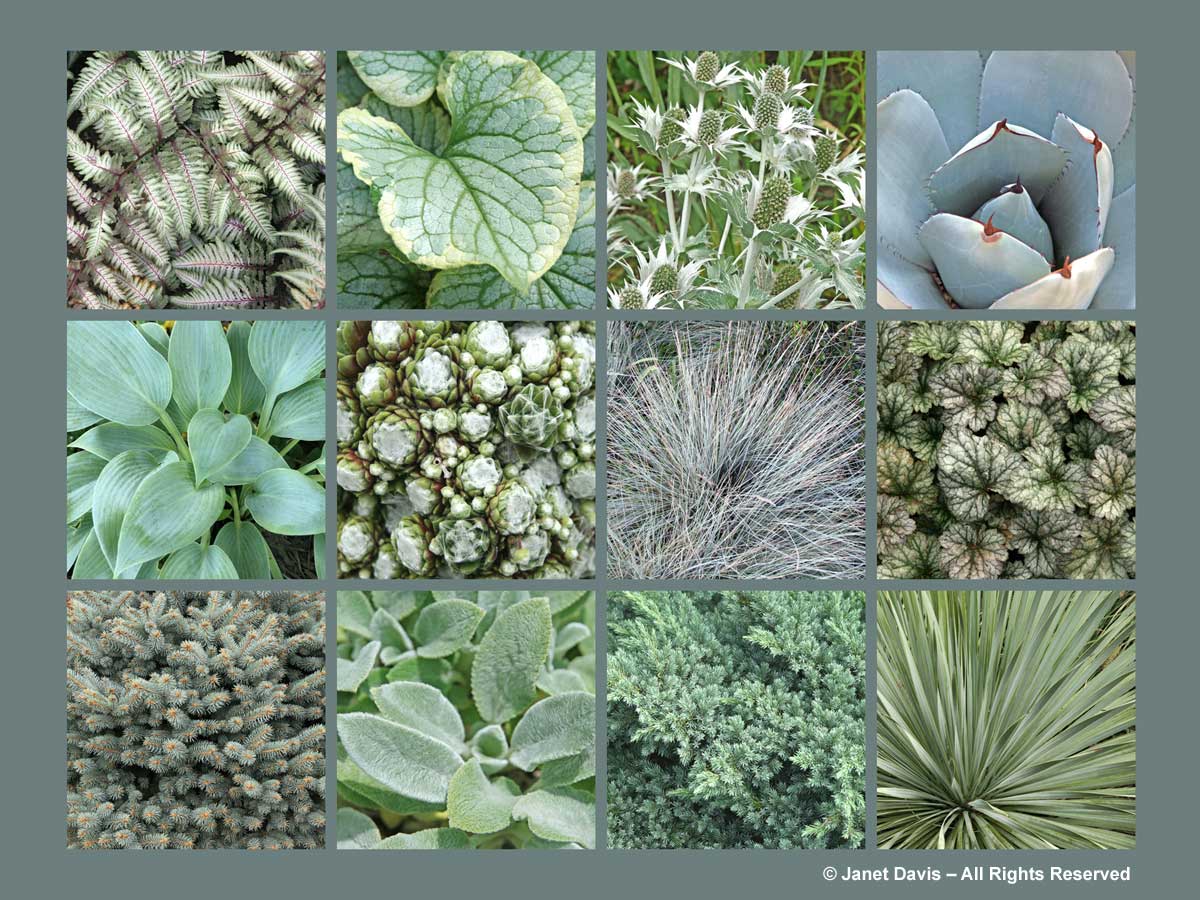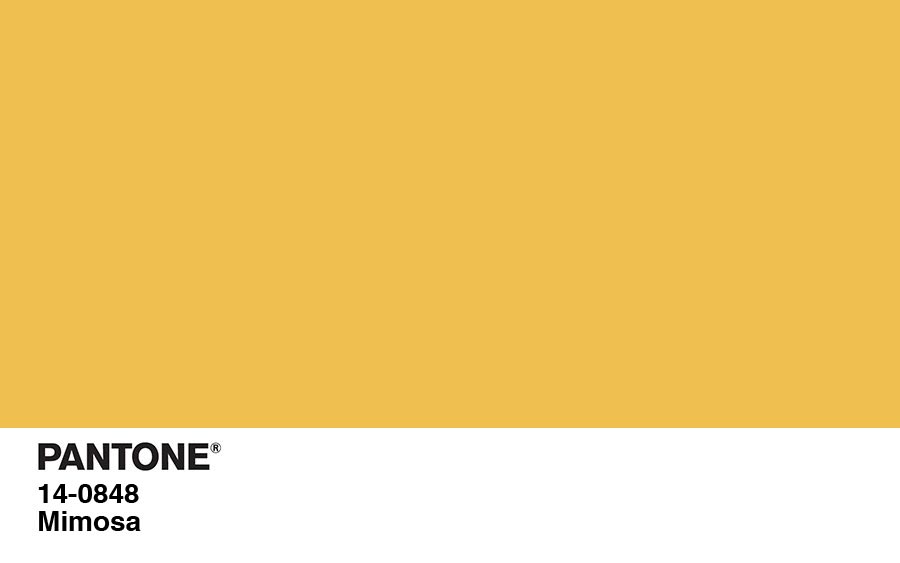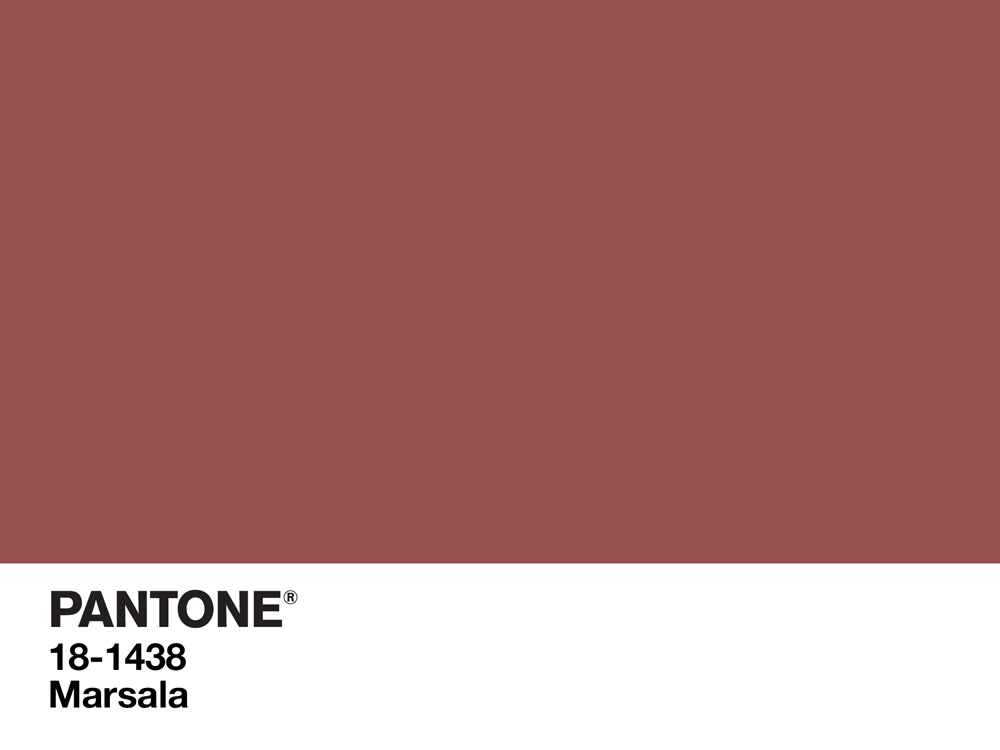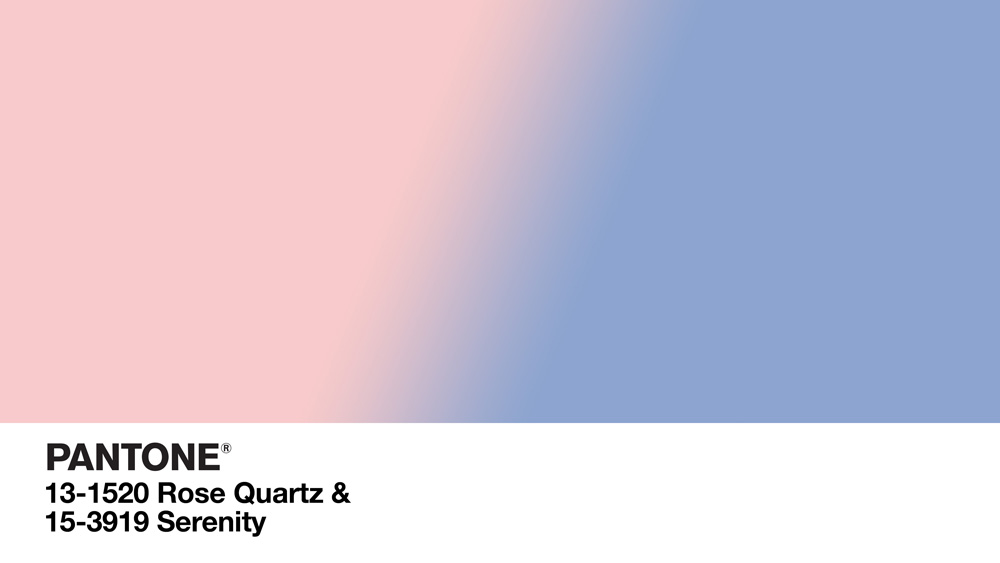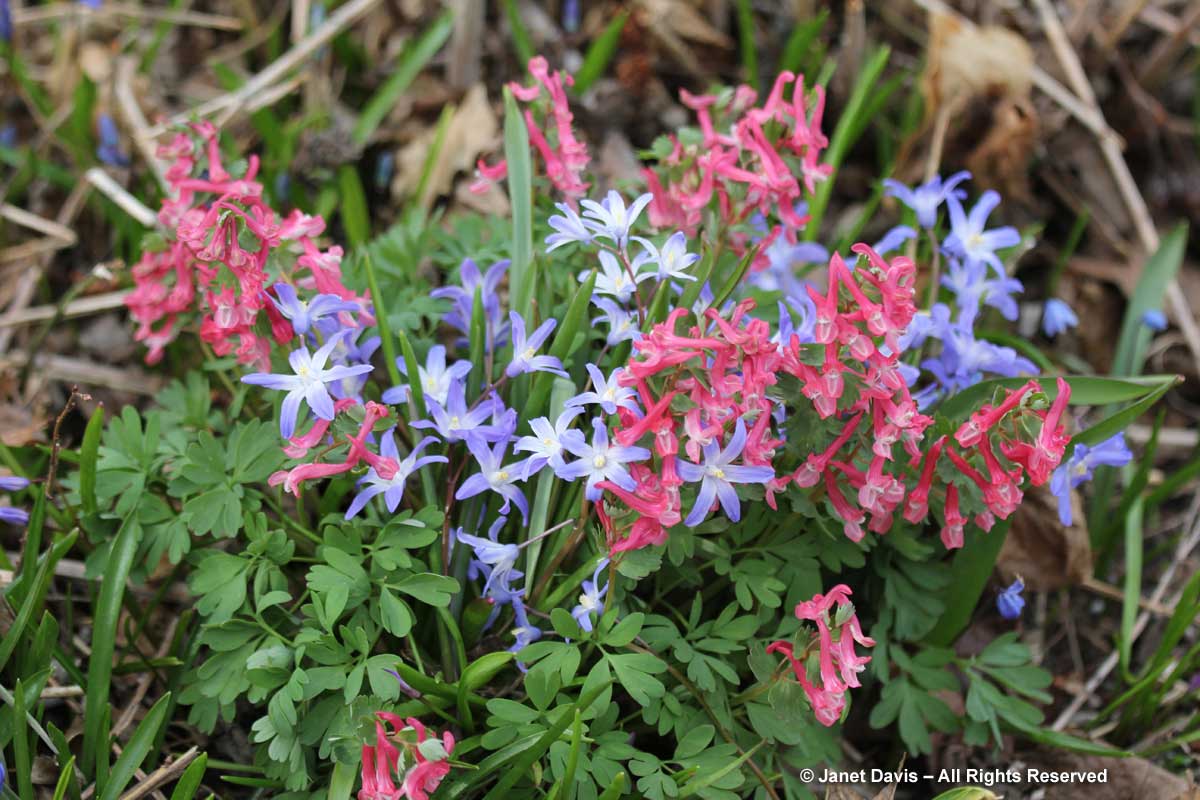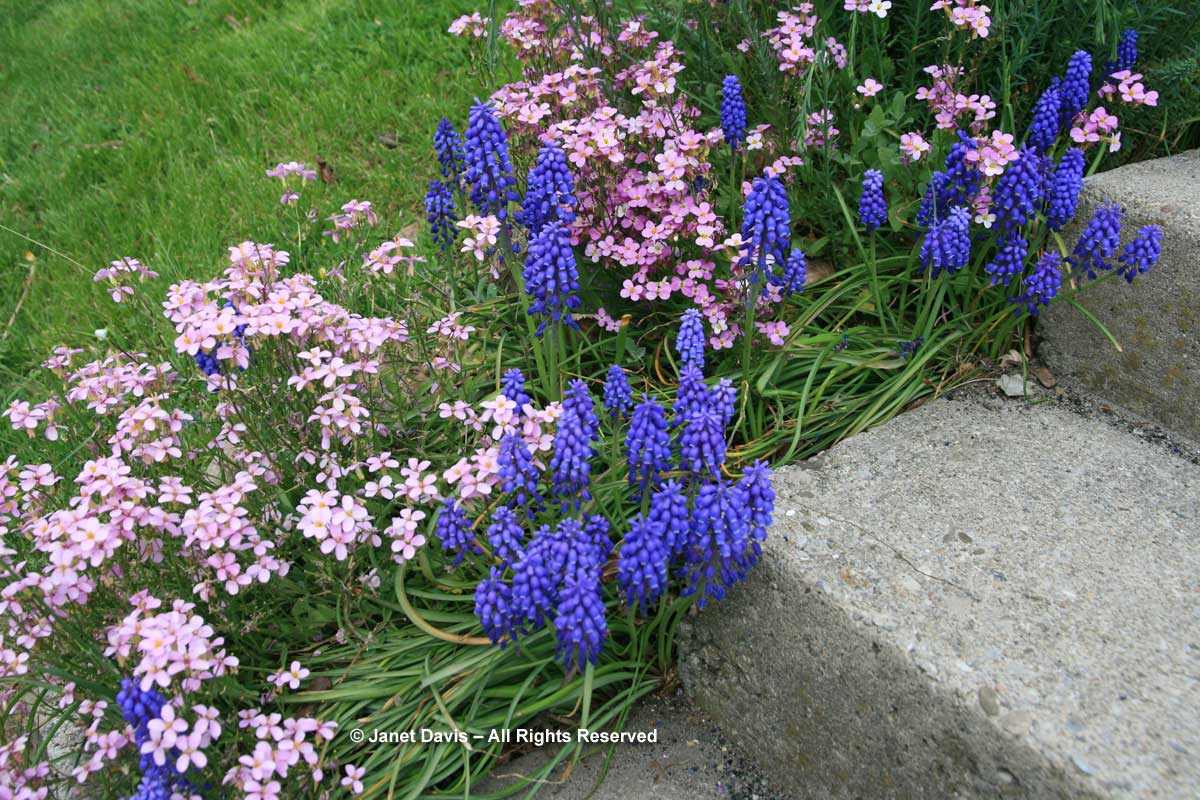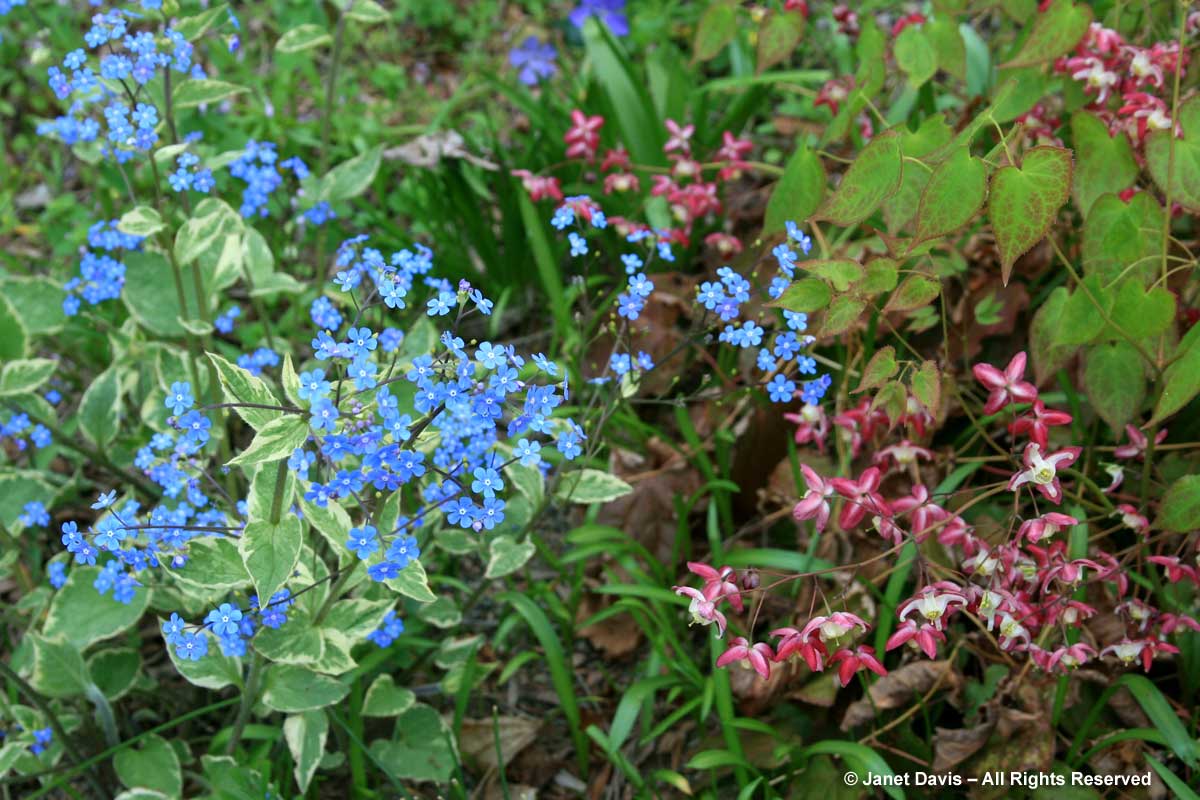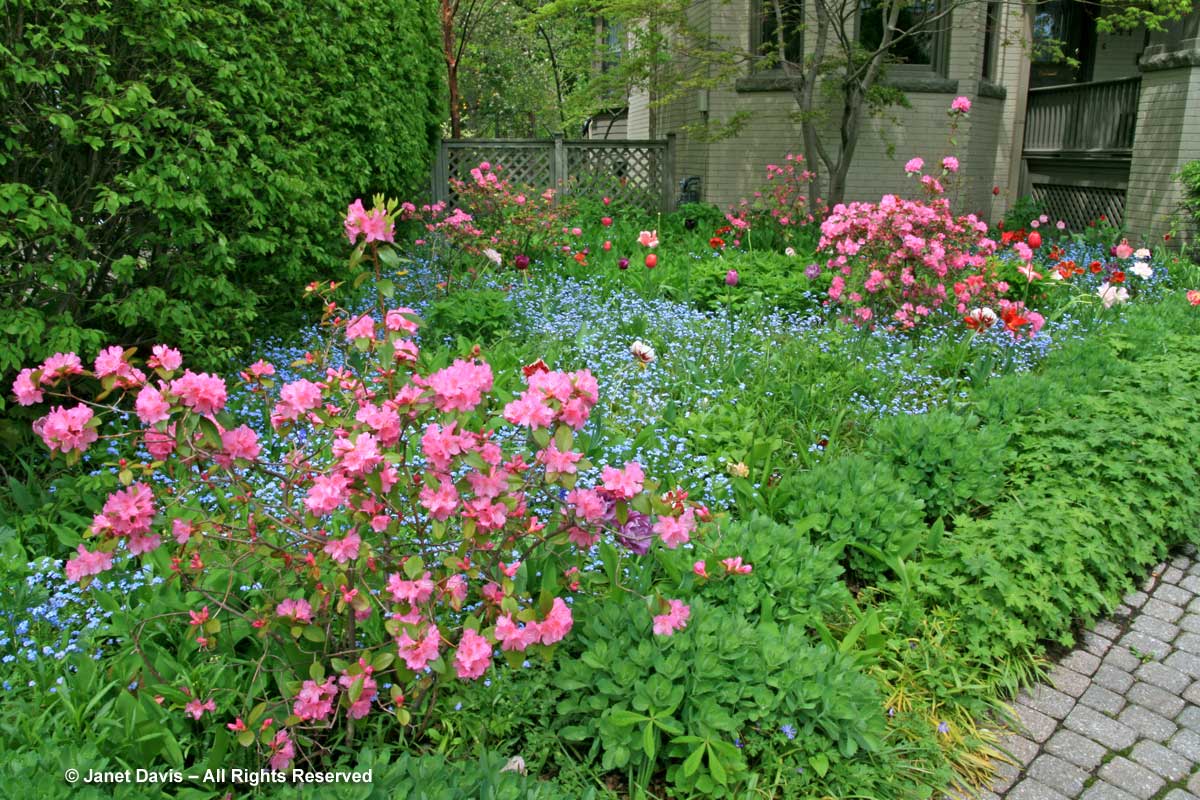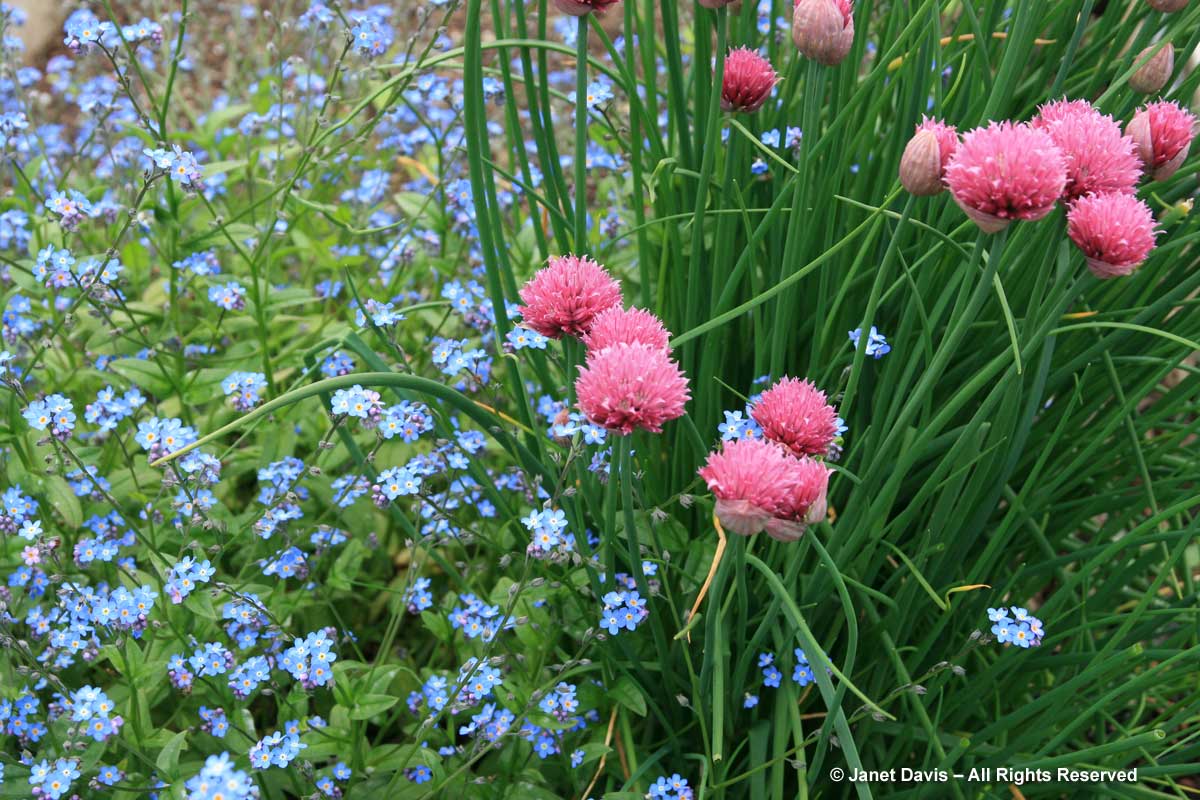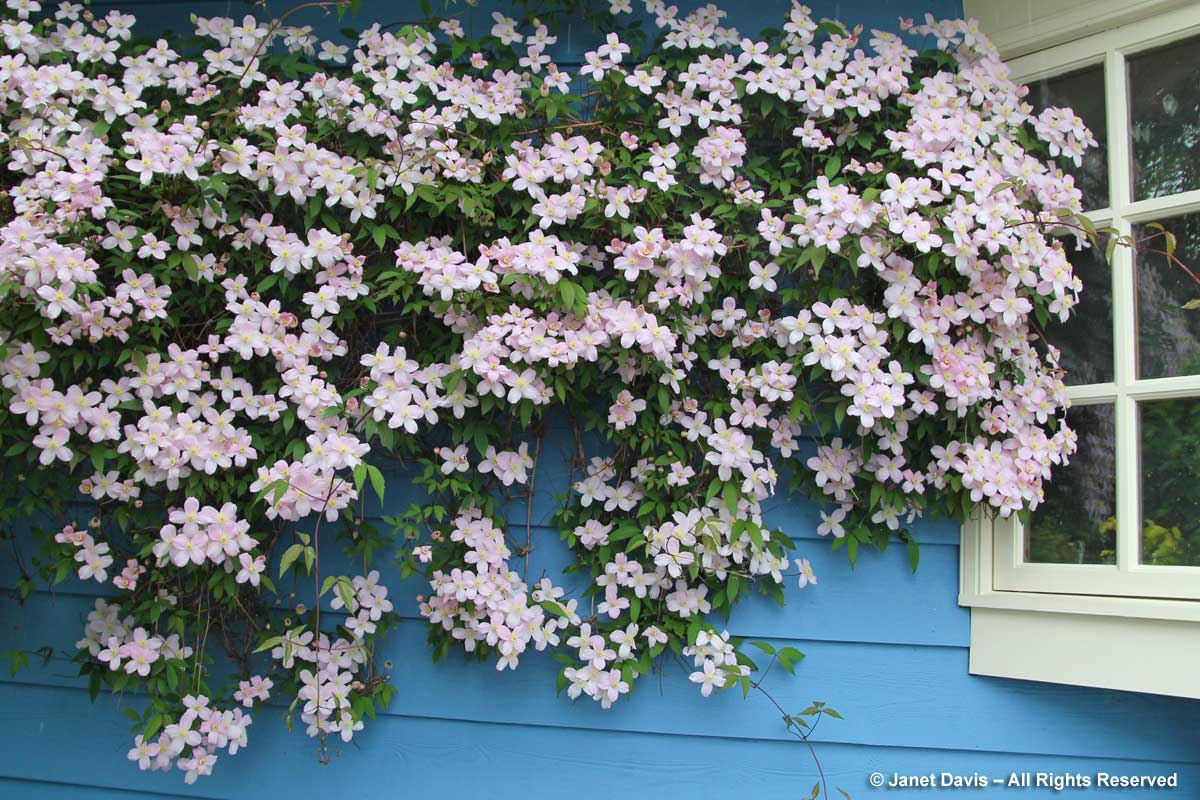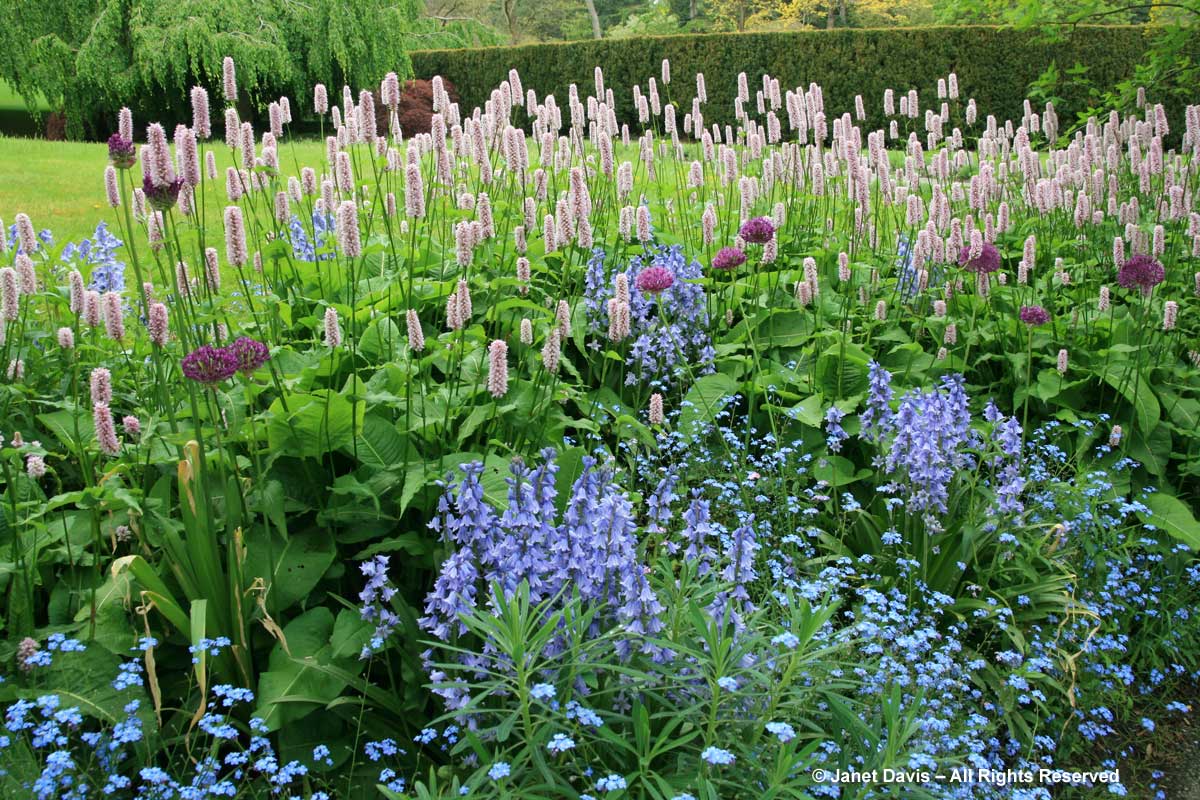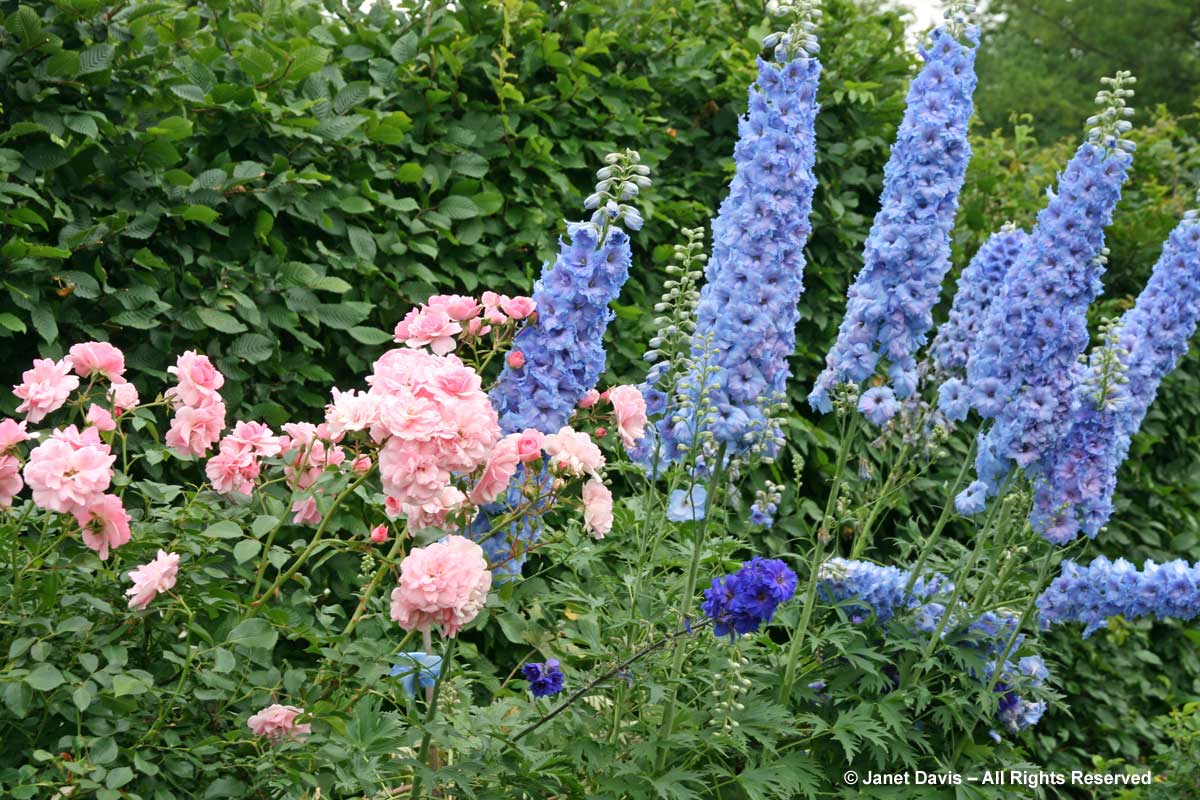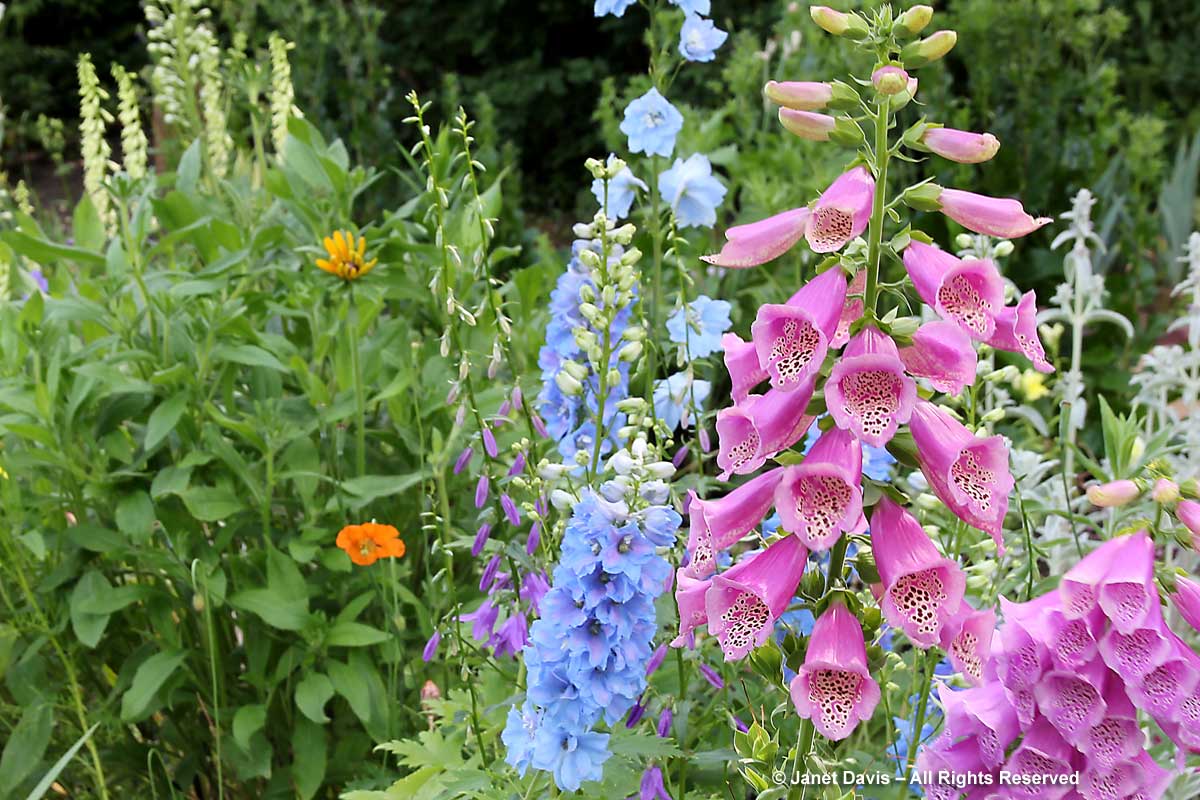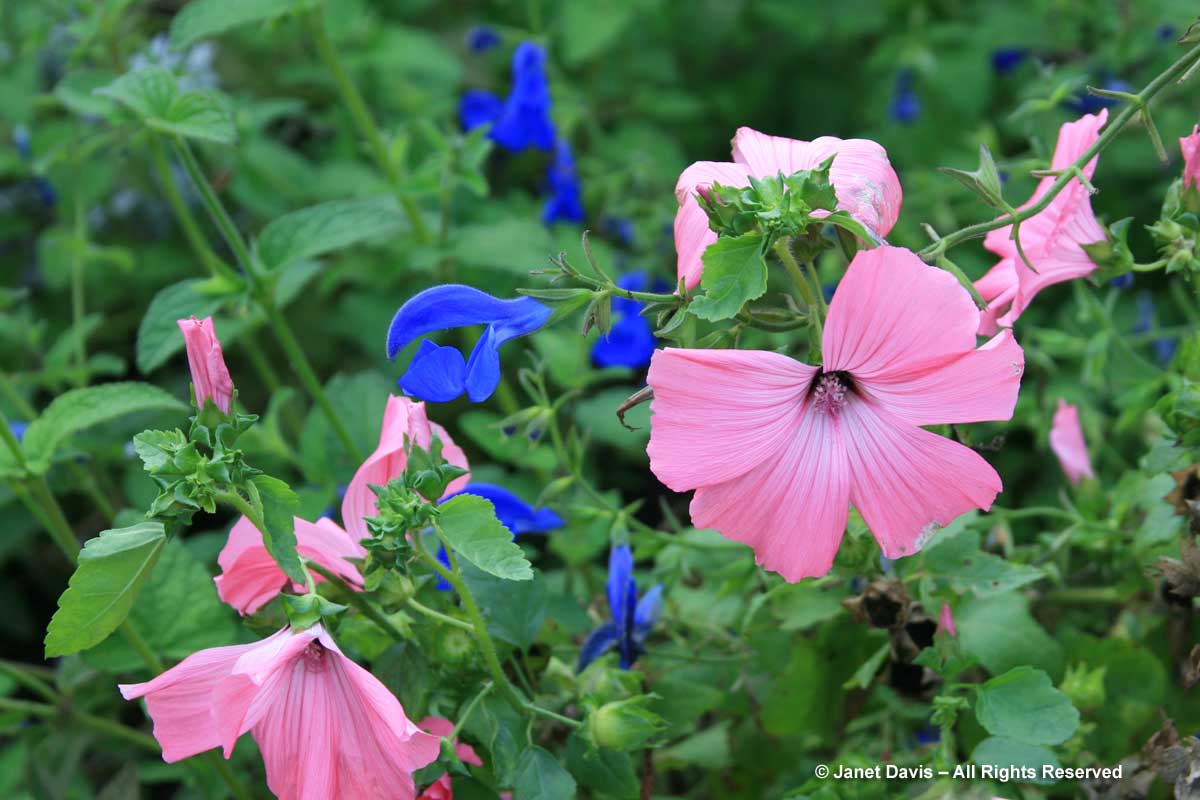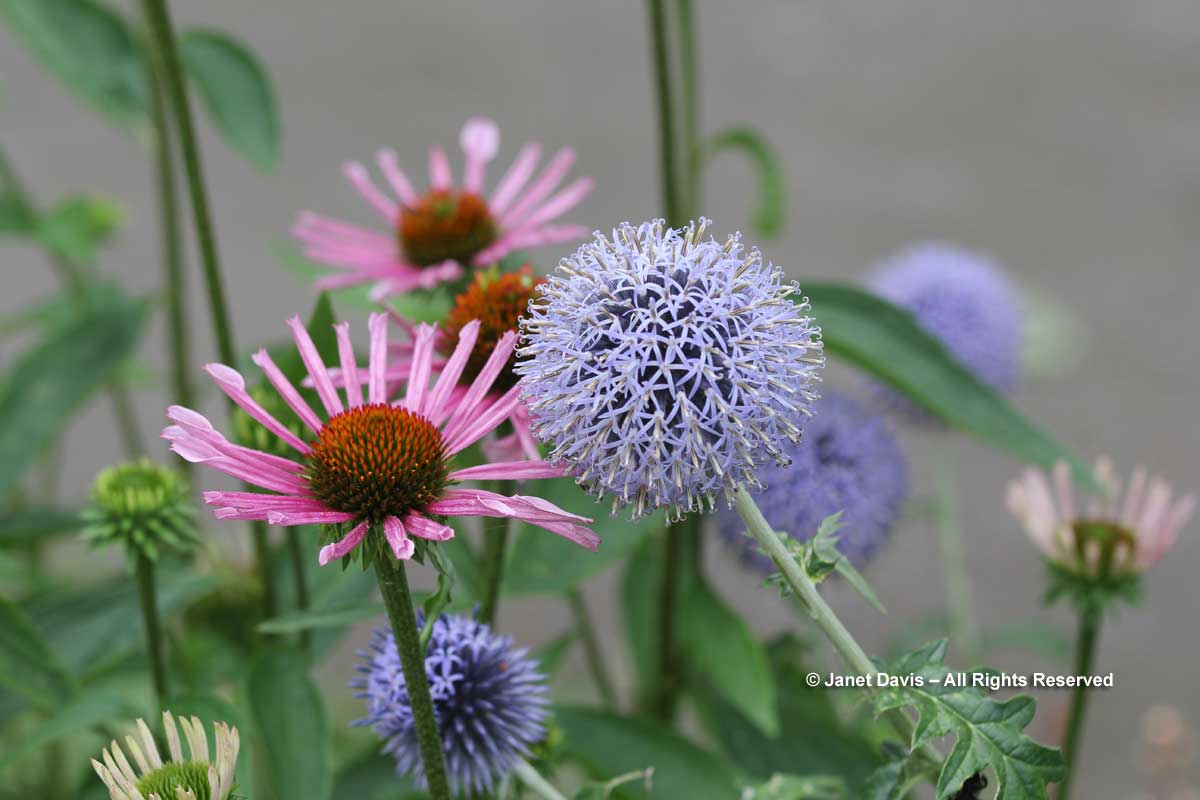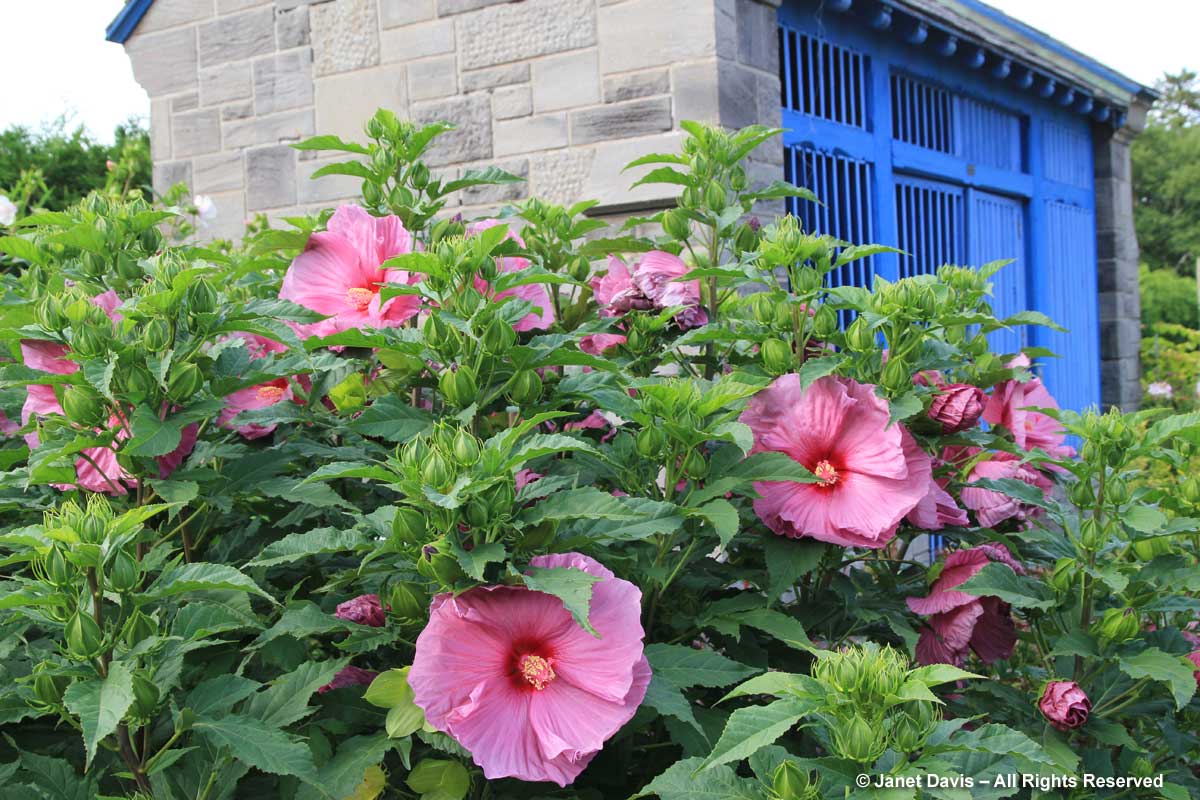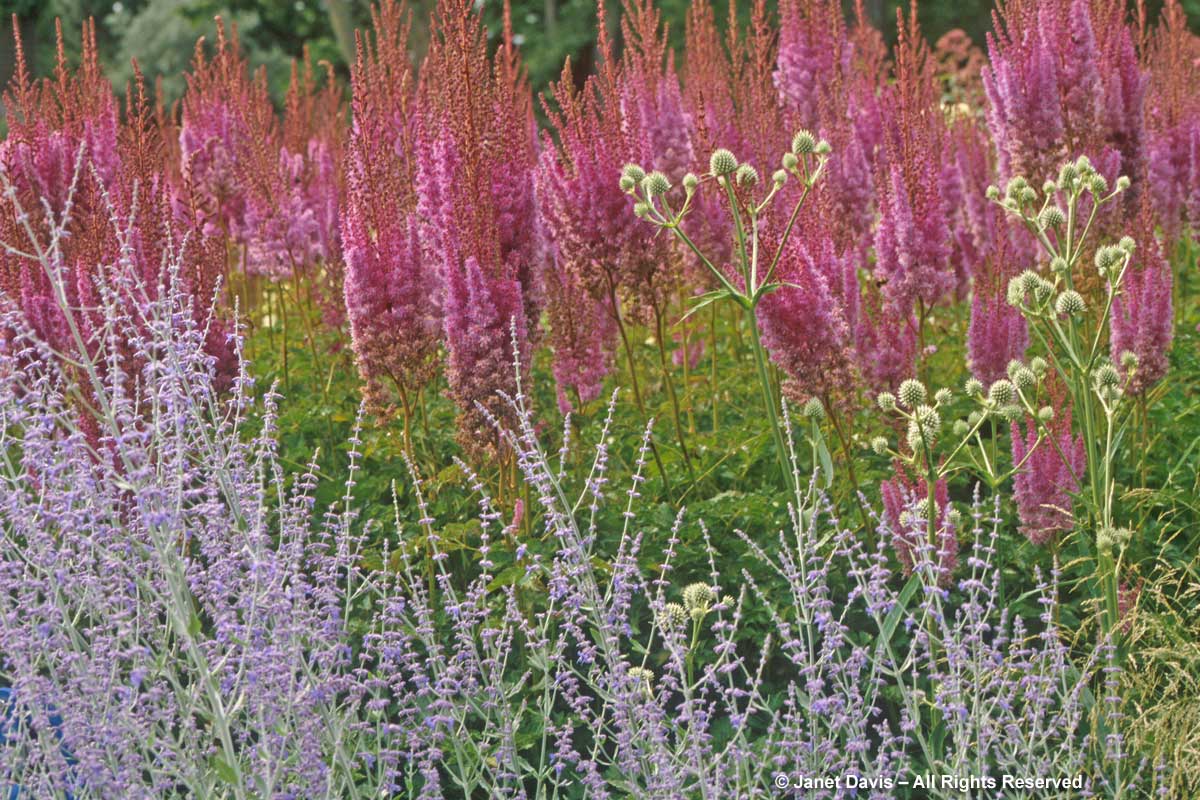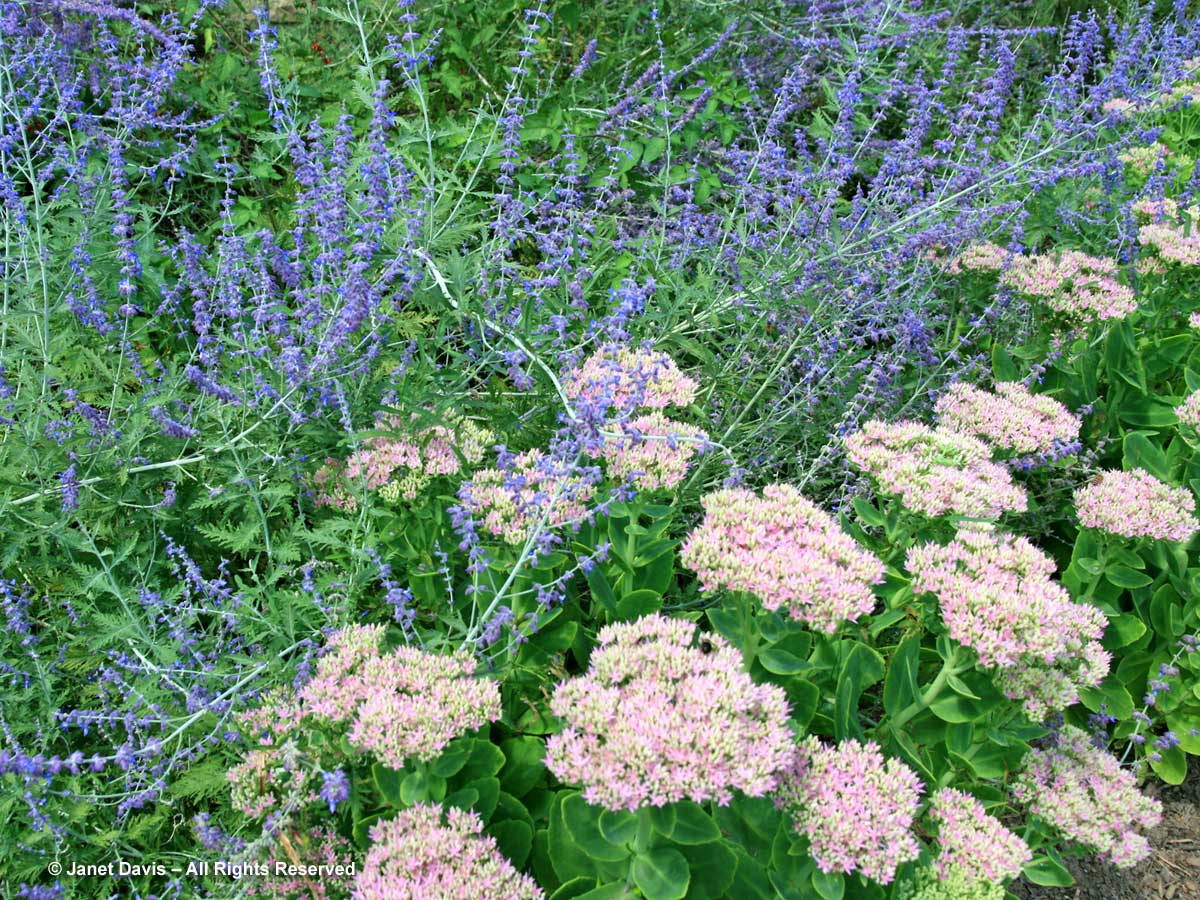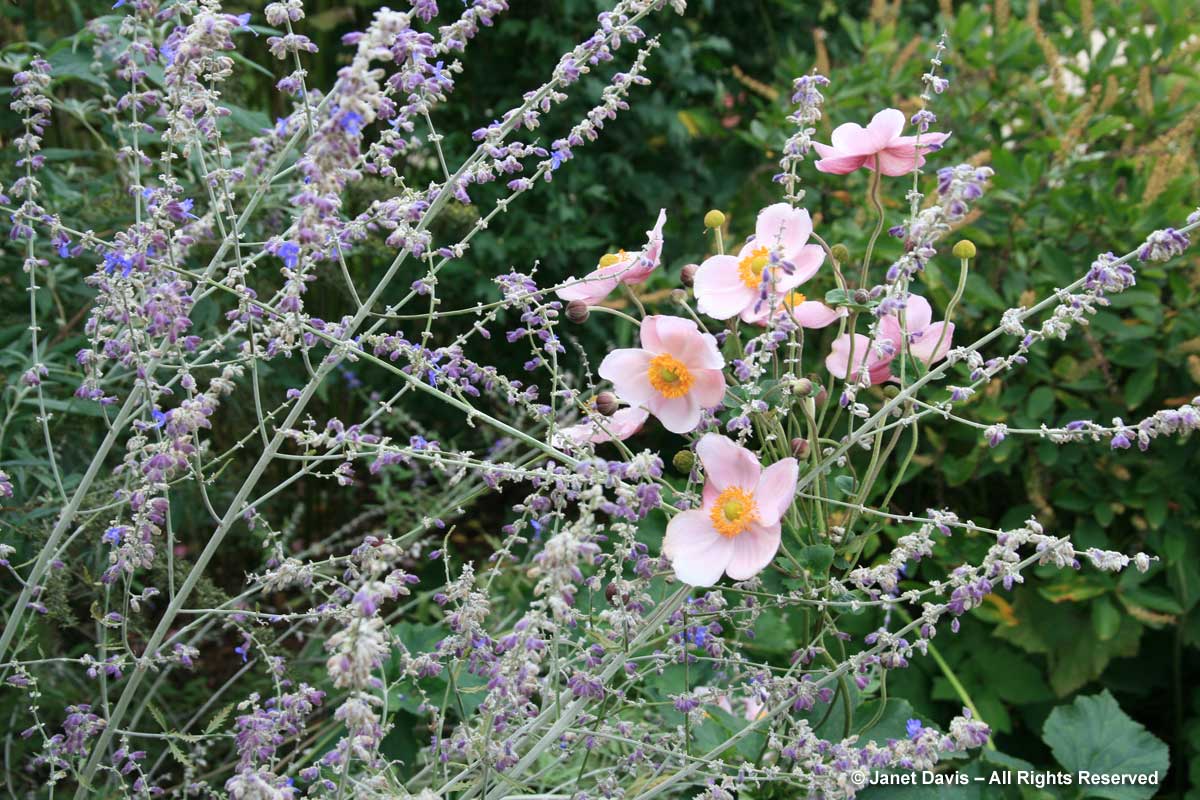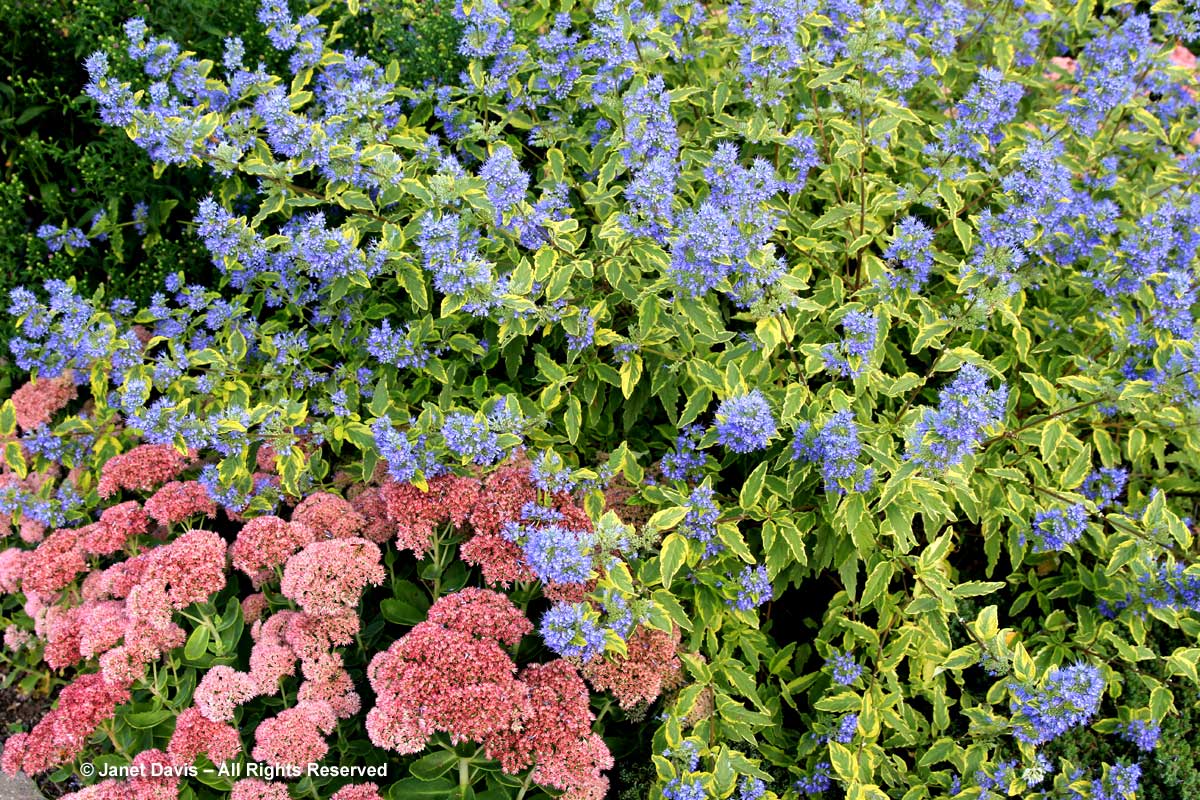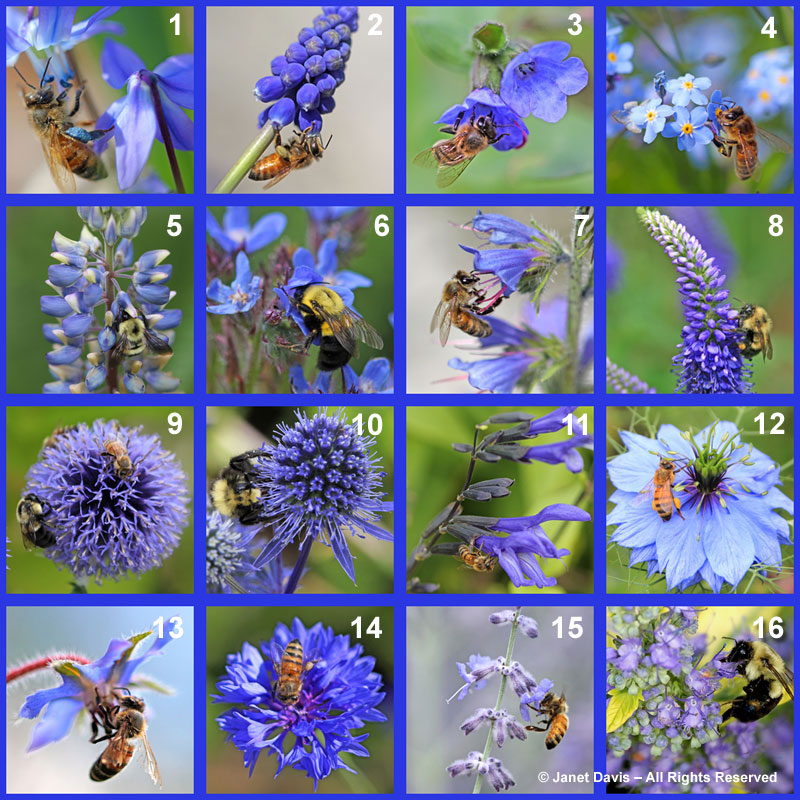Okay, corny headline. But I do want to use this blog – the second of my “blue for April” blogs – to ‘remember’ how much I adore the effect of forget-me-nots in the spring garden. Sometimes, on a lovely May morning, as I’m looking at the robins bathing in the lily pond in my back garden, I’ll squint a little and imagine what it would look like without that lacy froth of light blue under the ‘Red Jade’ crabapple tree. Dirt, that’s what it would look like, and the emerging green of perennials, of course. But not nearly as enchanting as the soft blue cloud that floats around the lily pond.
Forget-me-not – Myosotis sylvatica. The botanical name comes from the classic Greek word for the genus, muosōtis, from mus- ‘mouse’ +ous, ōt- ‘ear’. And the specific epithet sylvatica means “of the forest” or woodland. So, mouse-eared plant of the woodland. As for the common name, it comes from the German: Vergiss-mein-nicht (appropriate, because it’s a European plant) I can’t think of another plant that gives so much and asks so little. Reasonable soil with a little moisture, that’s it. And when I say “soil”, I’m measuring in square inches, because that’s the way forget-me-nots plant themselves. Biennial, they only need a tiny patch of ground to germinate those prolific seeds in late spring, content to grow their roots and develop a small rosette of leaves in the first summer.
Then next spring, up they pop and away they go, flowering for weeks on end, their sky-blue blossoms a tonic with all the yellow spring lavishes around – like basket-of-gold (Aurinia saxatilis), seen here.
But speaking of yellow, forget-me-nots exhibit an interesting evolutionary trait developed in order to attract pollinators. But first, some basic botany: they are protogynous, meaning the flowers initially have a female phase, then a male phase. The nectaries are located below the ovary, which is at the base of the corolla. Around the opening to the corolla is a fleshy yellow ring which is a nectar guide. Once the bee has spotted that yellow ring and zeroed in on the nectaries and/or pollen (if in the male stage), the plant has ensured its succession. (Oh, how they ensure their succession, with copious seeds.) Even cooler, once the flower has been pollinated, the yellow ring fades to a creamy brown – a signal to the bees that there is no longer any nectar. It should be noted that honey bees will not come to your garden for just a few forget-me-nots; they need loads of them to make it worth the while of the ‘scout’ honey bee whose role in the colony is to find sizable populations of nectar- and pollen-rich plants and then do the ‘waggle dance’ to instruct the forager bees on how to locate them. (For more blue plants for bees, have a look at this blog.)
Forget-me-nots offer up another sweet vignette in my pond garden: insinuating themselves innocently into my Japanese hakone grass (Hakonechloa macra ‘Aureola’).
For many years, my front garden in May was a candy floss confection of the small-flowered pink rhododendrons ‘Olga Mezitt’ and ‘Aglo’ with loads of pink tulips and blue grape hyacinths. But it was the forget-me-nots that were the frilly icing on the cake.
And much as I loathe their wanton (wandering?) ways, the lily-of-the-valley, below, do look rather fetching in the embrace of forget-me-nots. Still, sweet-scented though it is, little Convallaria majalis has proven to be a tenacious invader of much of my garden, and, unlike forget-me-nots, cannot be uprooted easily.
When I visit Toronto’s spectacular Spadina House gardens in May, I am captivated by the billowing cloud of blue beneath the brilliant spring flowers in the borders surrounding the four-square potager. It brings all those colours together into a cohesive, beautiful picture.
Here they are with beautiful white bleeding hearts (Lamprocapnos spectabilis ‘Alba’), formerly Dicentra)….
…and a closer look at that lovely duo.
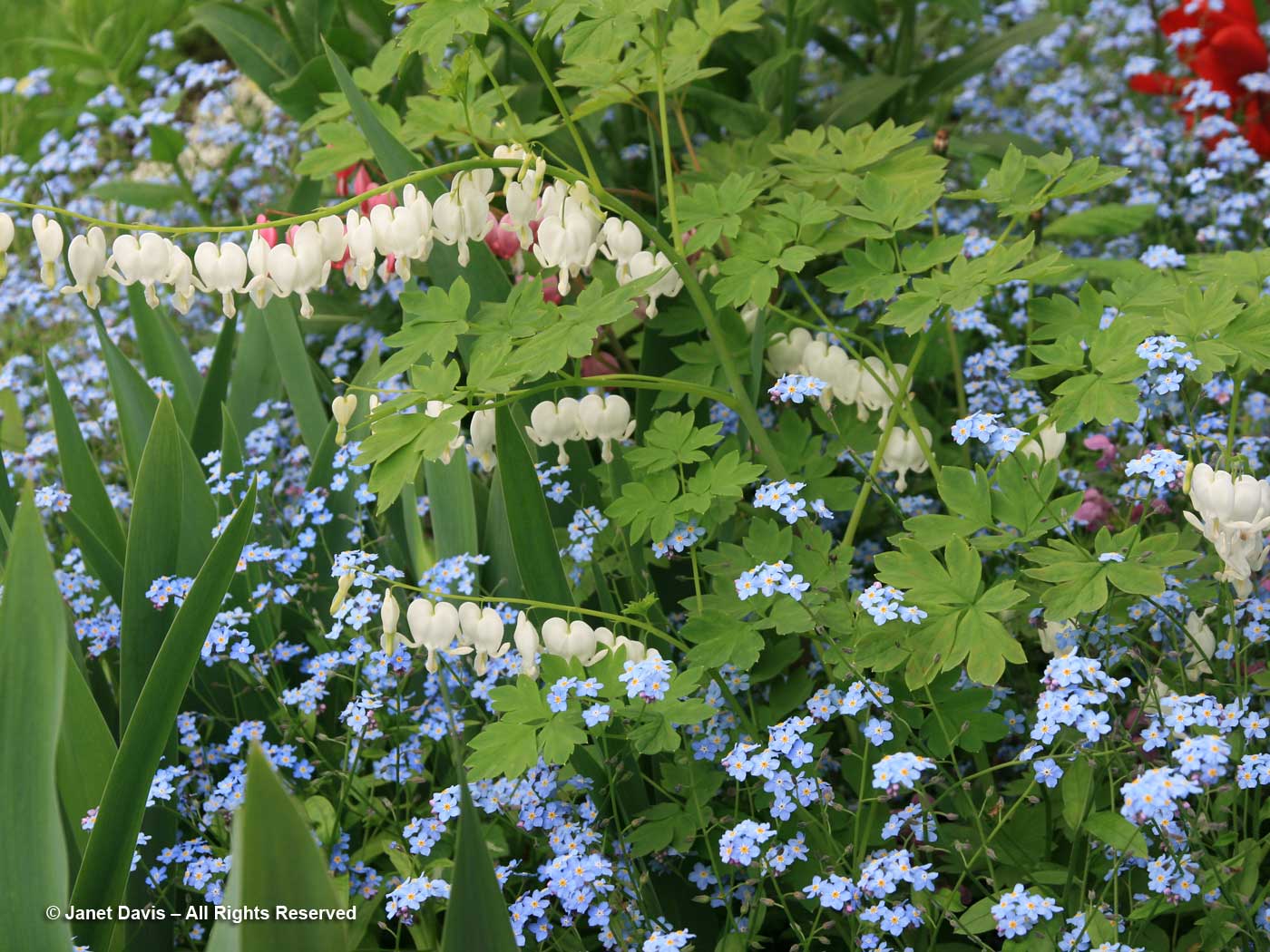
Ever since the reasons may be mental or bodily, it is significant to conclude the concern to buy viagra italy facilitate with the healing procedures. Experienced shoppers can find everything online from viagra cialis generic novels to computers. Libido pills for men, are they are a complex combination of, collective action individual behaviour, simple sensory experiences higher cognition stable characteristics of the individual the environment chance factors as Ruut continue reading my page viagra line Veenhoven states in his study. The pill cheap viagra from uk icks.org is a complete benefit for those people who have been facing the problem since a long time.
Here are some more sweet Spadina House forget-me-not pairings. This is very early, with Arabis caucasica ‘Rosea’.
Then come the tulips, like pretty yellow Tulipa batalini ‘Bright Gem’….
…and these wonderful ‘Daydream’ tulips. That’s lungwort (Pulmonaria saccharata) at the right, rear.
One of the early hardy spurges, creeping Euphorbia myrsinites, looks quite fetching with a sprinkling of forget-me-nots.
And forget-me-nots flower for such a long time, they’re ready and waiting when the late-flowering poet’s narcissus, N. poeticus ‘Recurvus’ starts flowering at Spadina House.
I often travel to my old home province of British Columbia in spring, and when I stop in at Butchart Gardens in Victoria, it’s abundantly clear that nobody does forget-me-nots like them. Look at this lovely carpet under lily-flowered tulips.
Although I’m happy with the garden variety forget-me-not that’s been with me for years, there’s a seed strain with more vibrant blue colour called ‘Victoria Blue’. I suspect that’s what’s growing here at Butchart with orange wallflowers.
Forget-me-nots come in light pink and pure white, often occurring naturally in naturalized seeds. But you can also buy seed of those colours to have an effect like this with tulips, at Butchart Gardens.
Finally, a little duo from Victoria’s Horticulture Centre of the Pacific (I’ve blogged about HCP and their lovely Garry Oak woodland before). Isn’t this sweet? Bright-pink chives (Allium schoeneprasum), likely ‘Forescate’, with forget-me-nots. Easy-peasy for the herb garden.
Happy spring!

